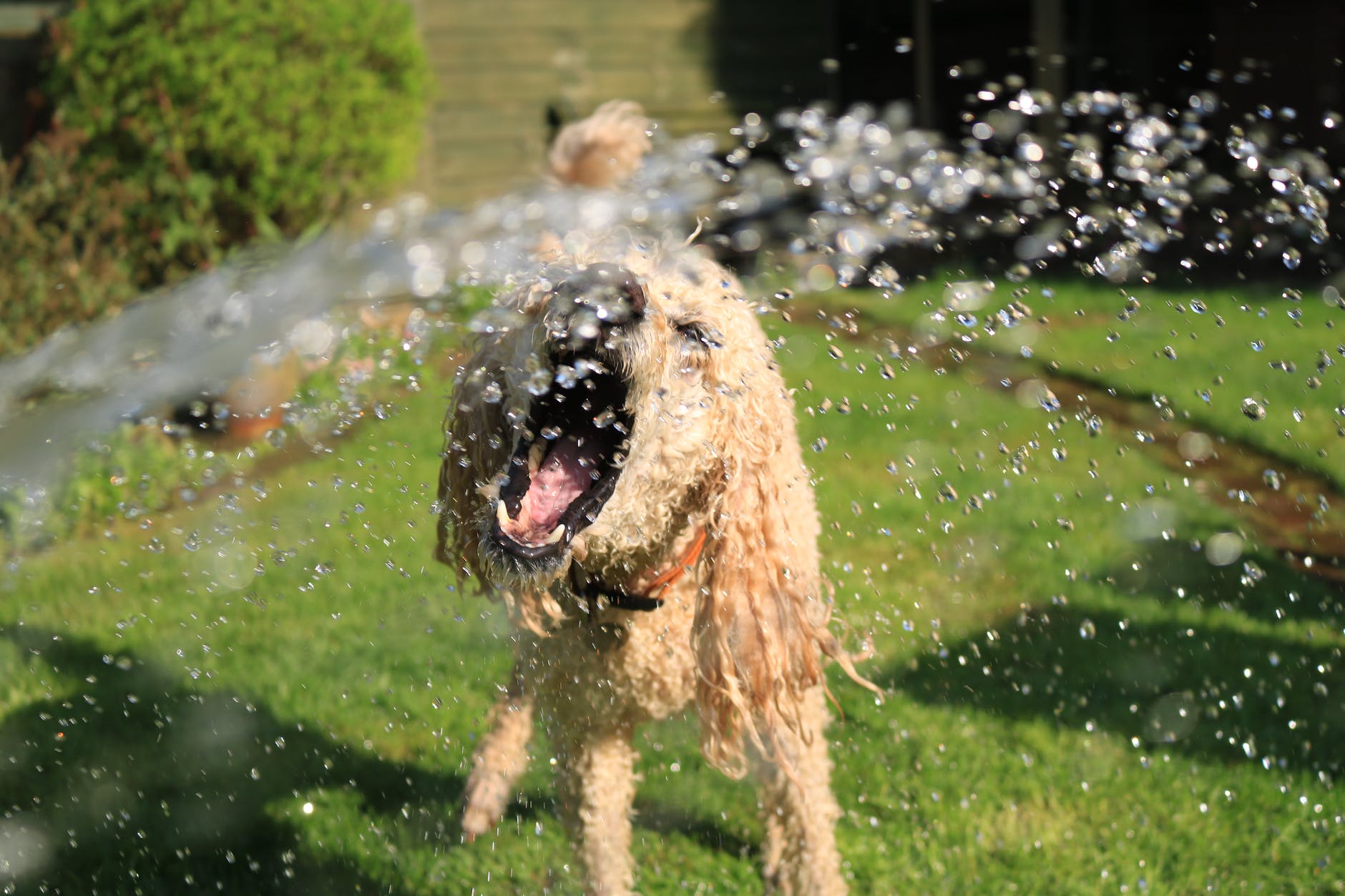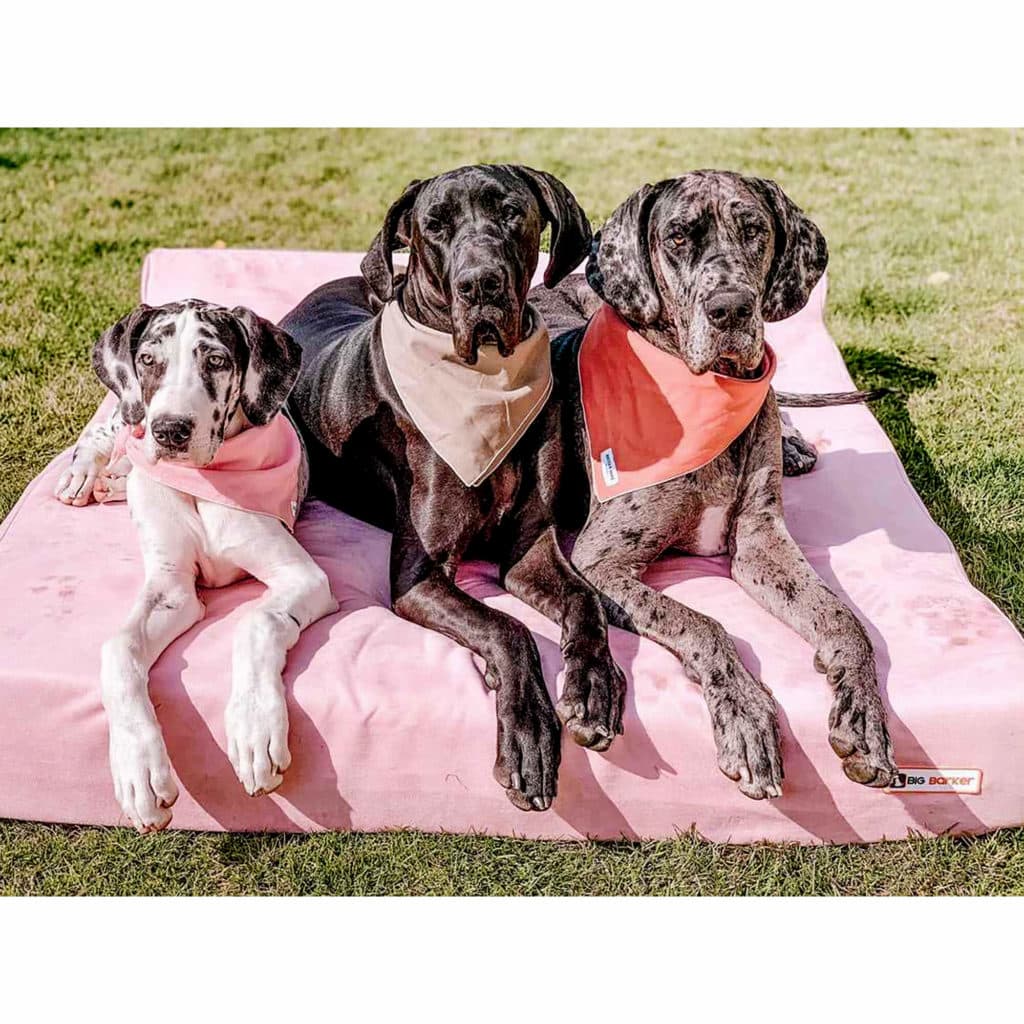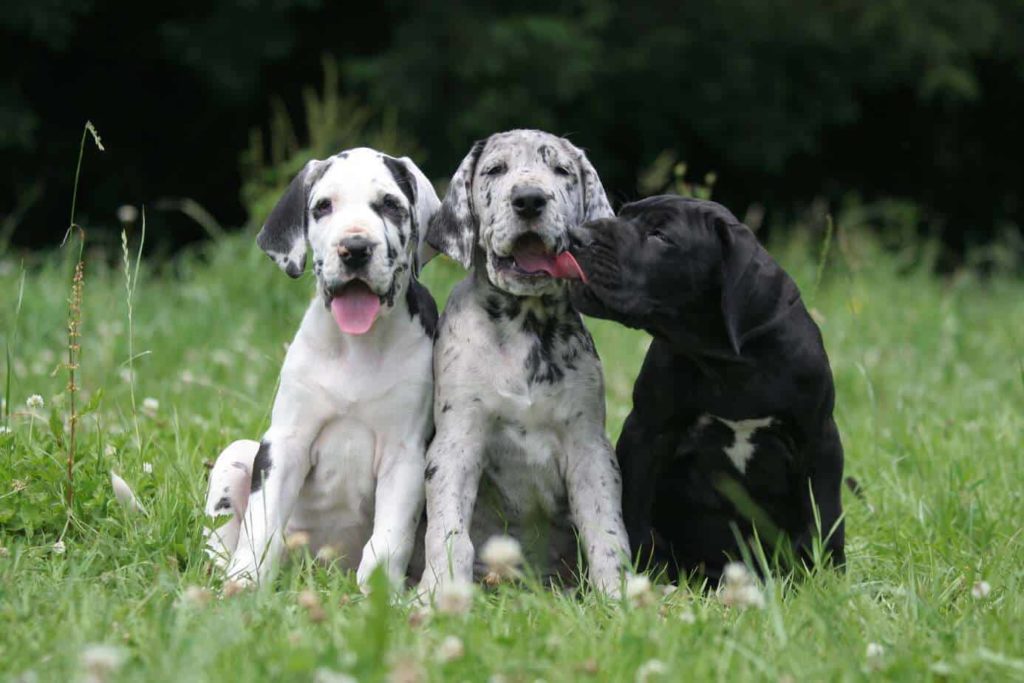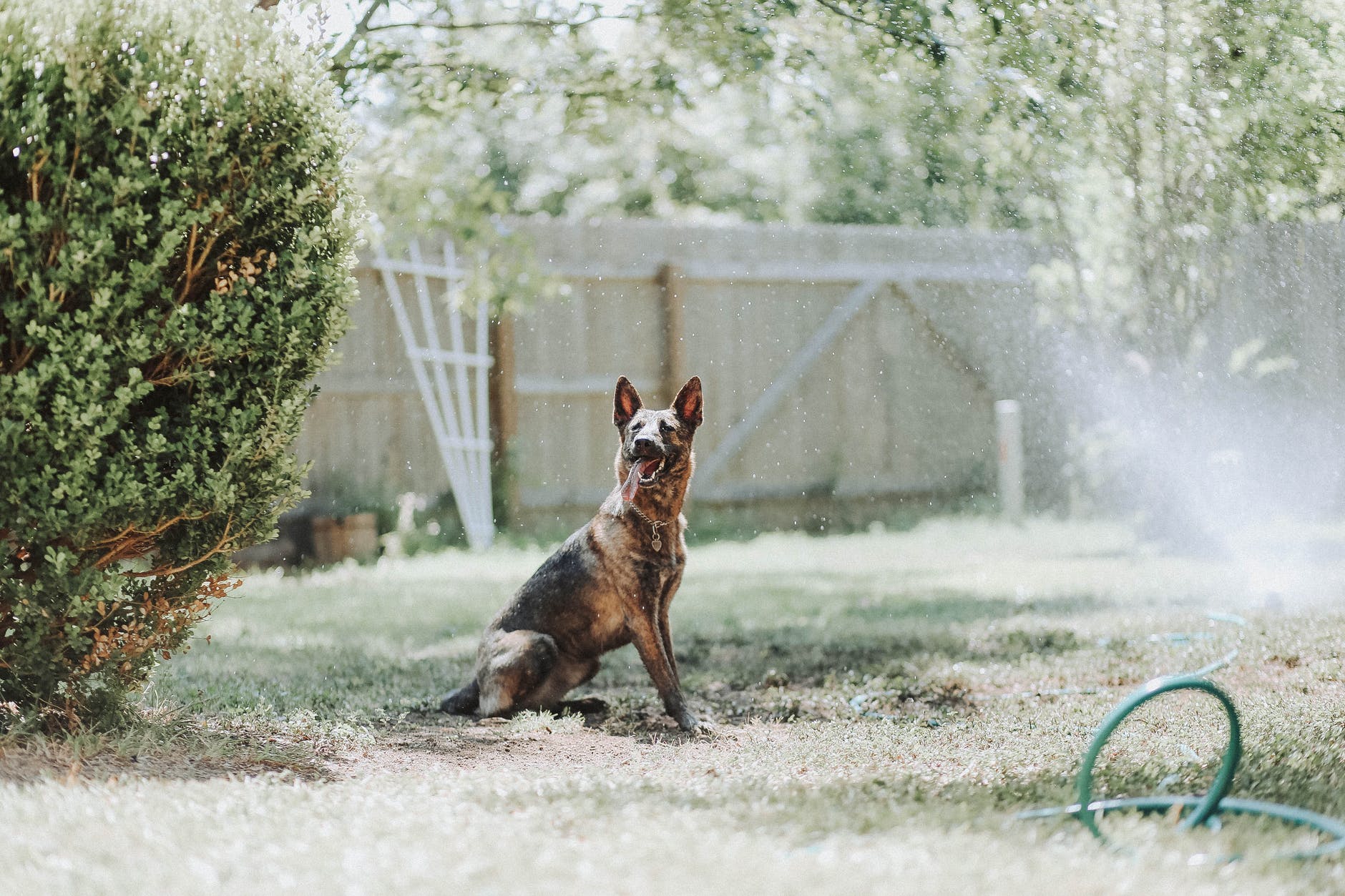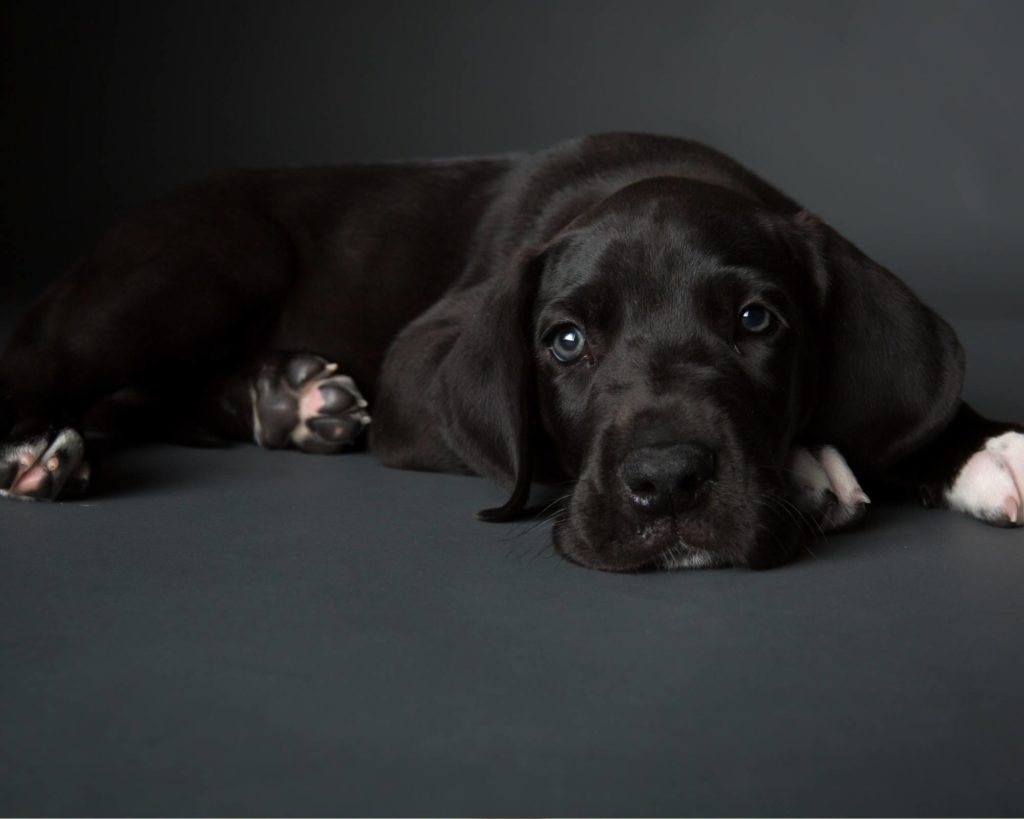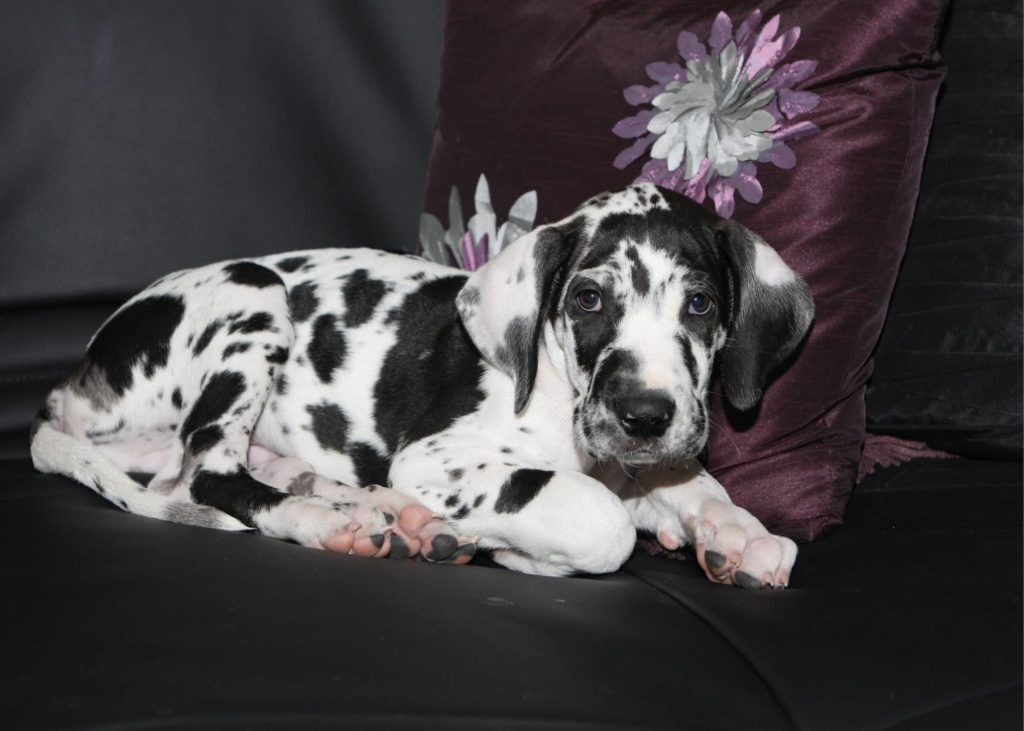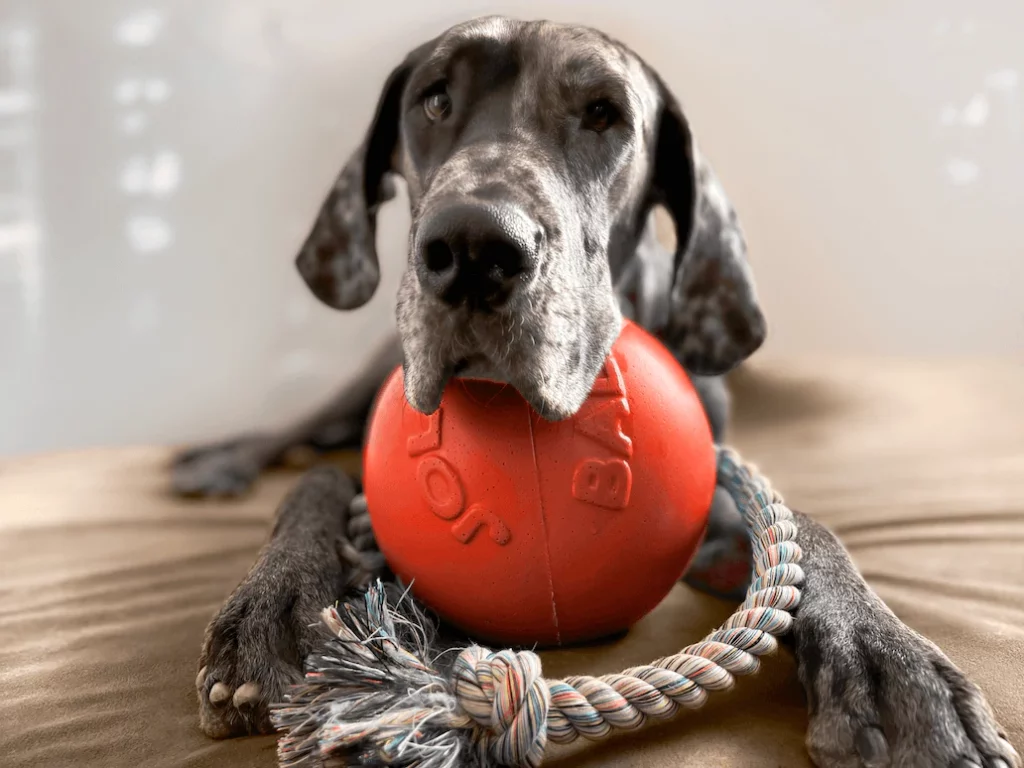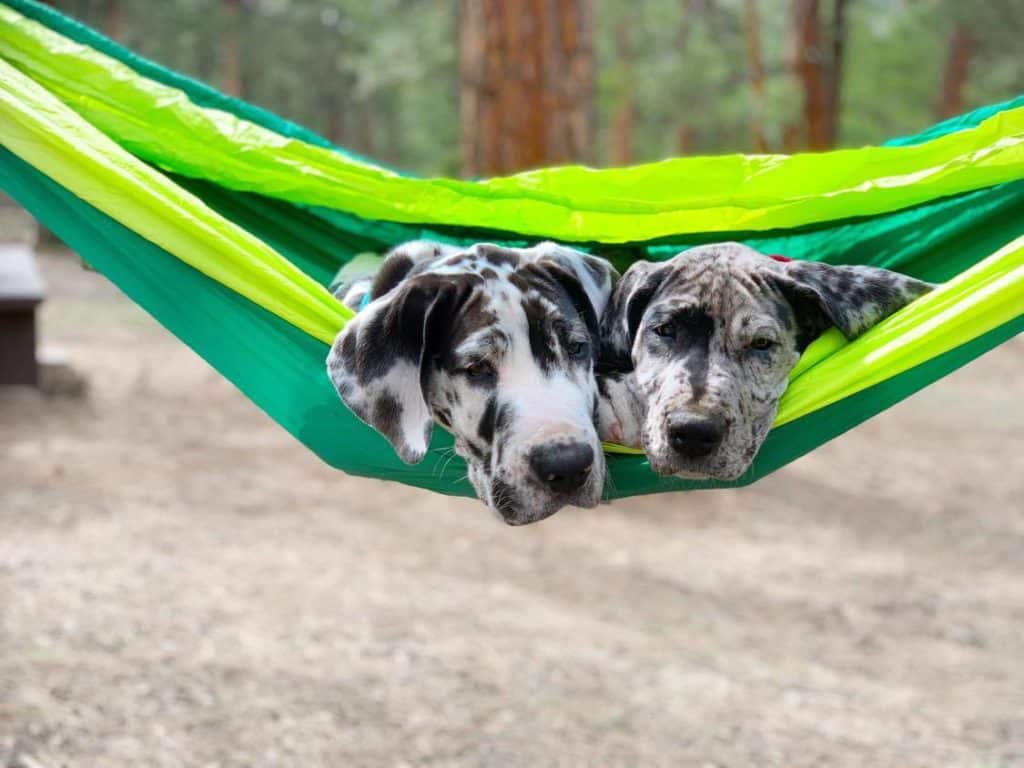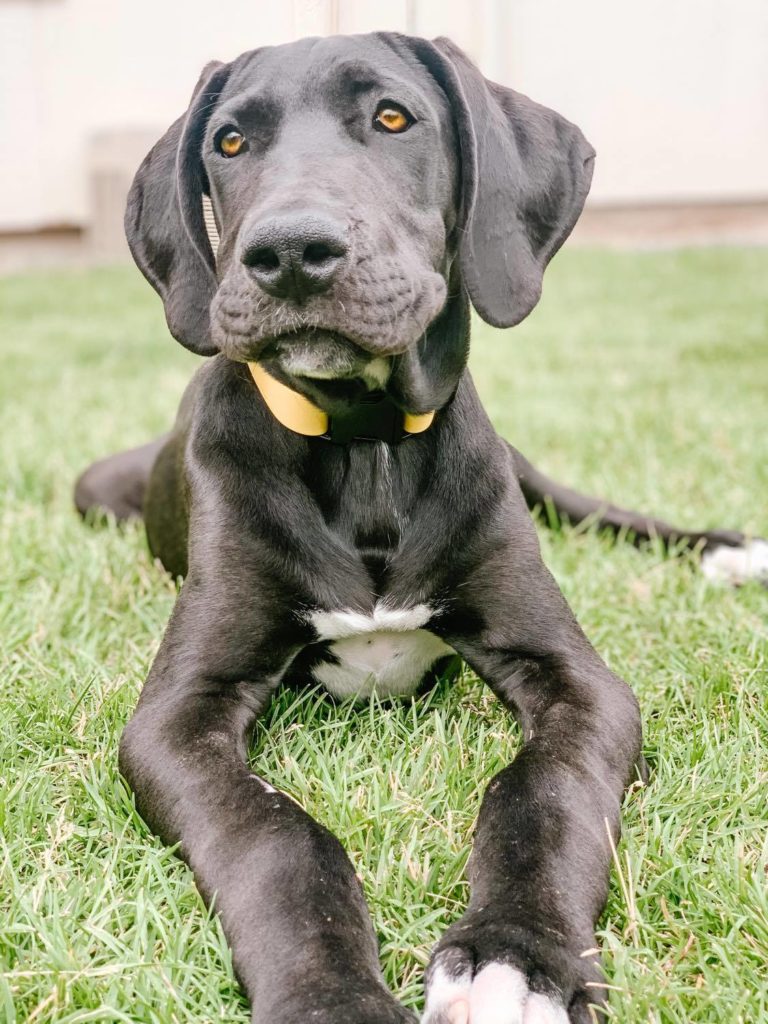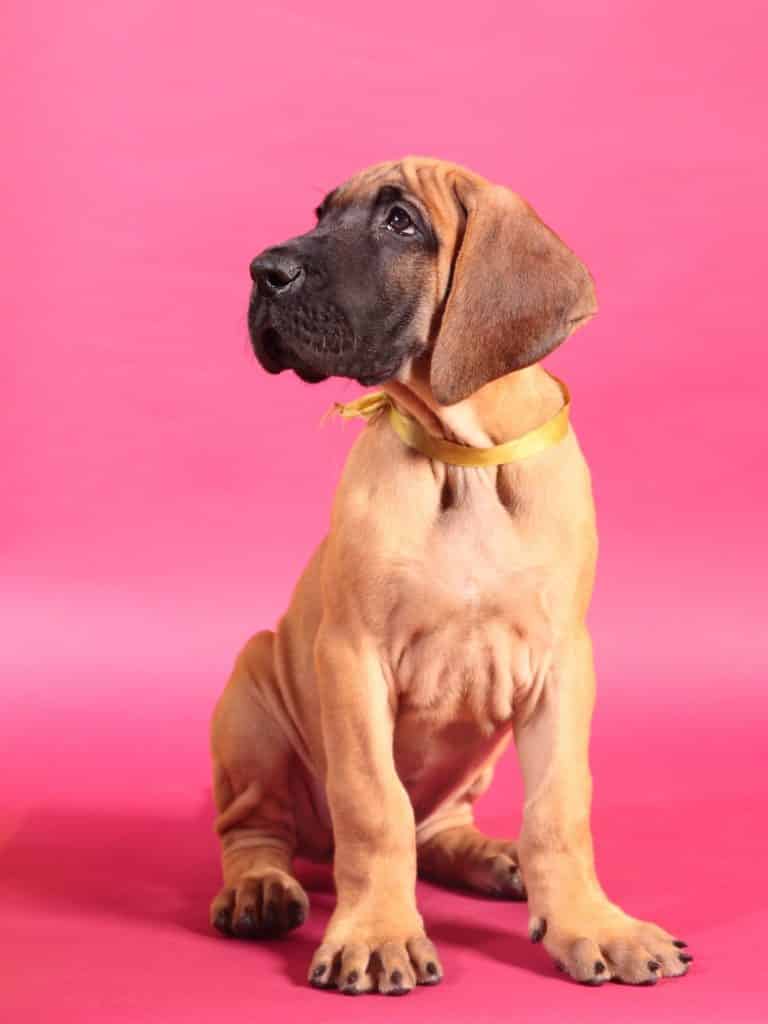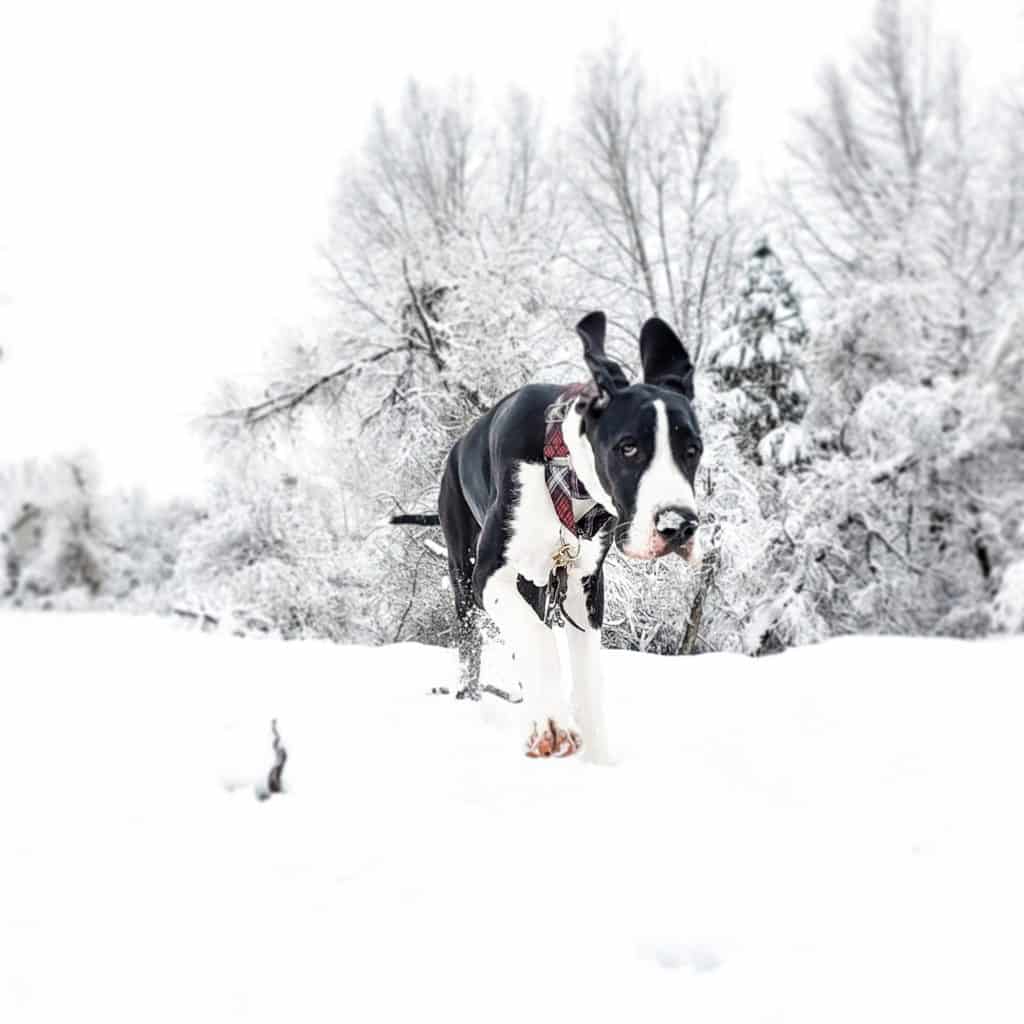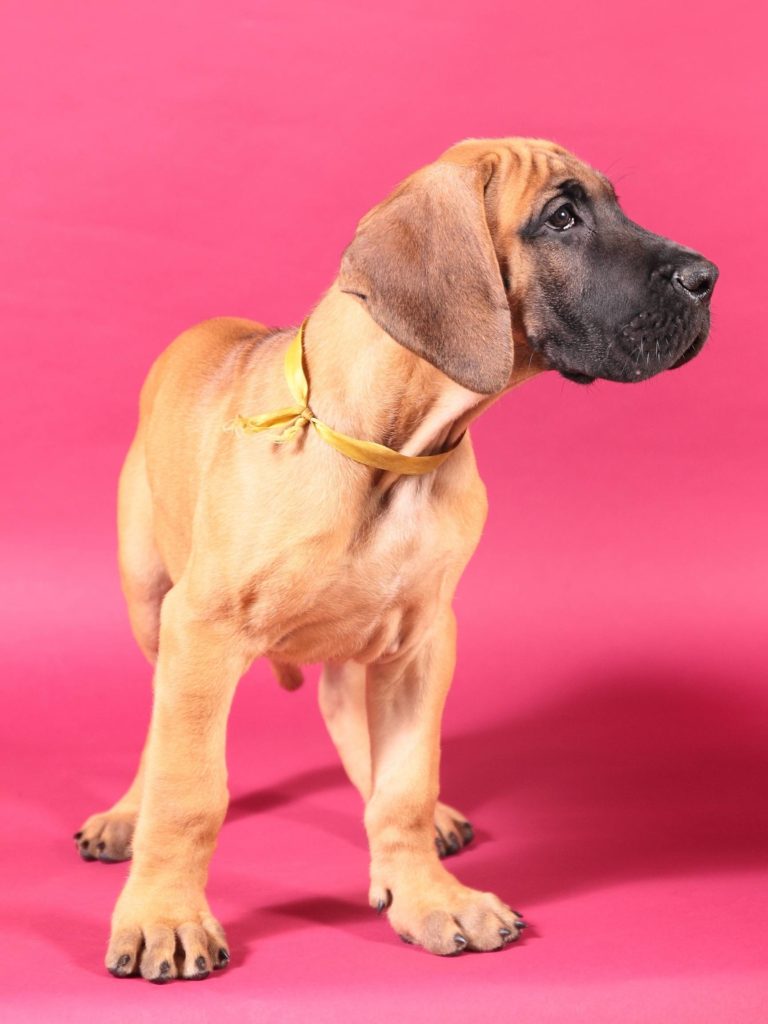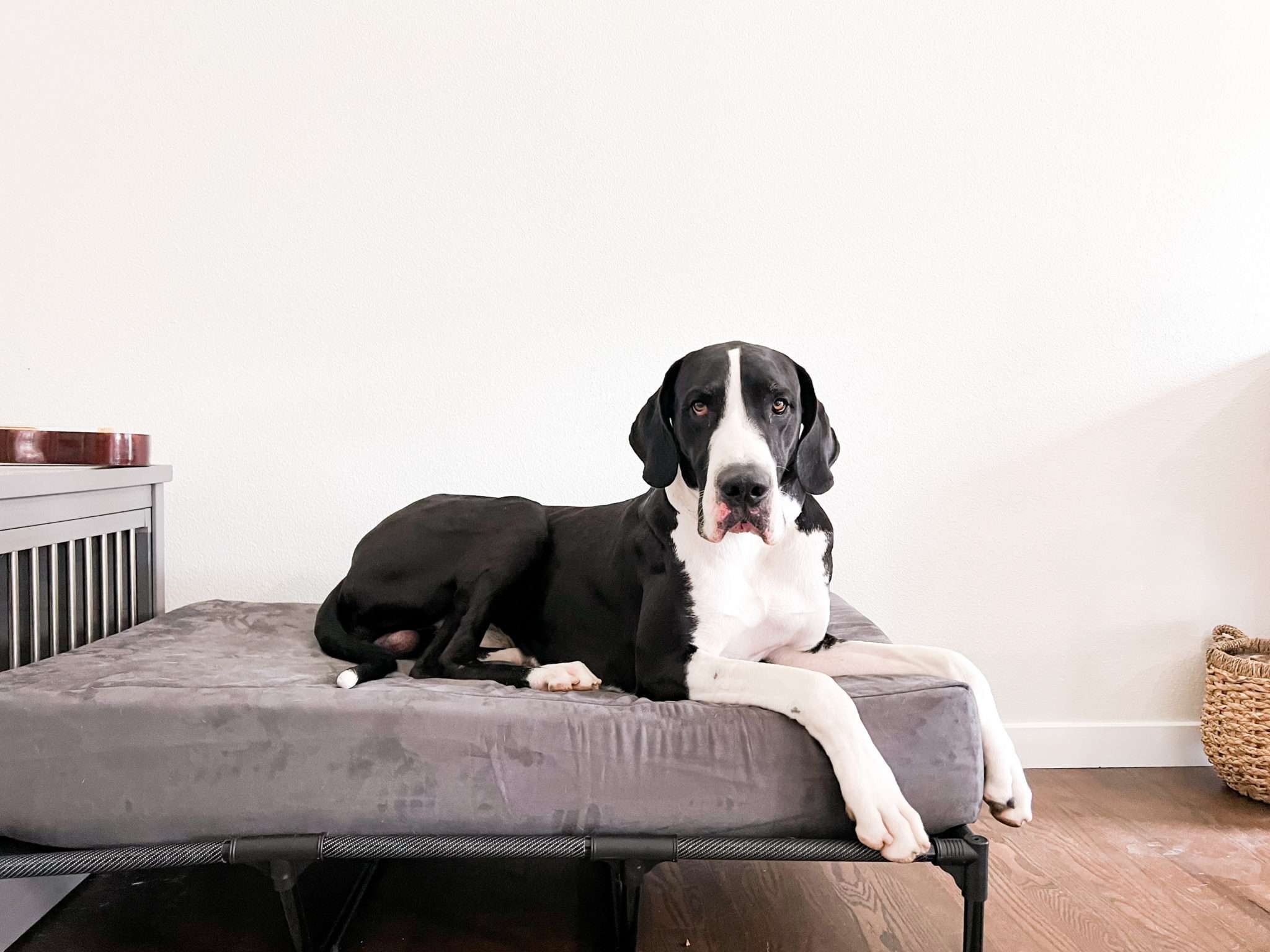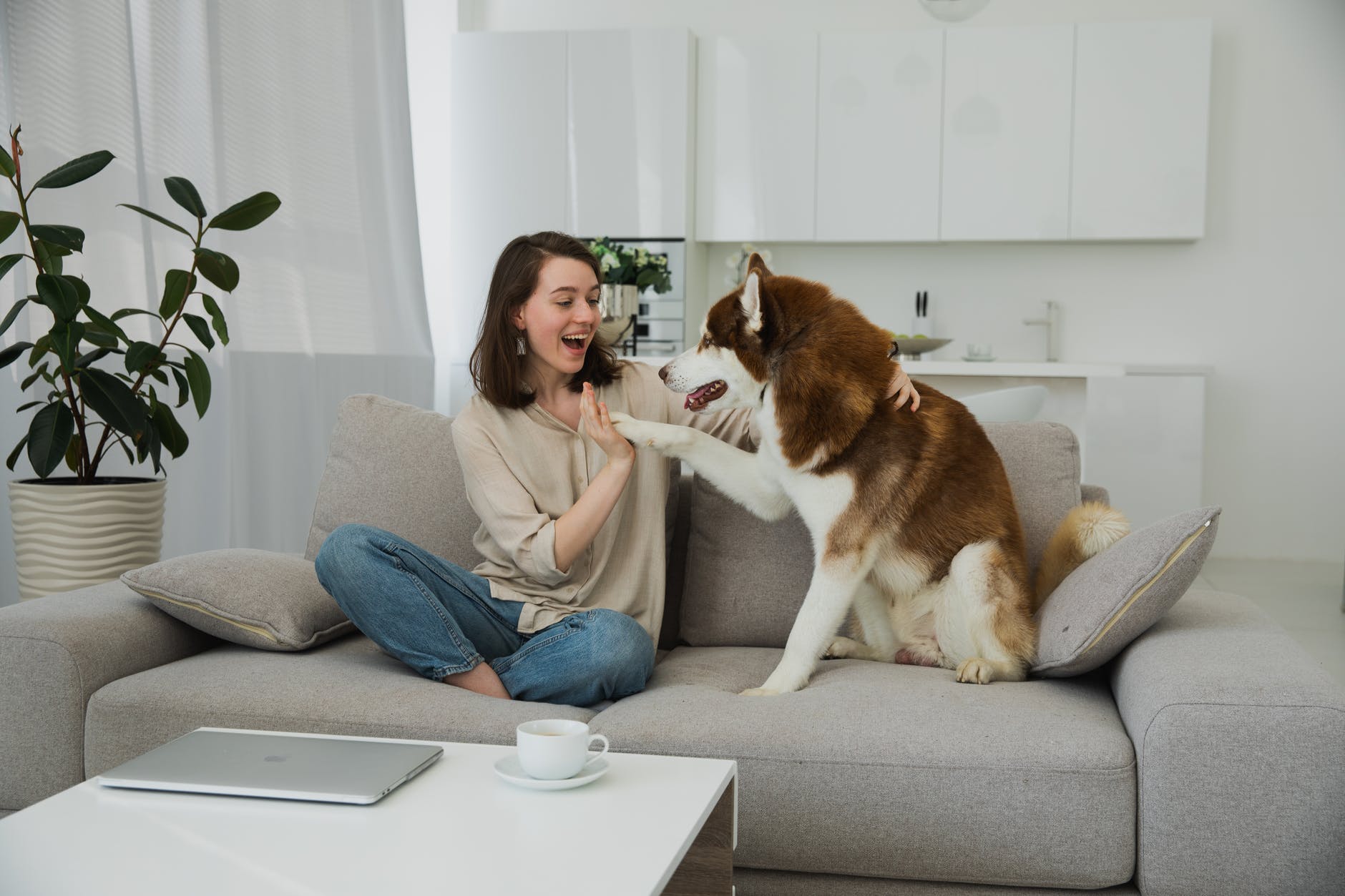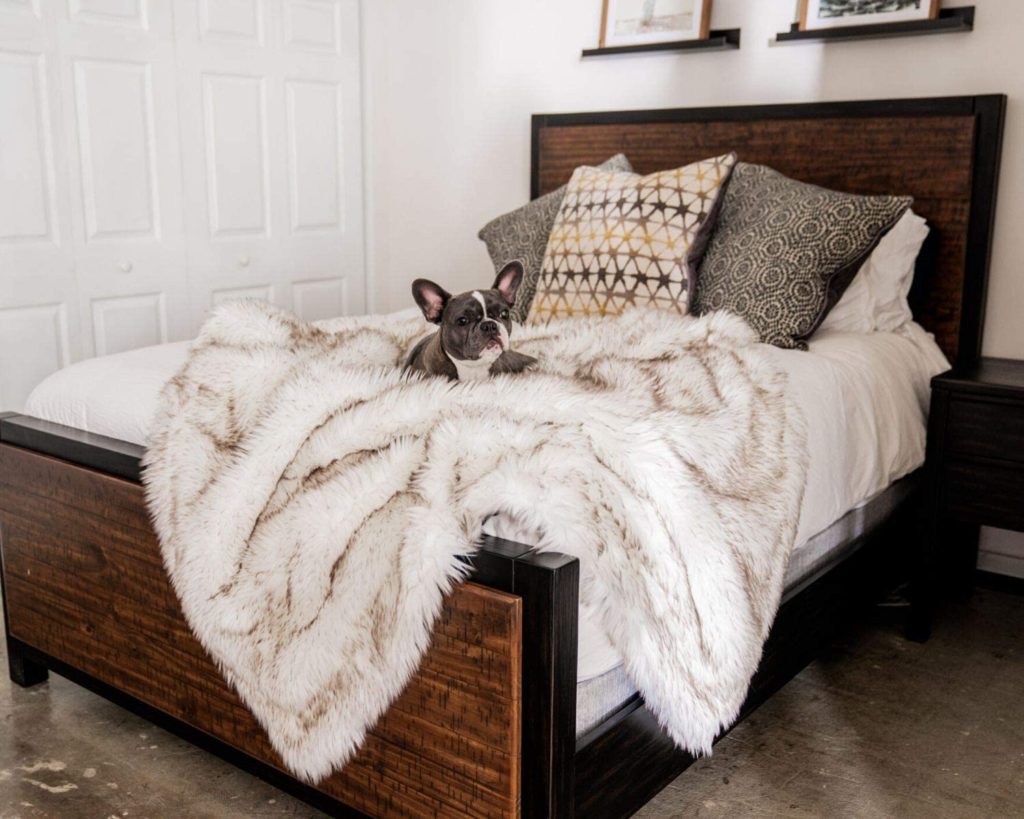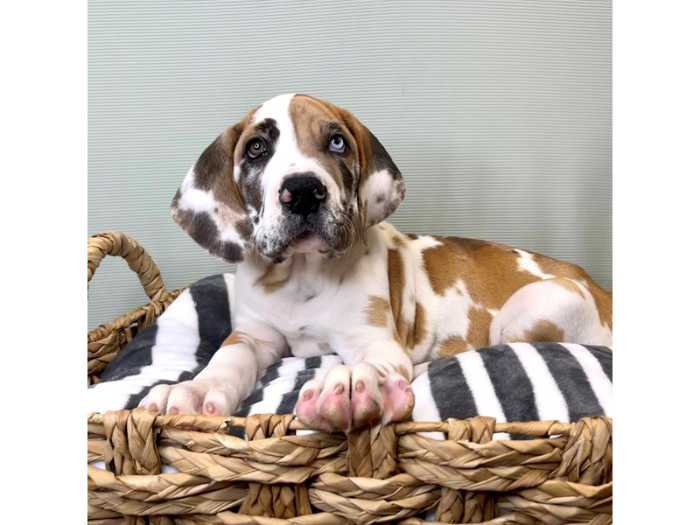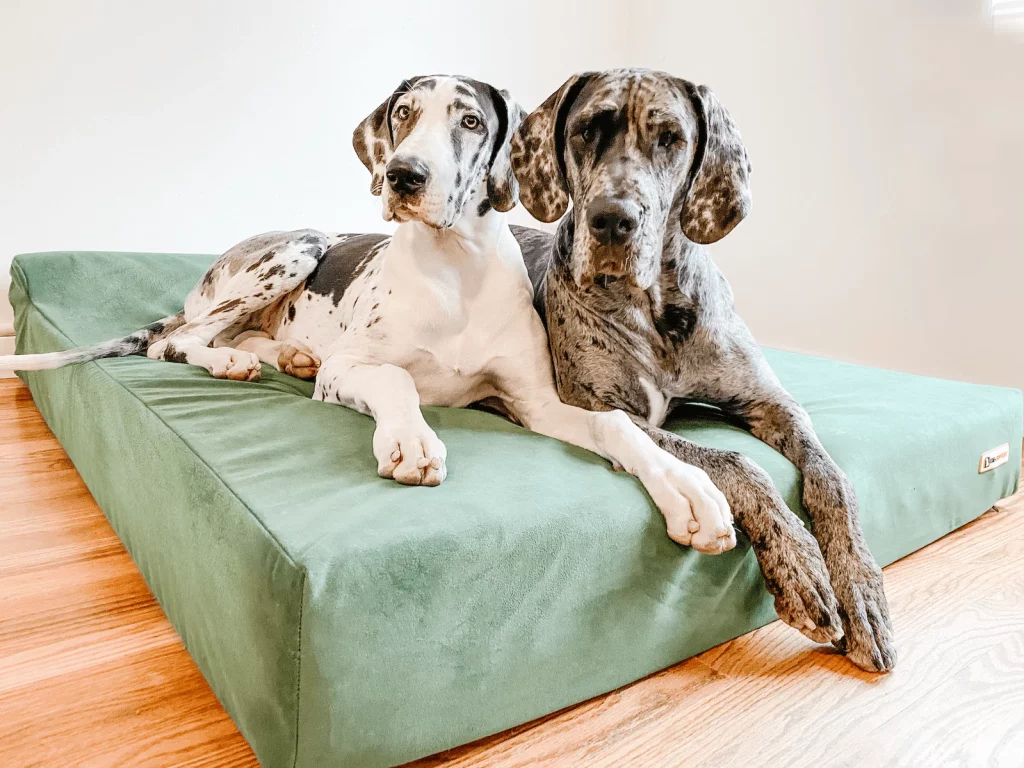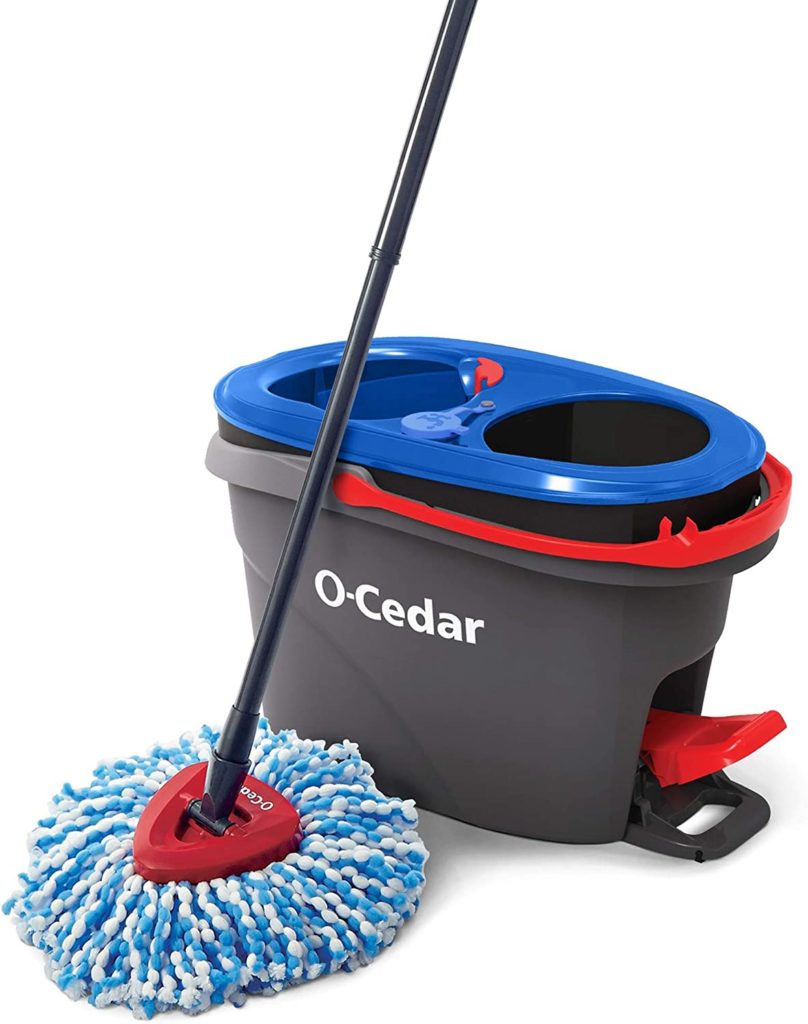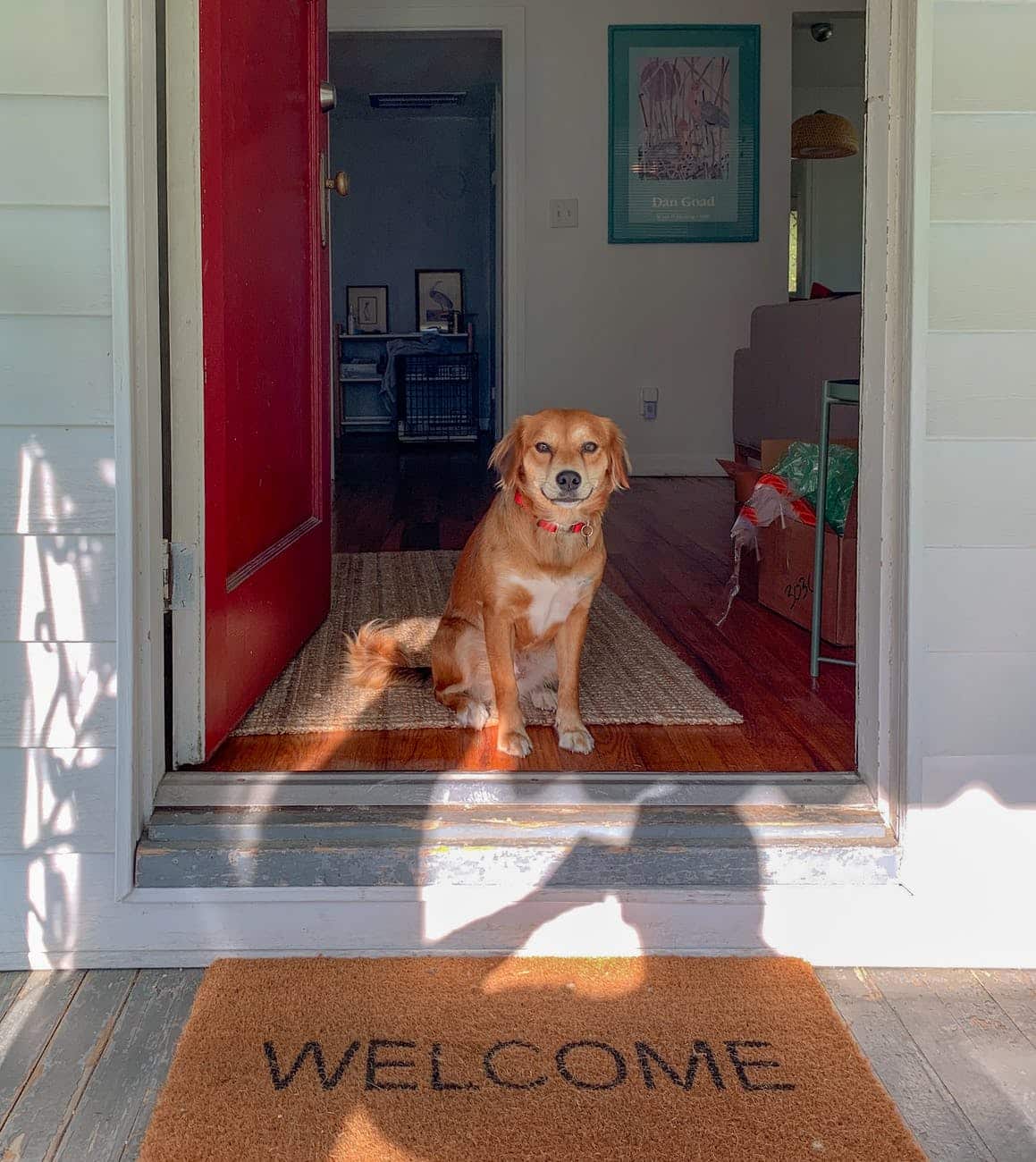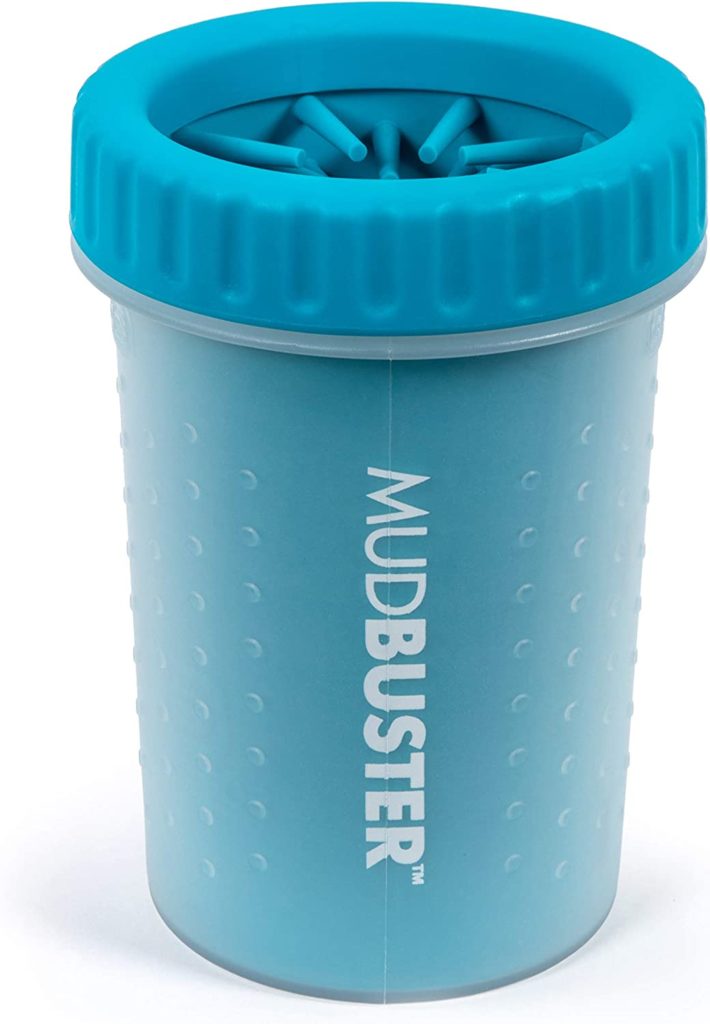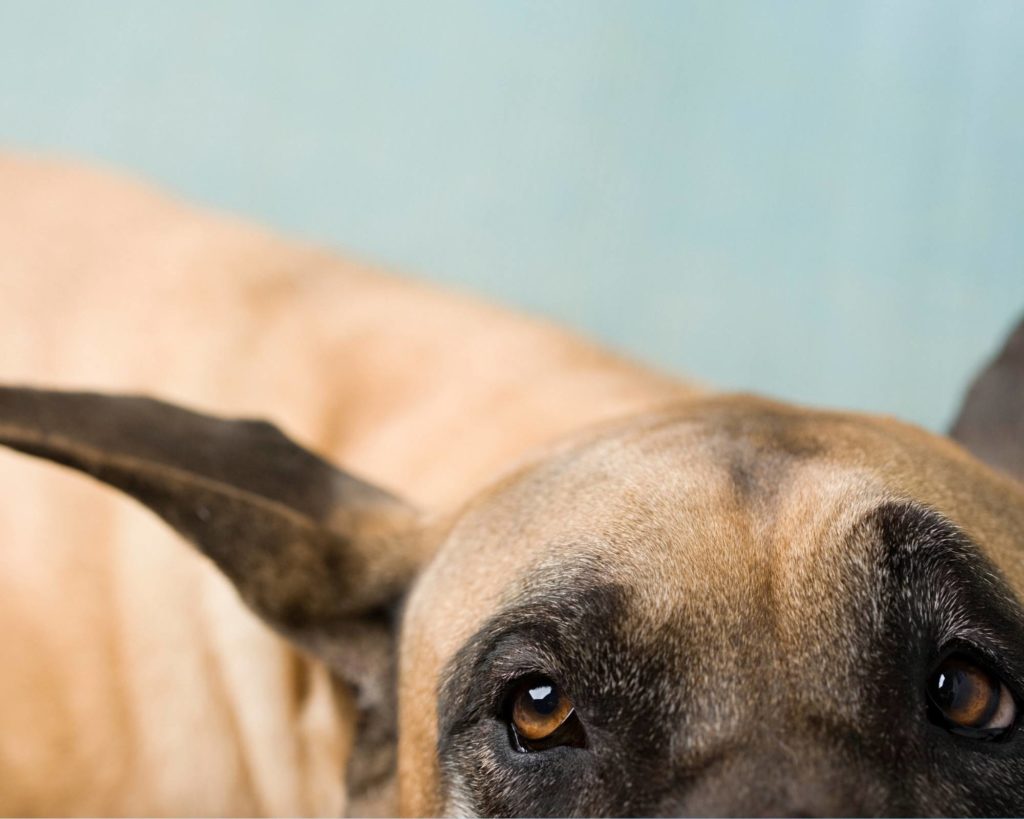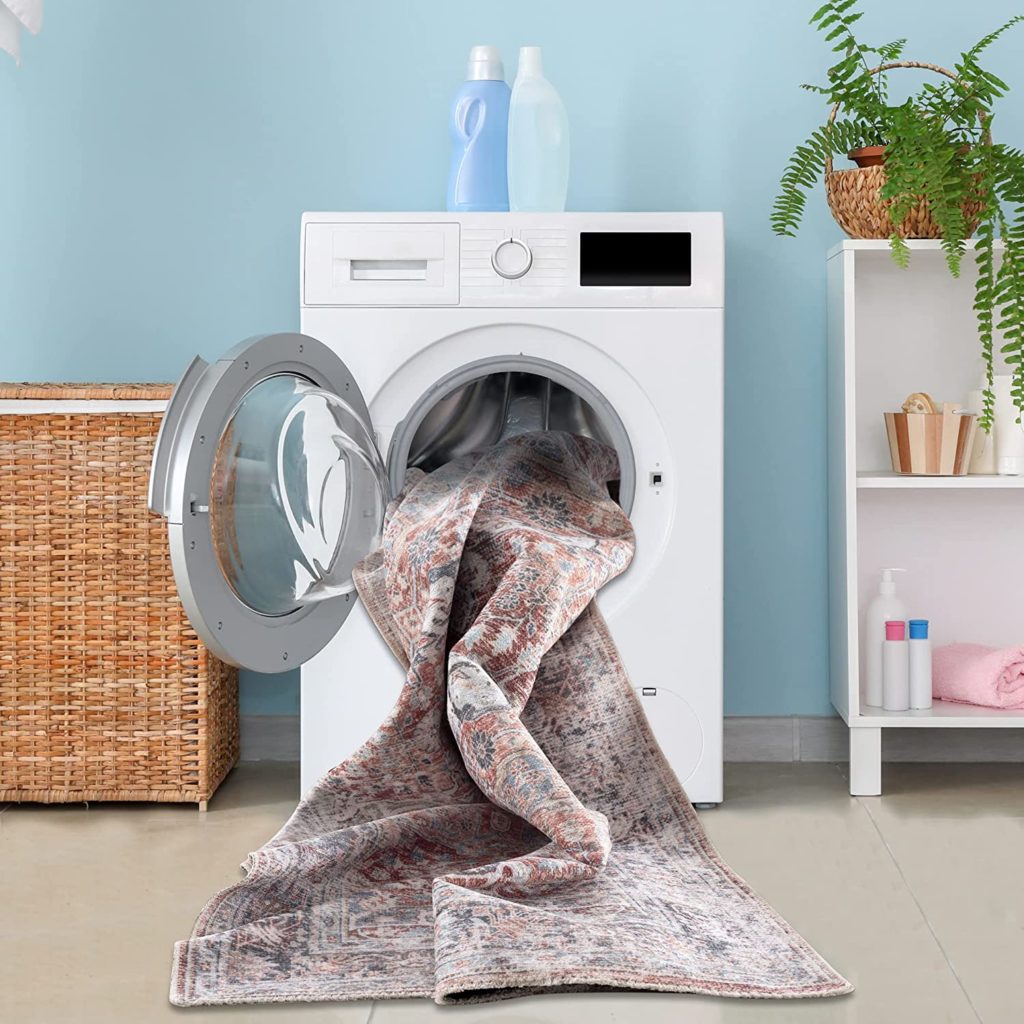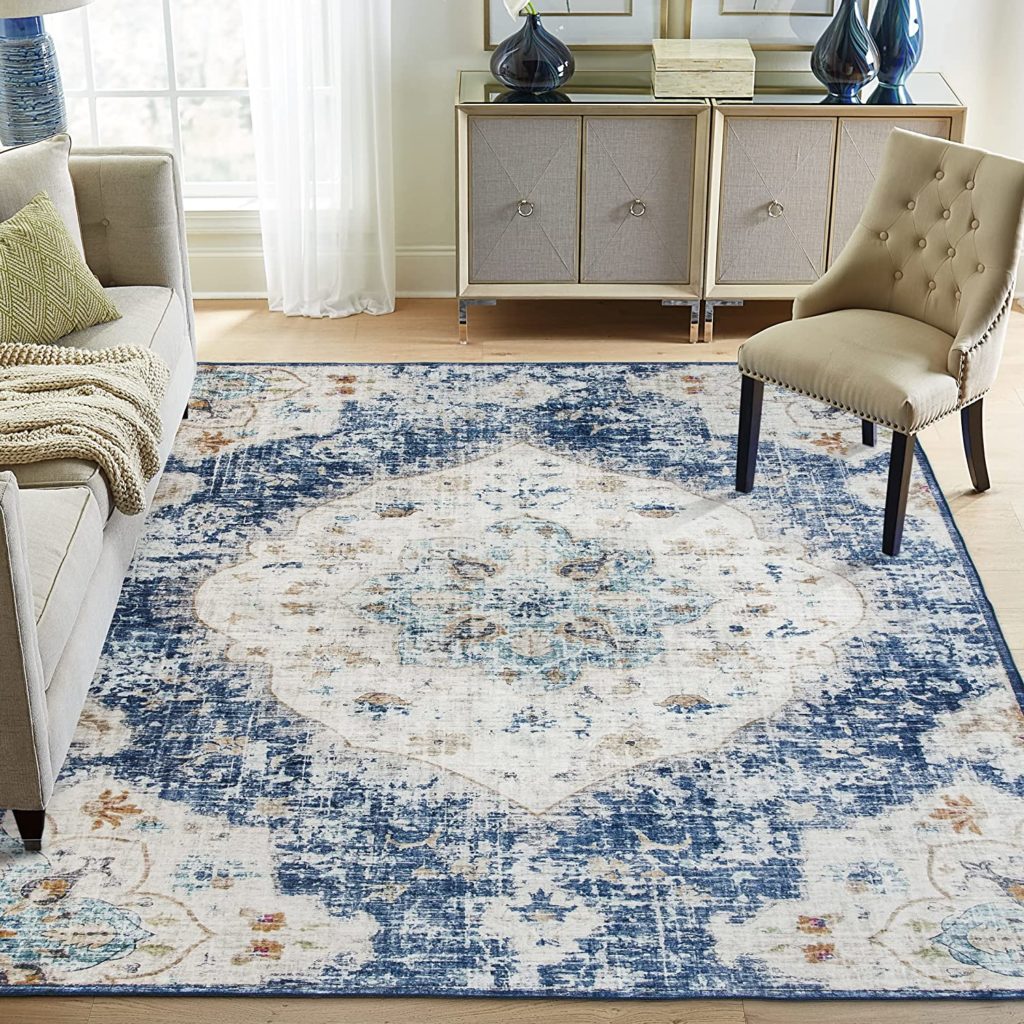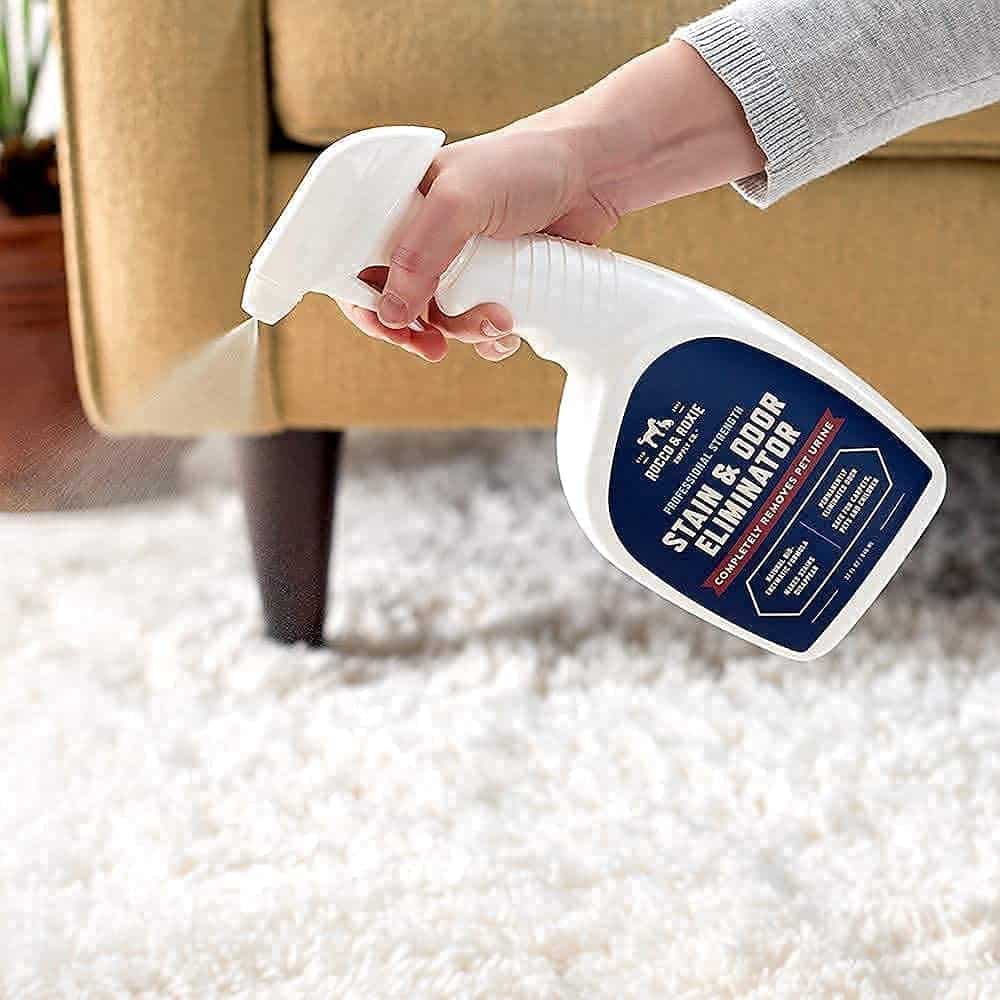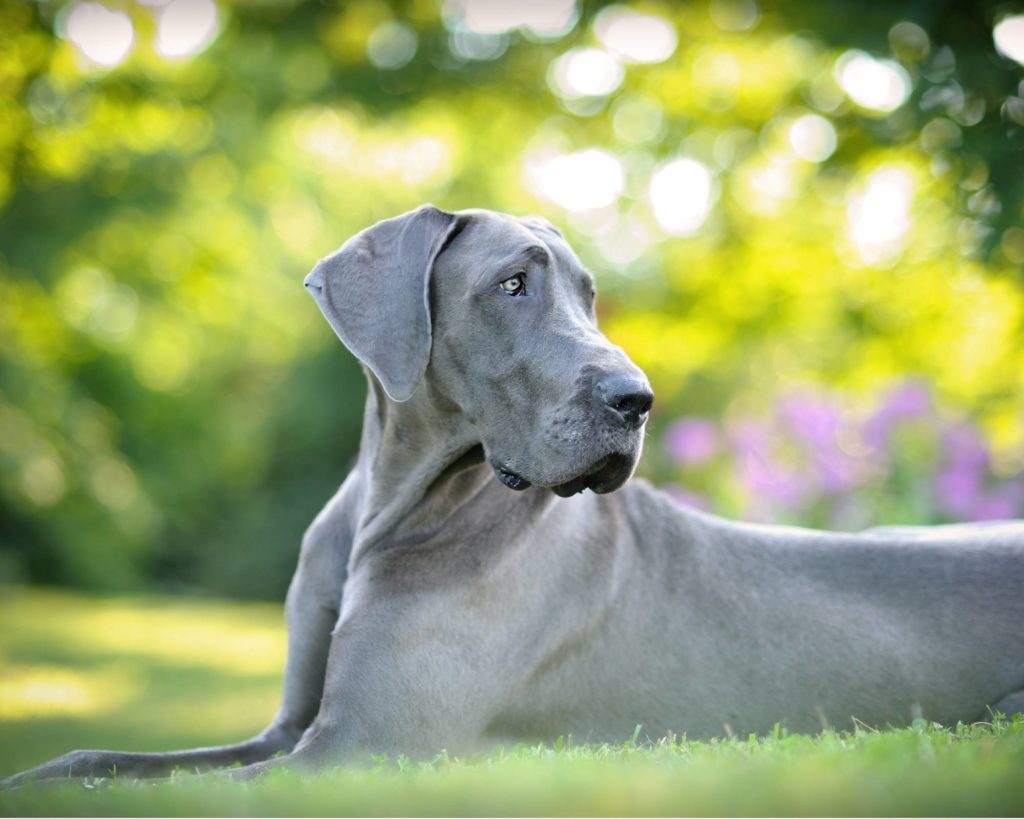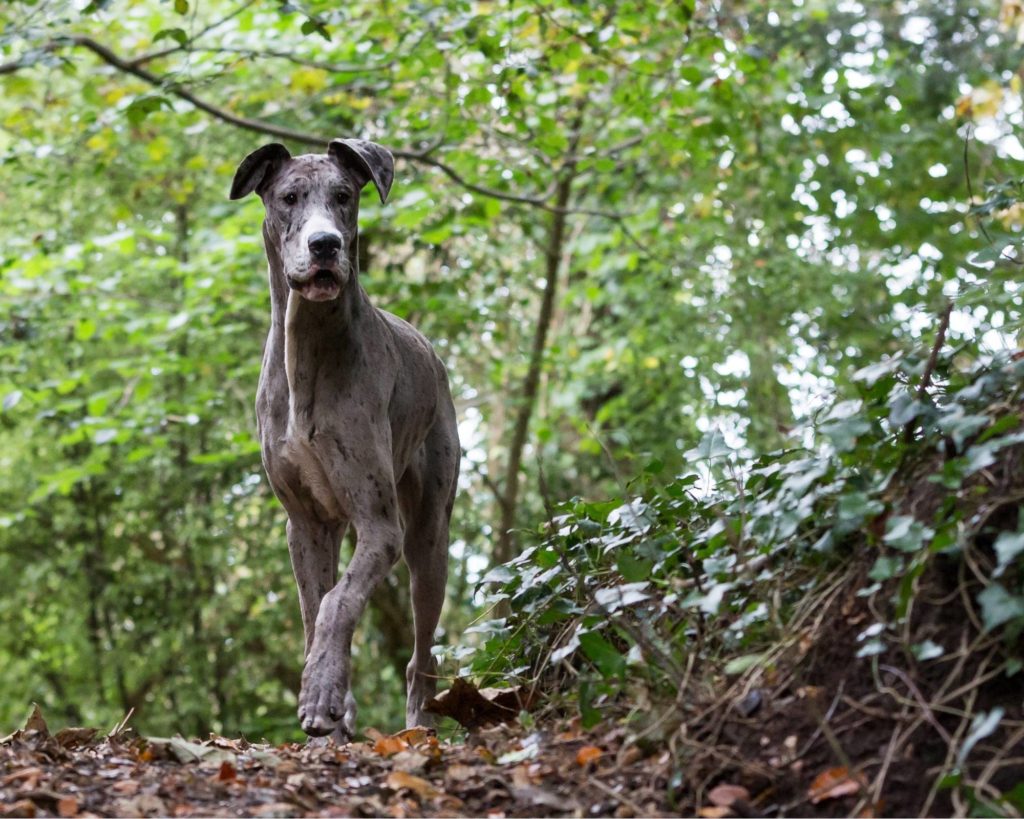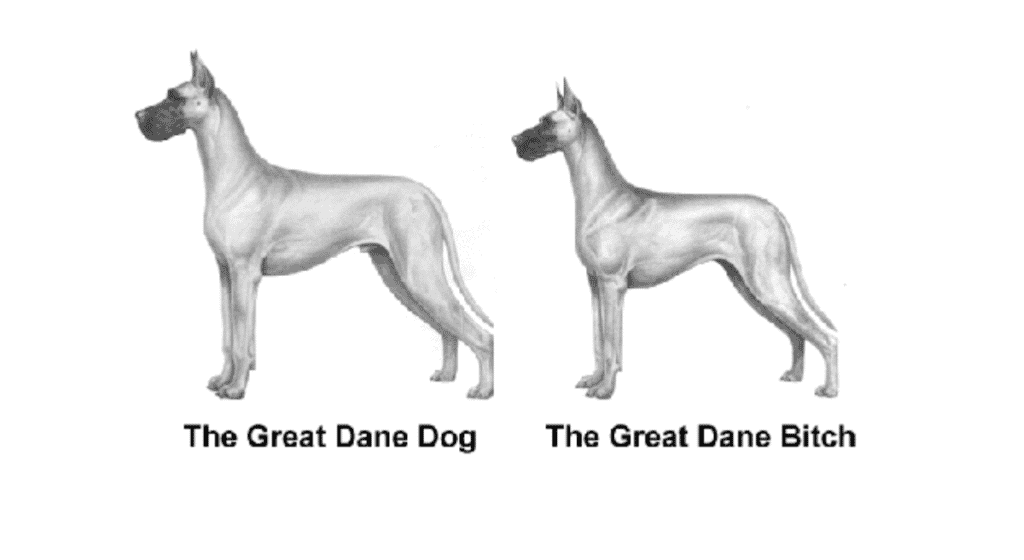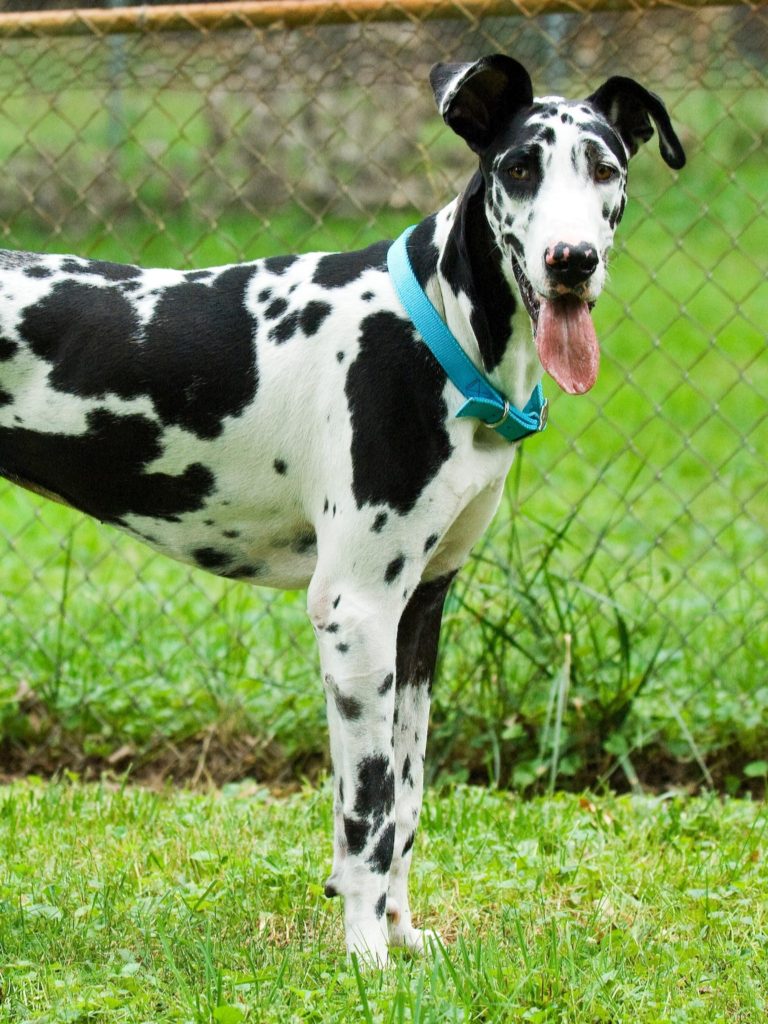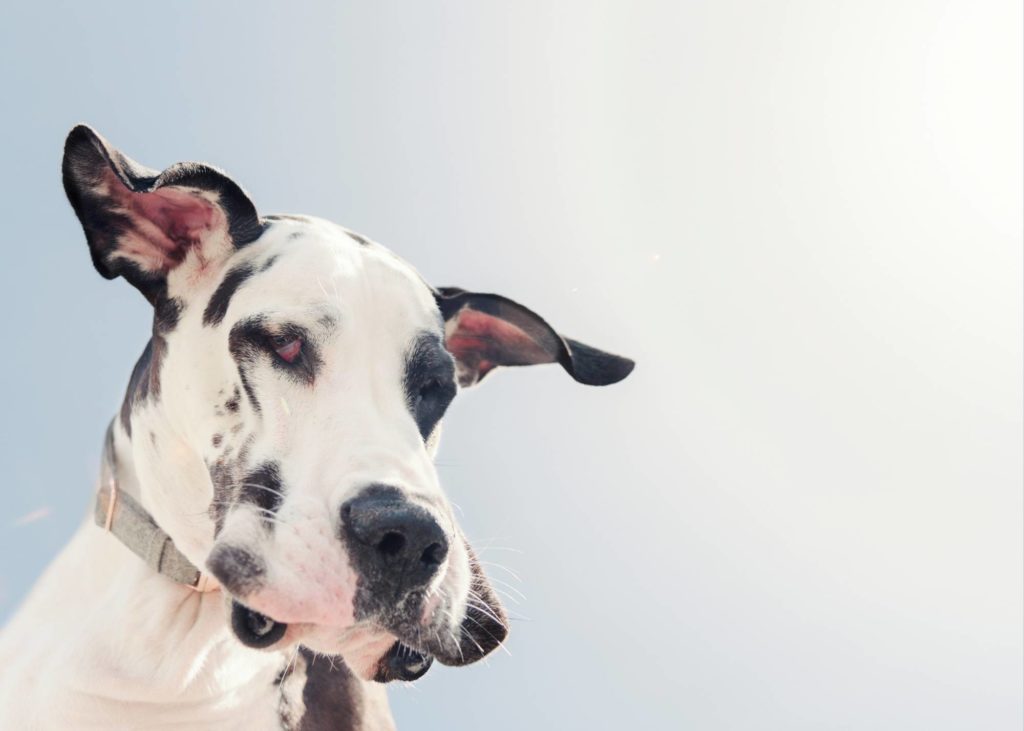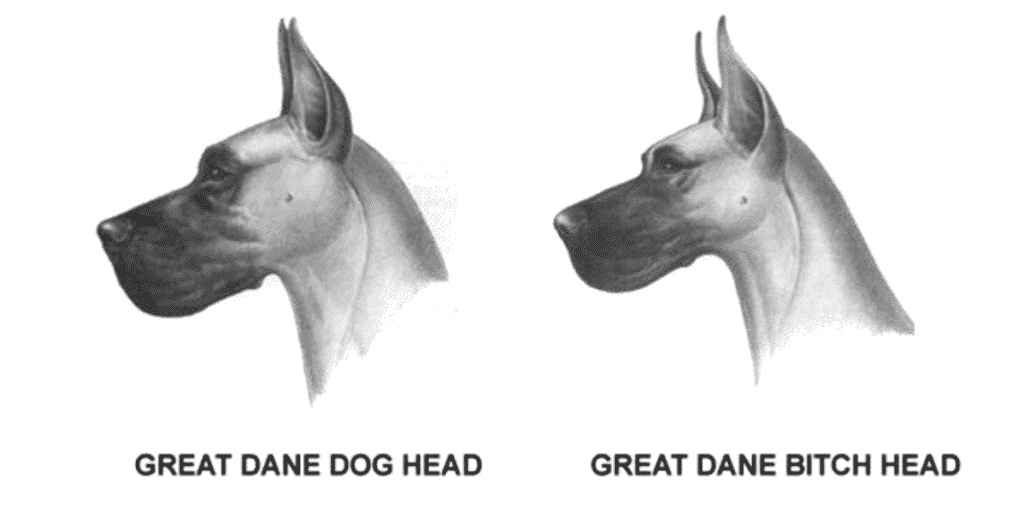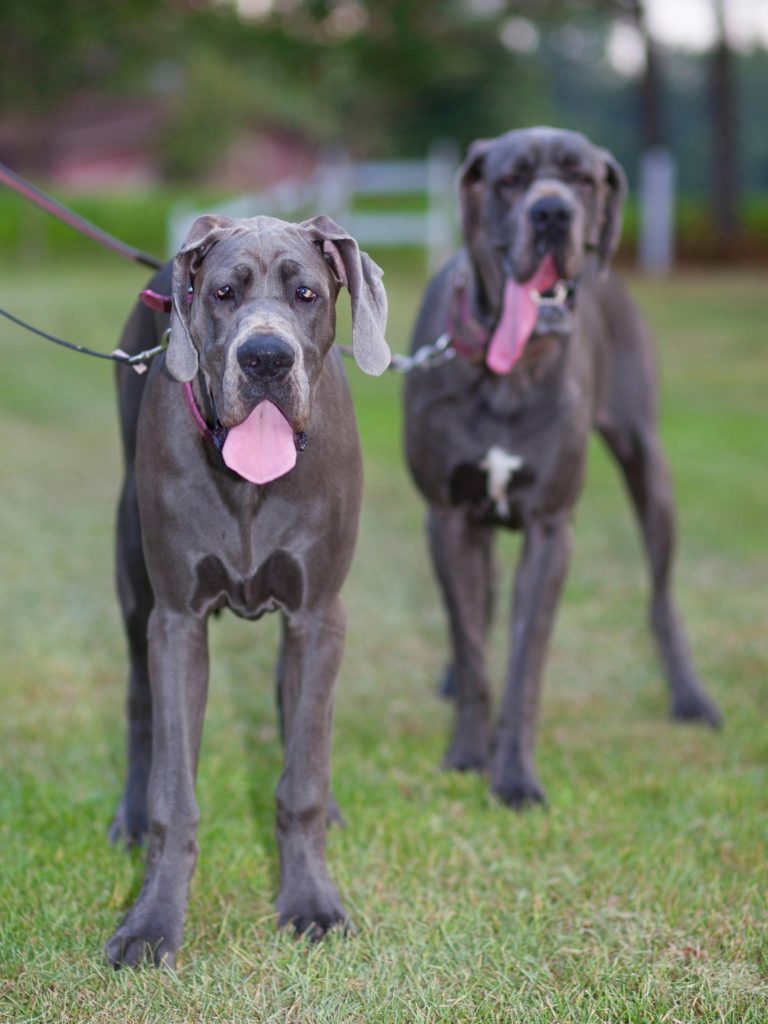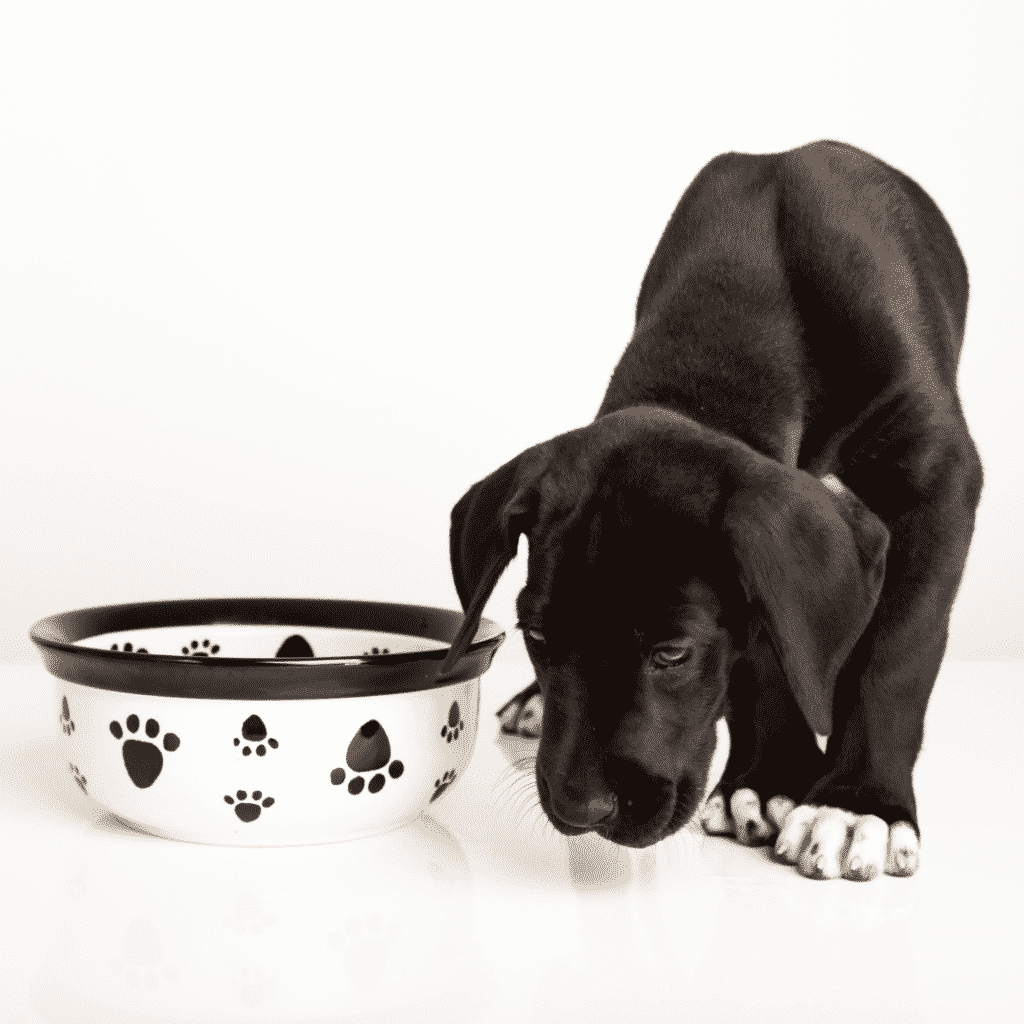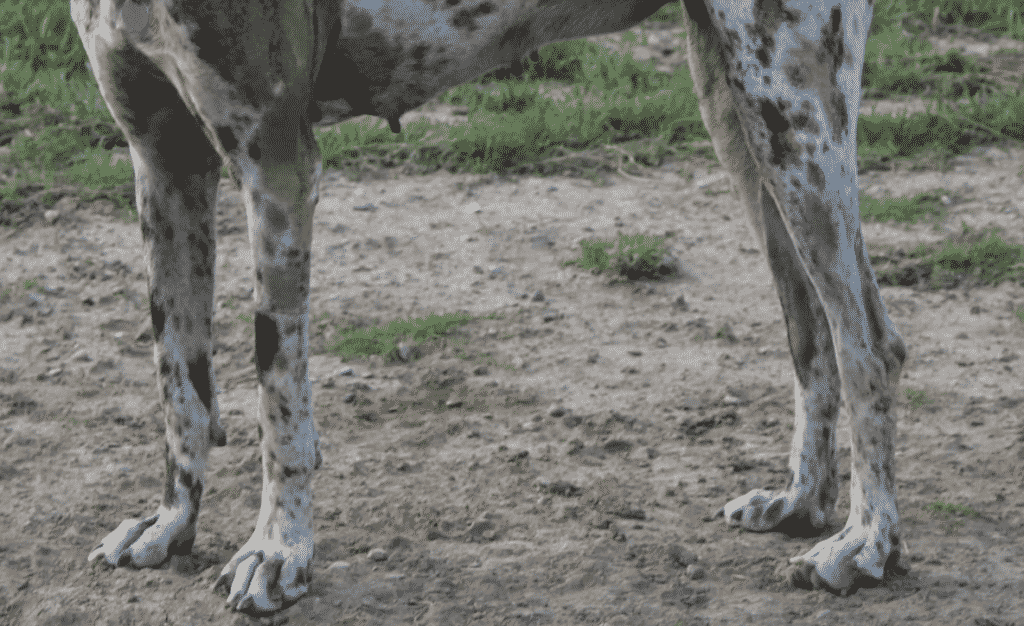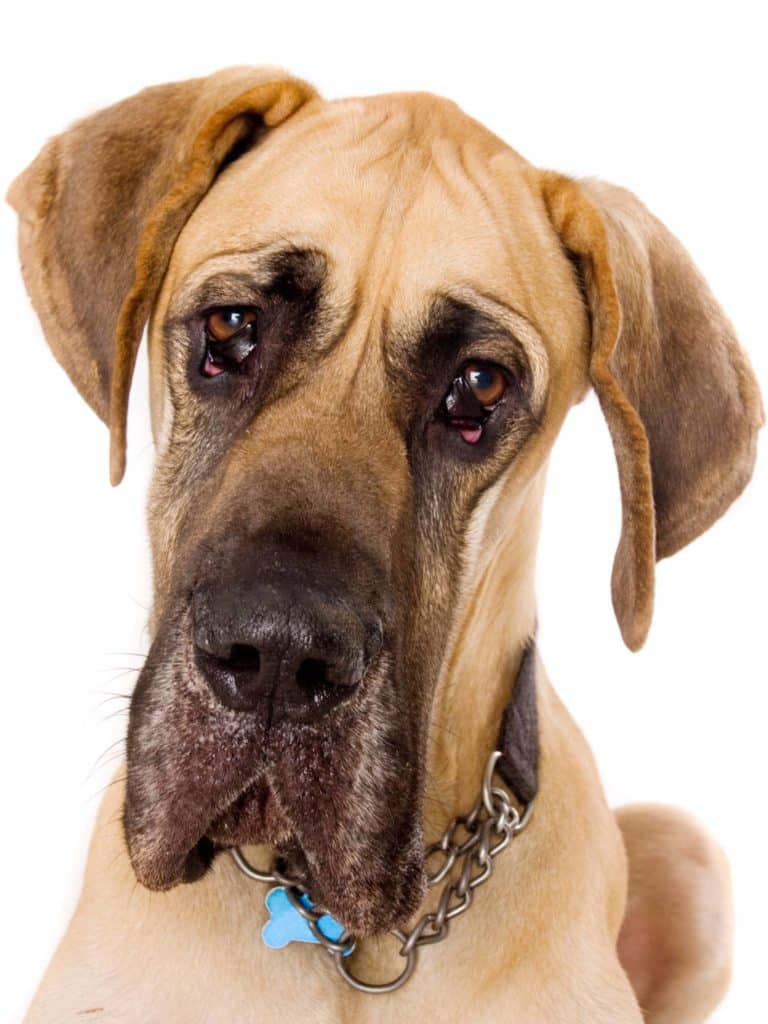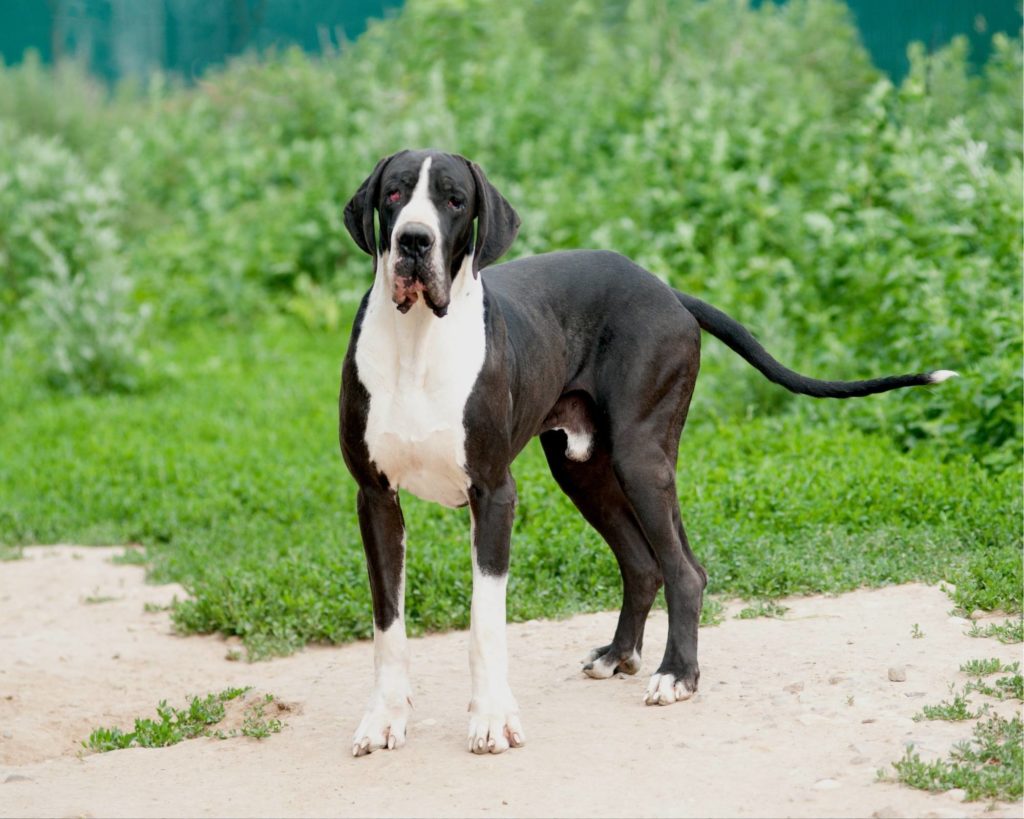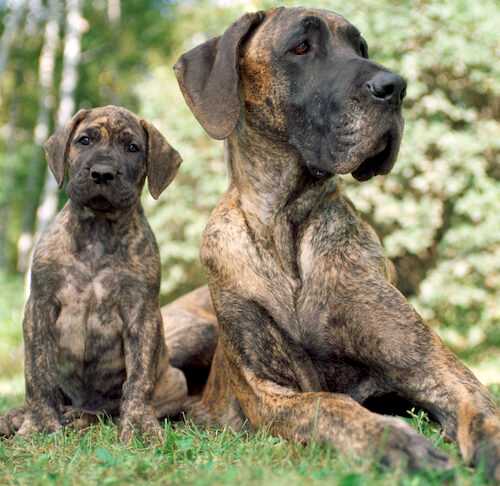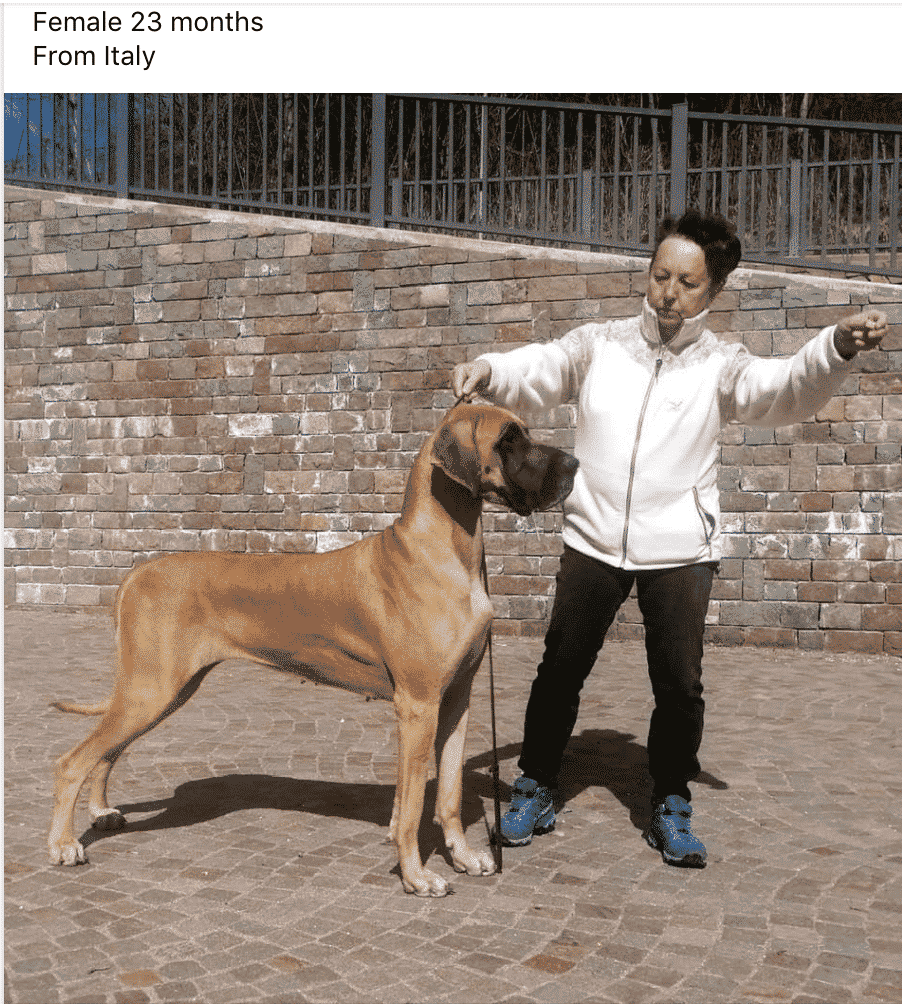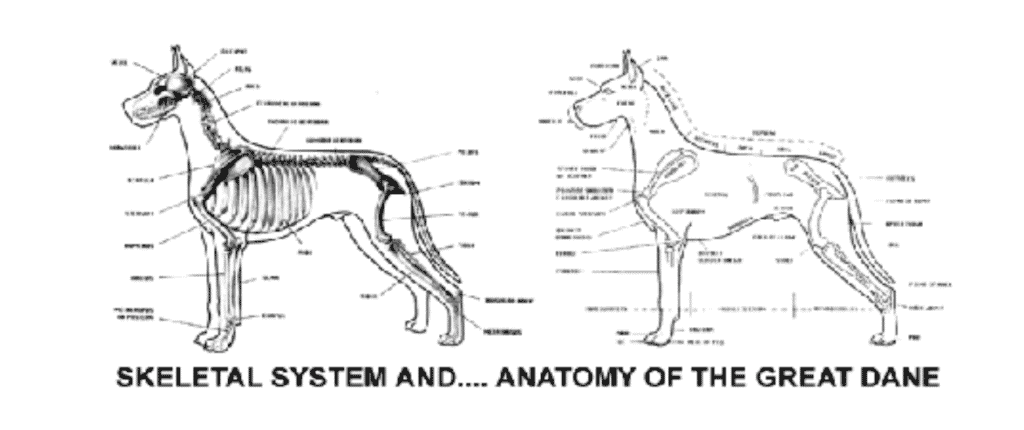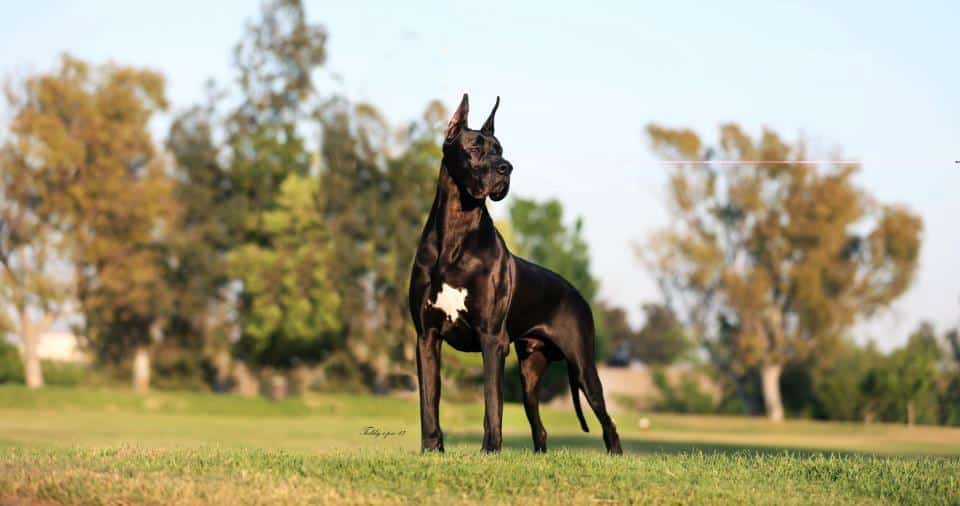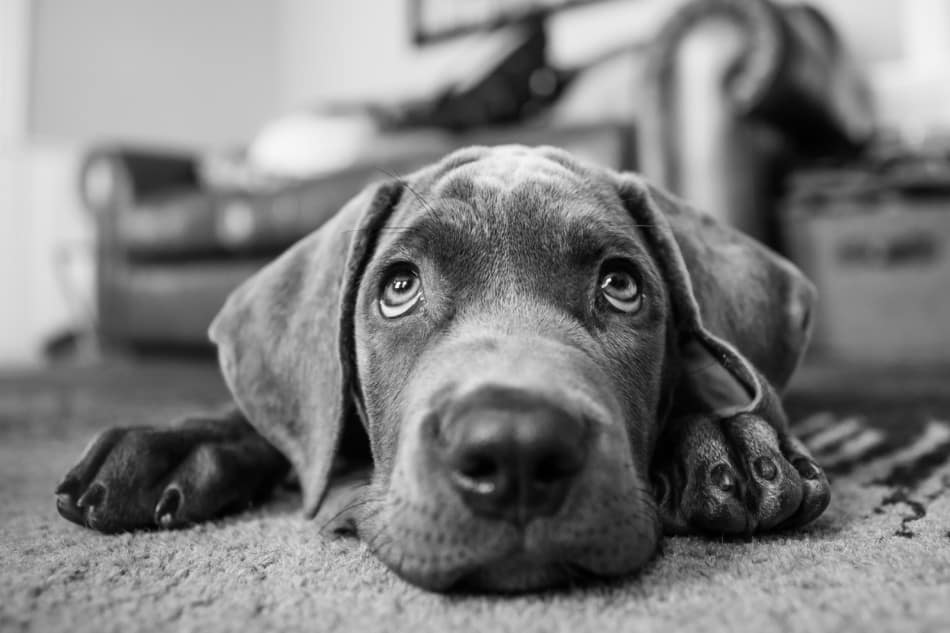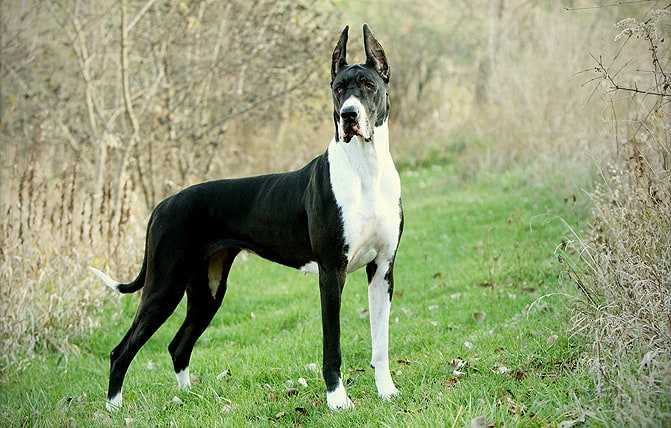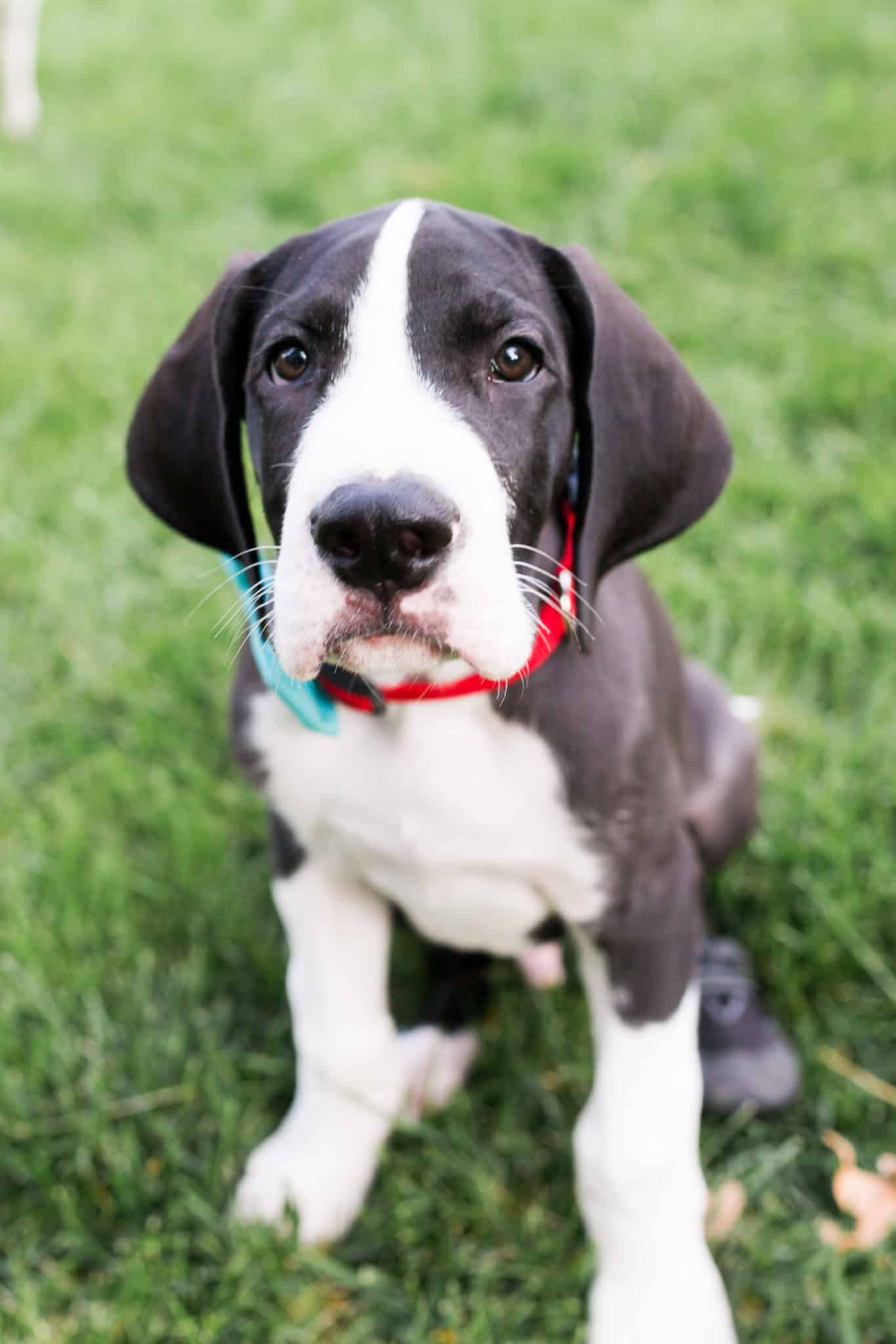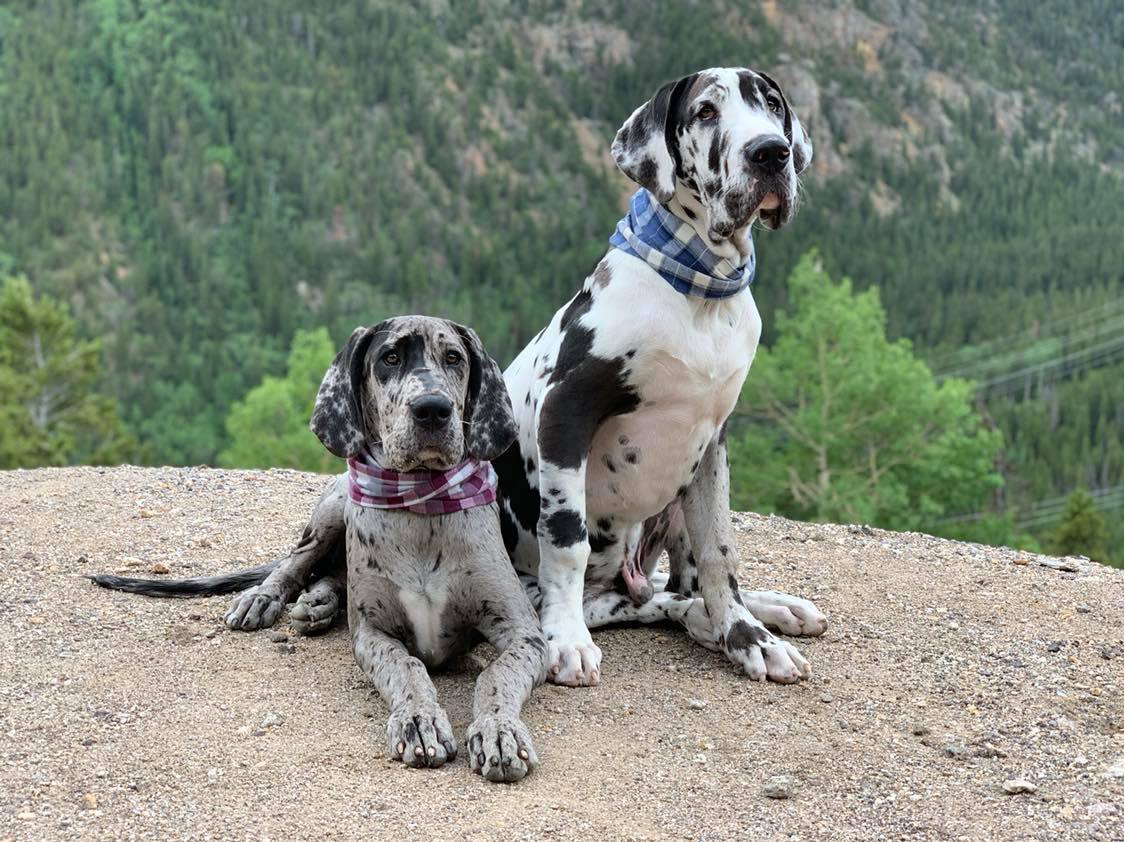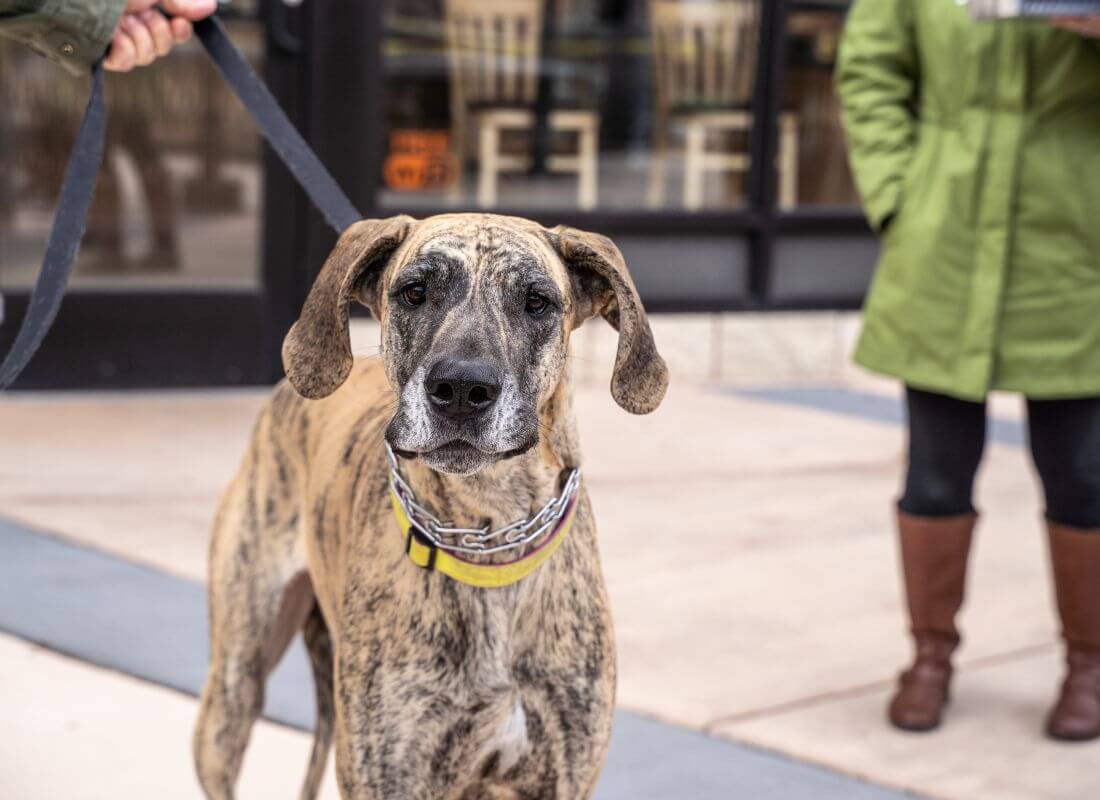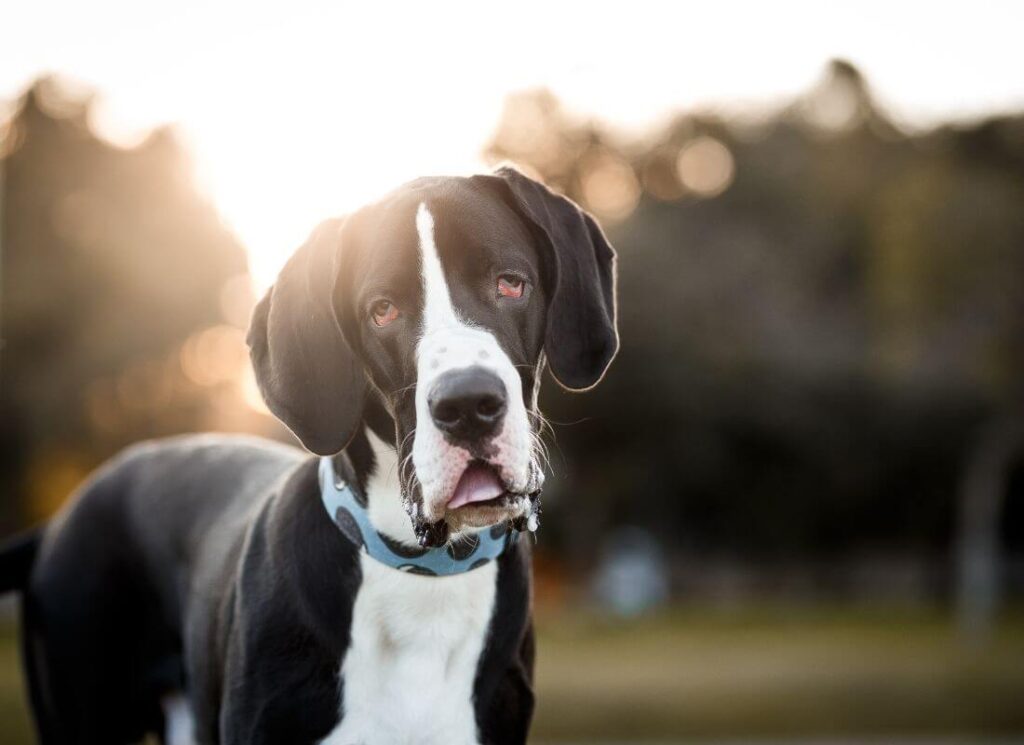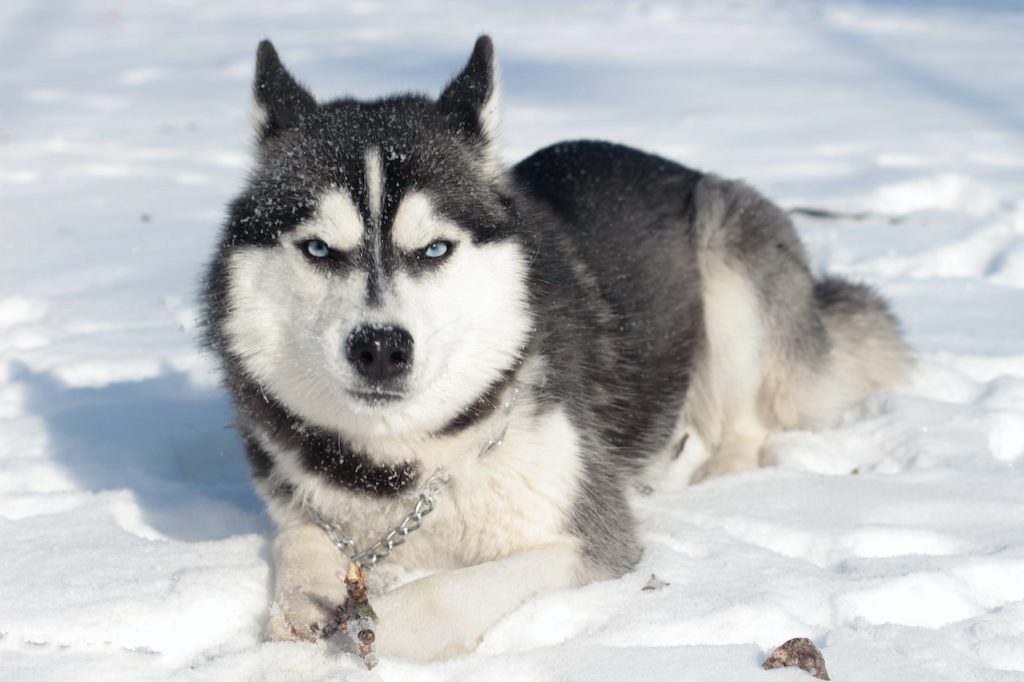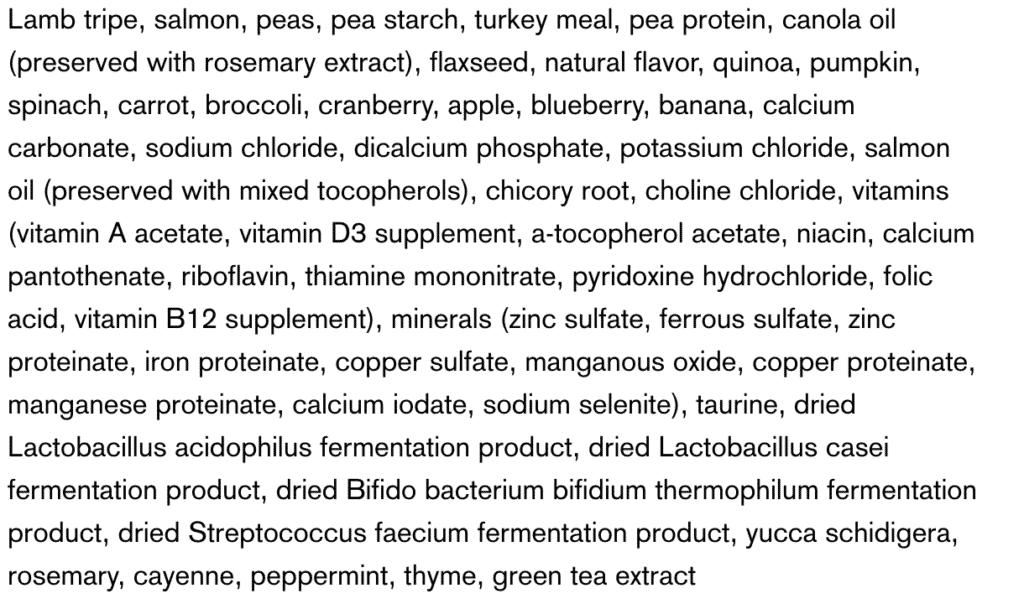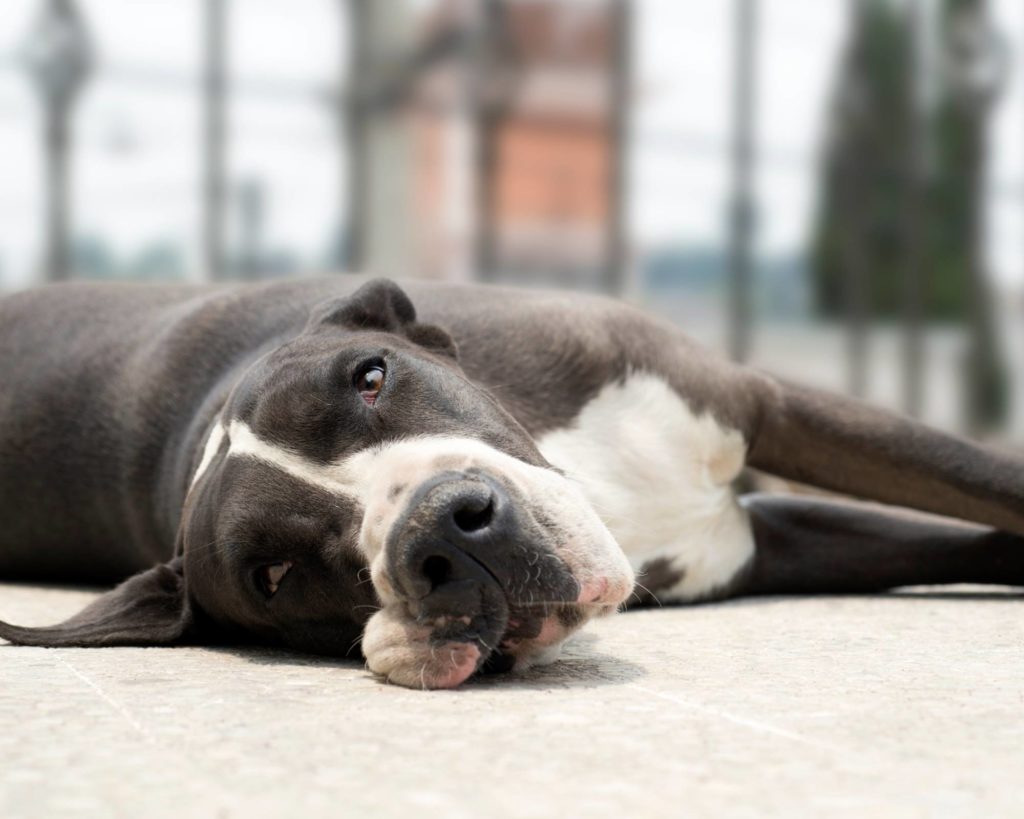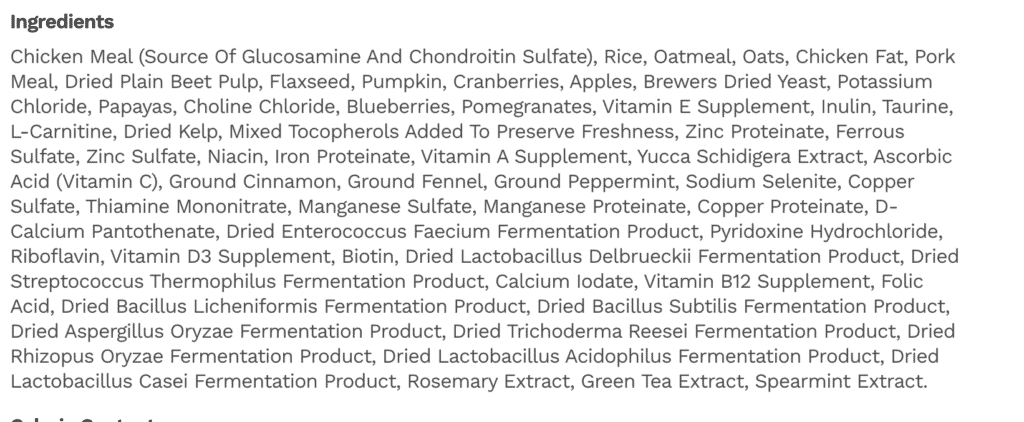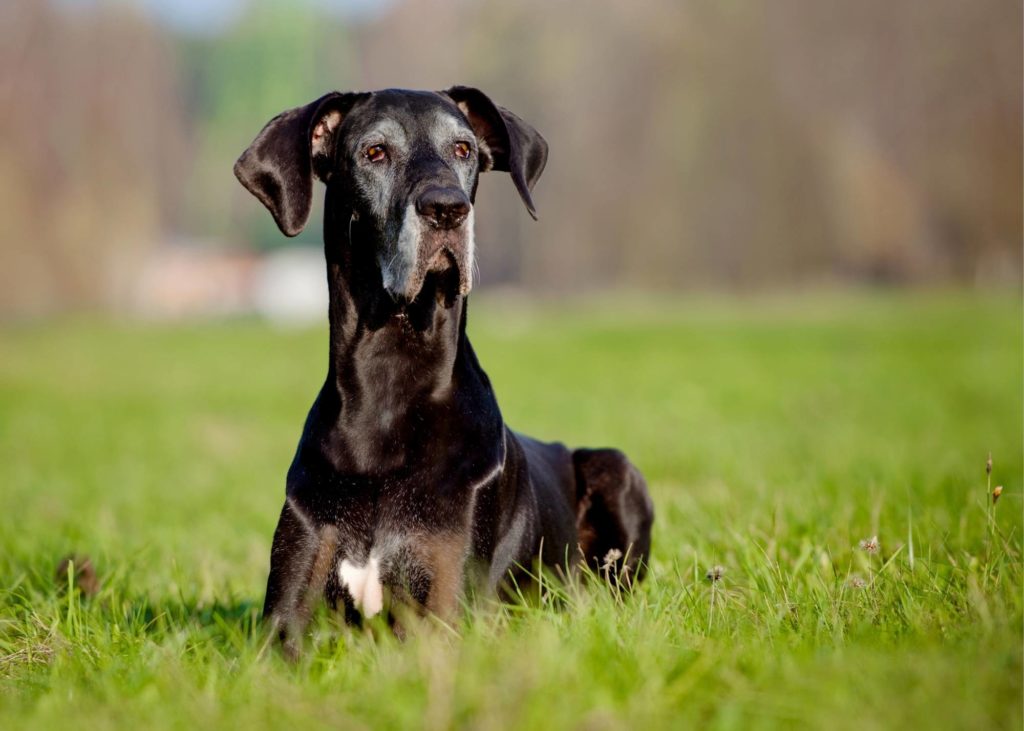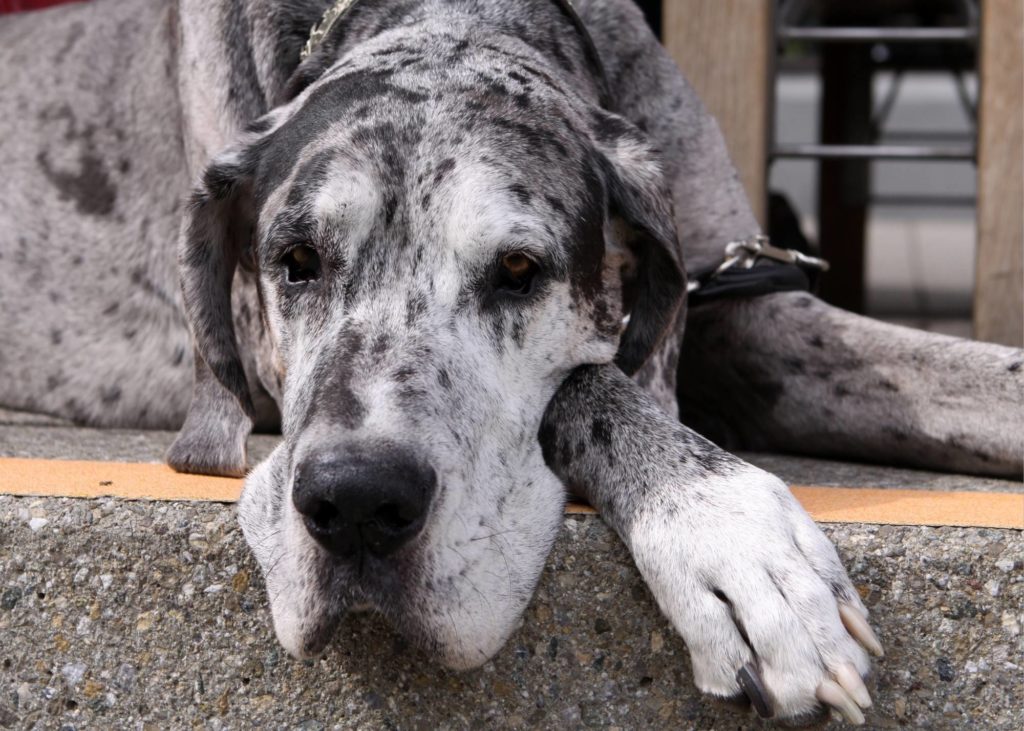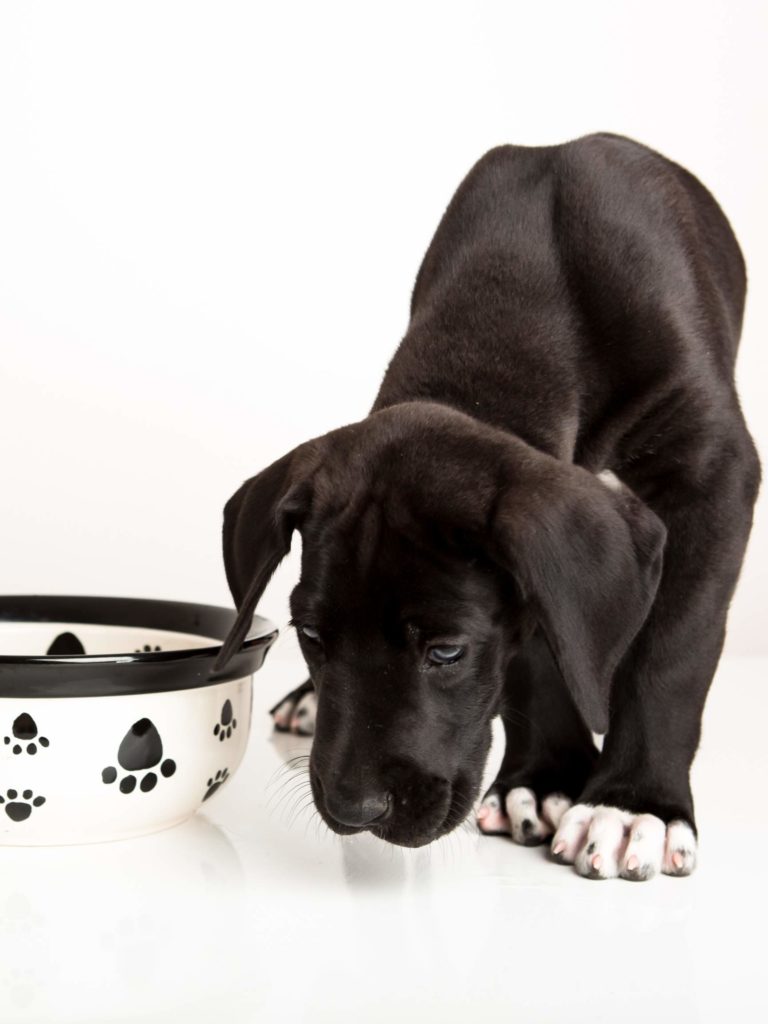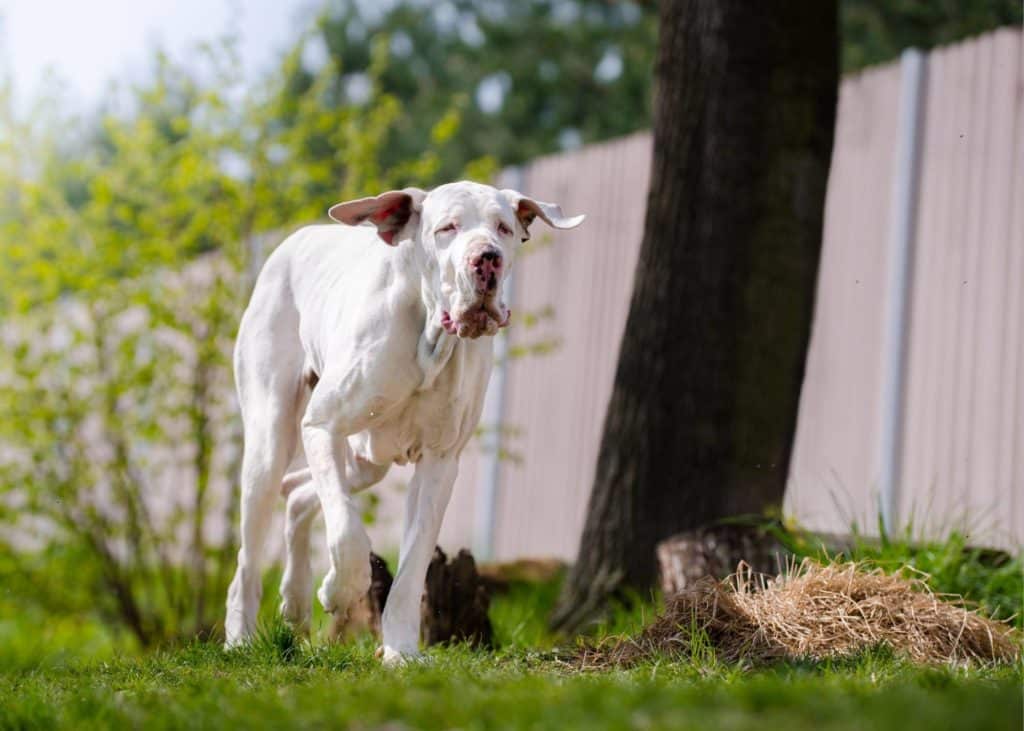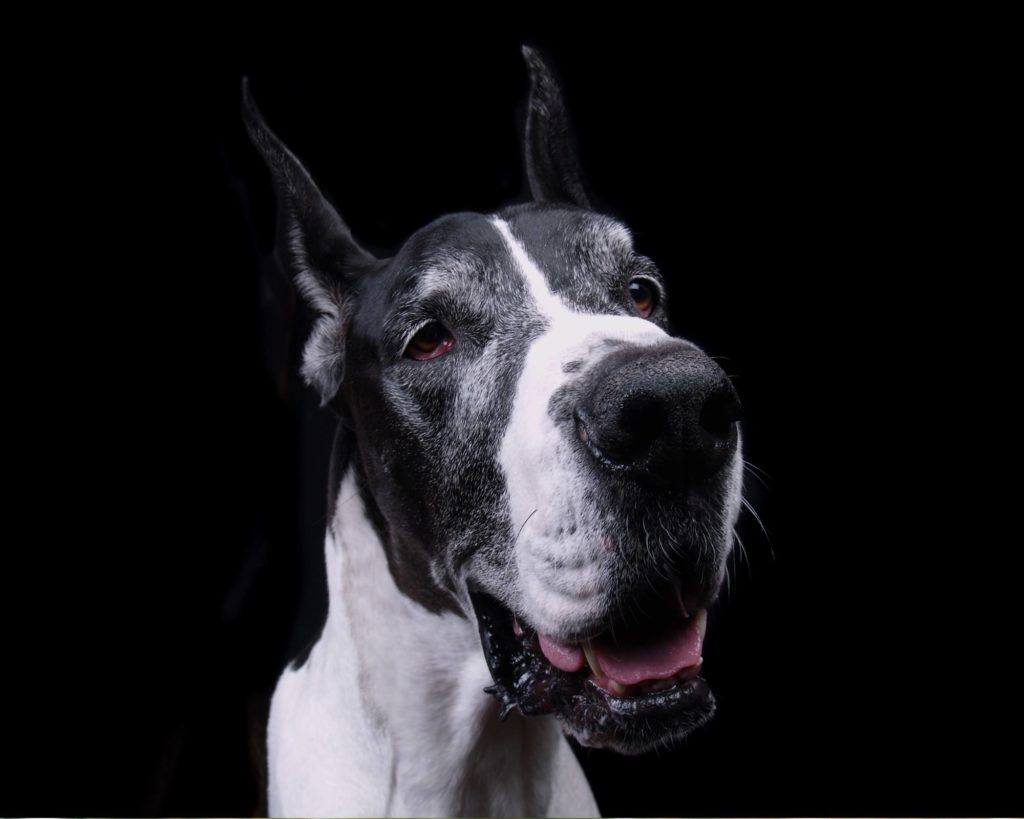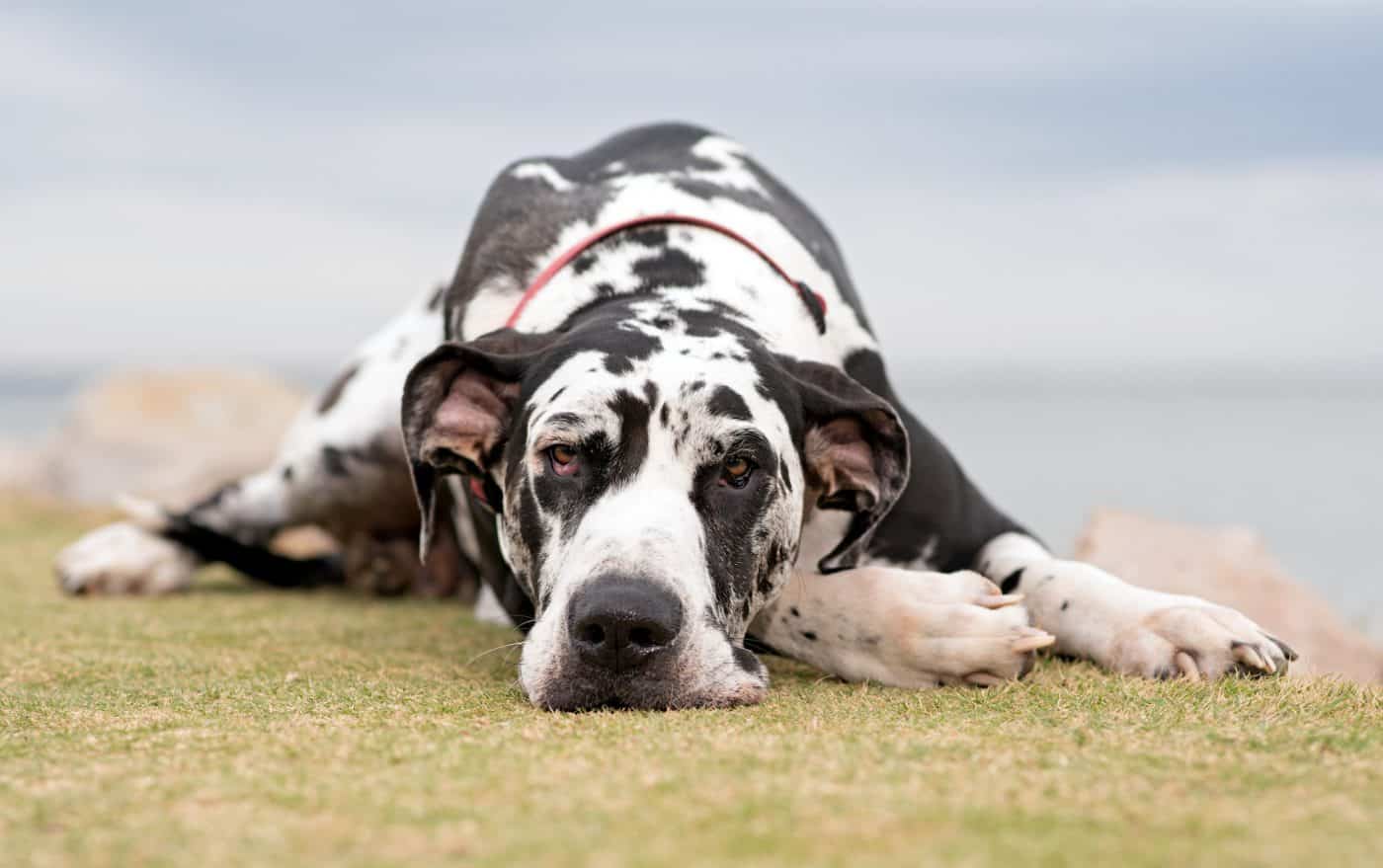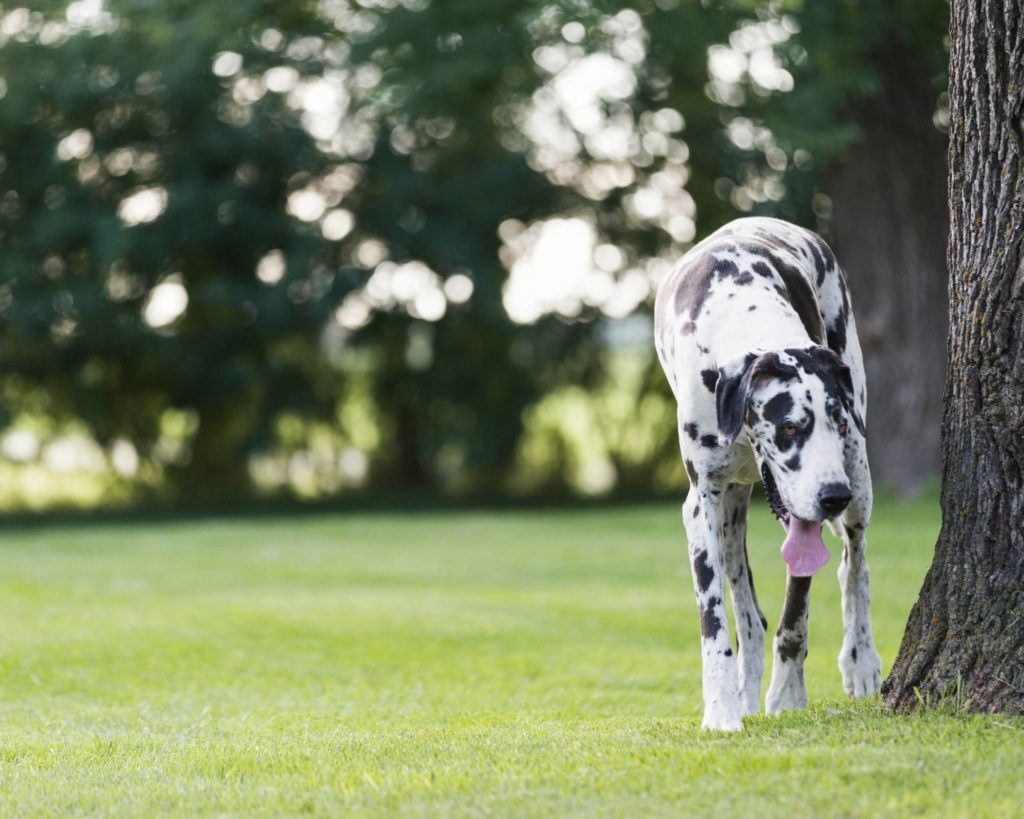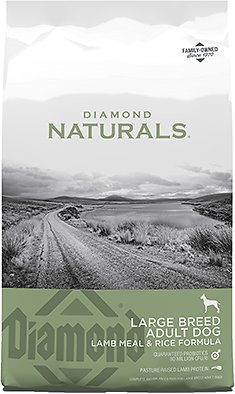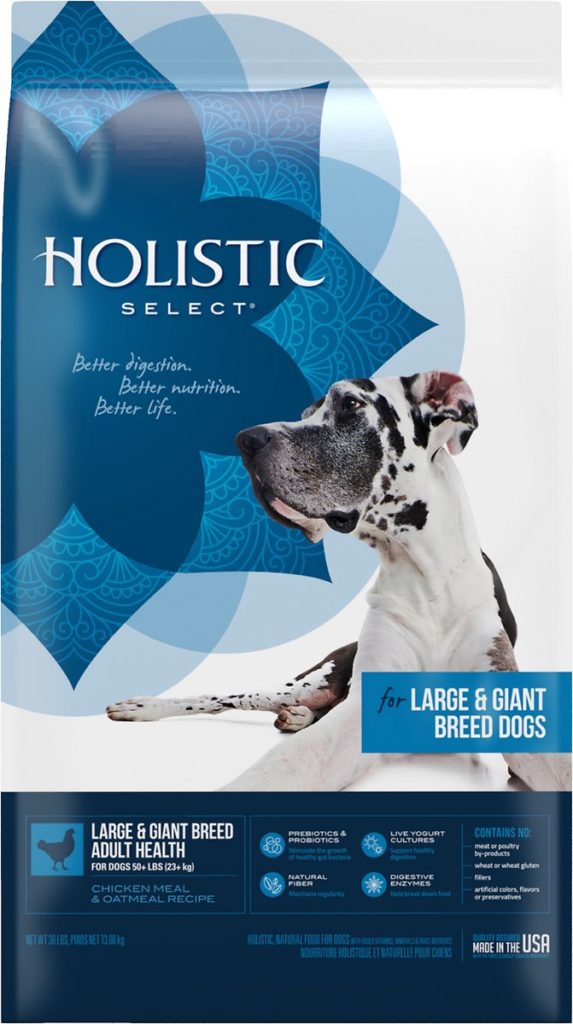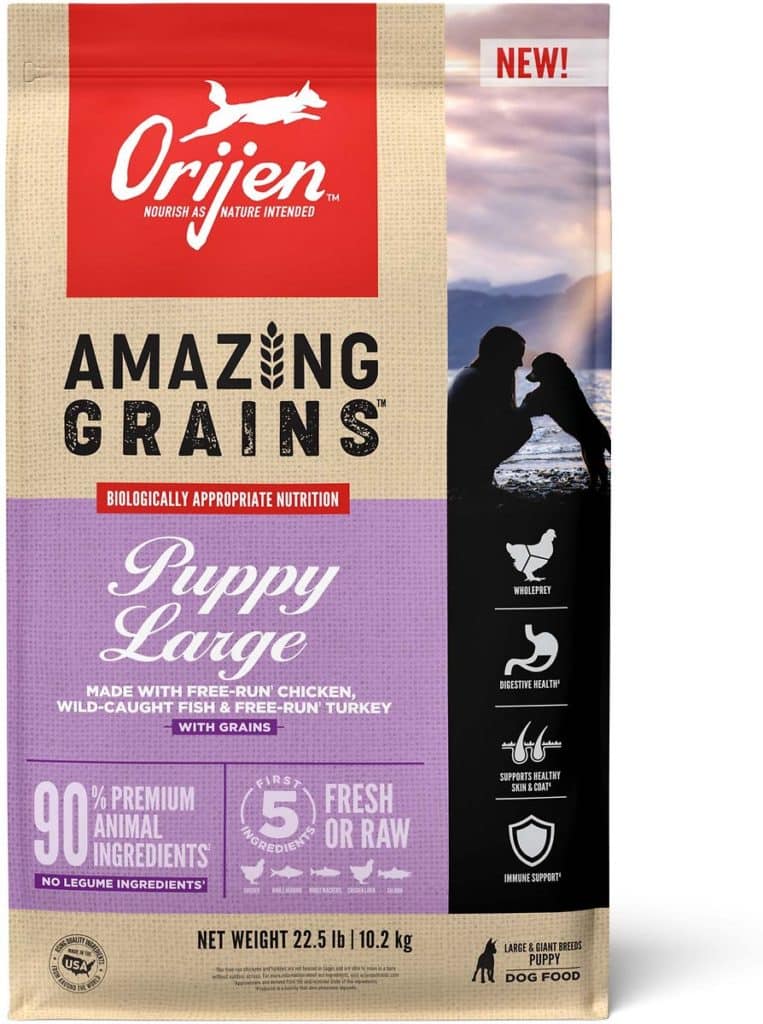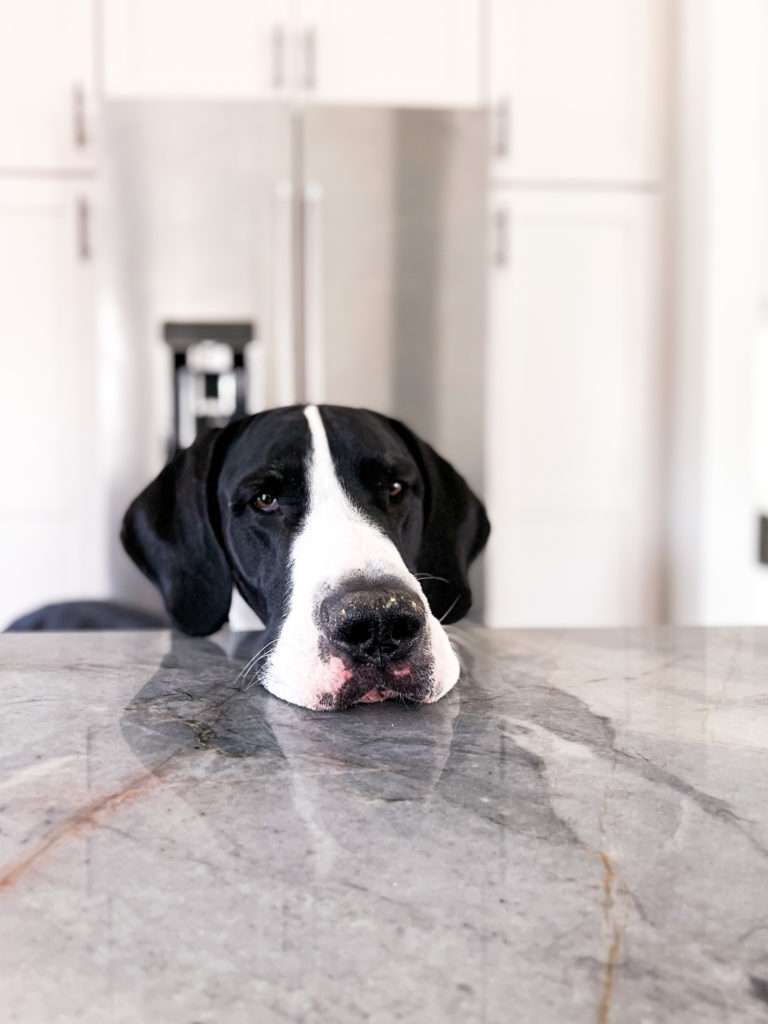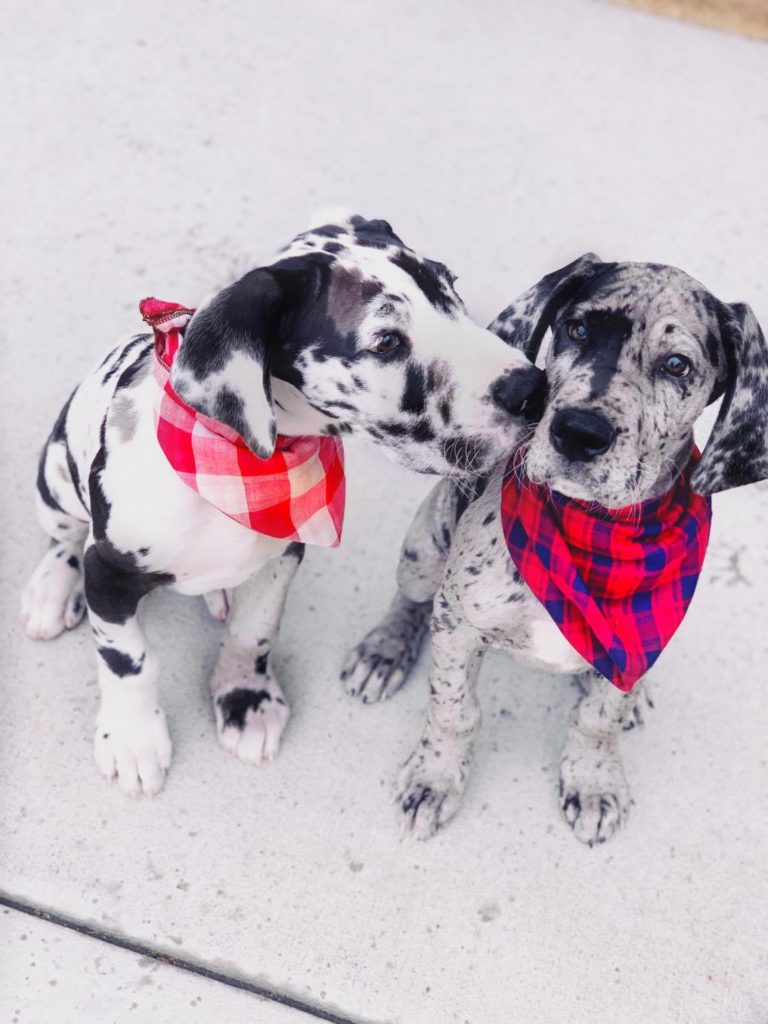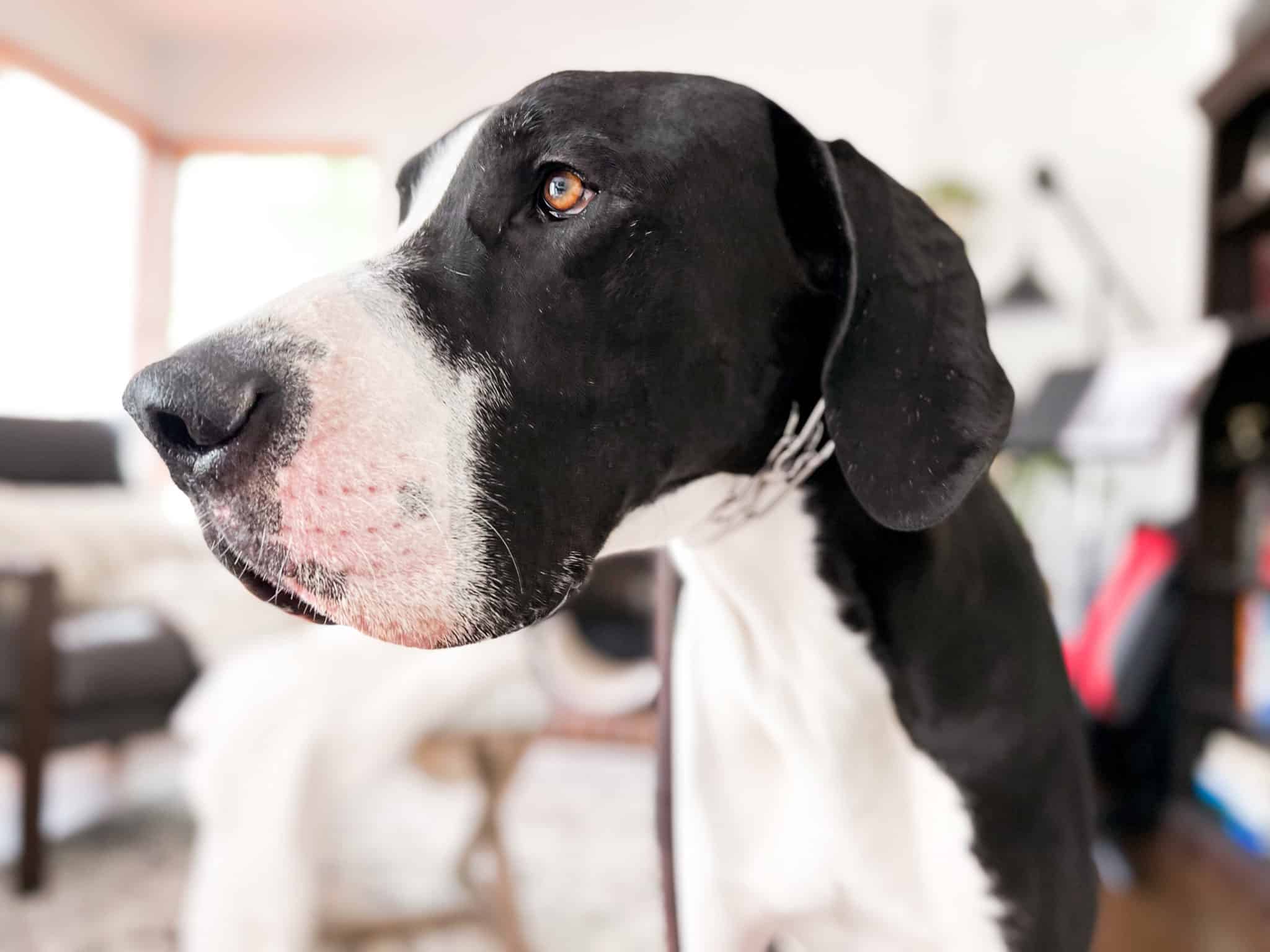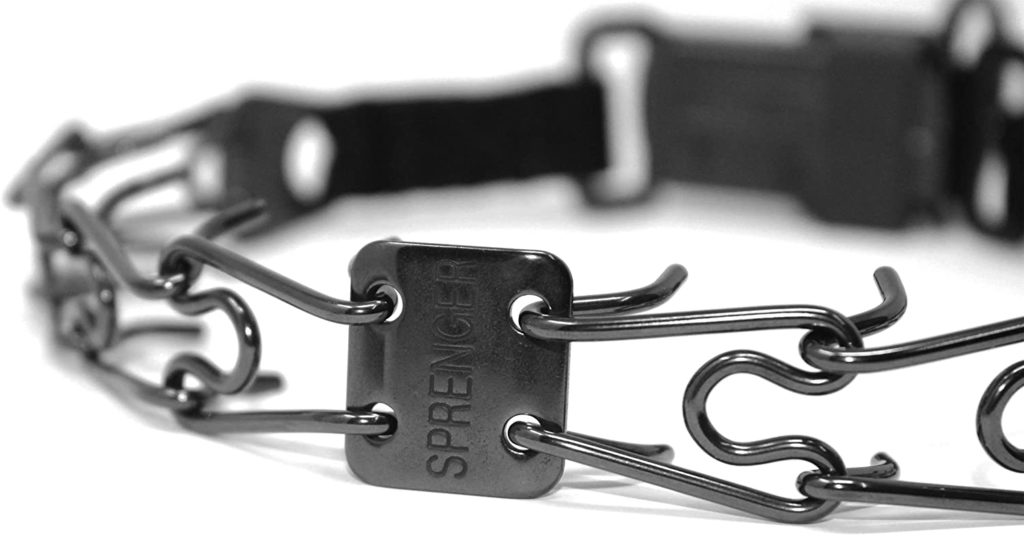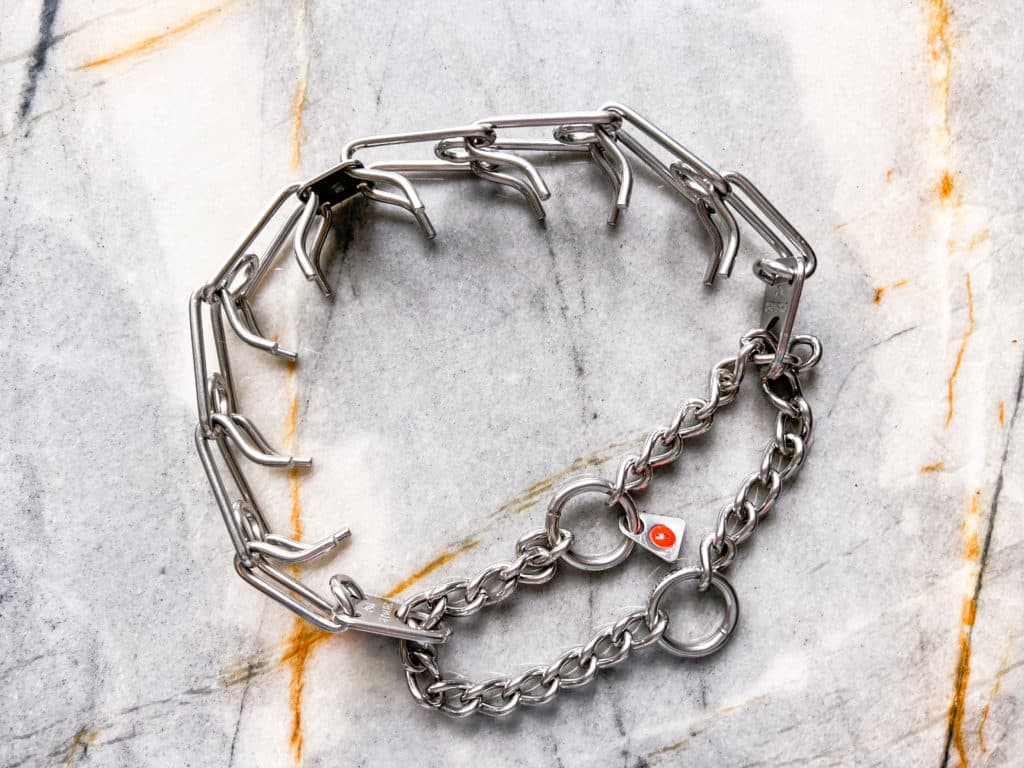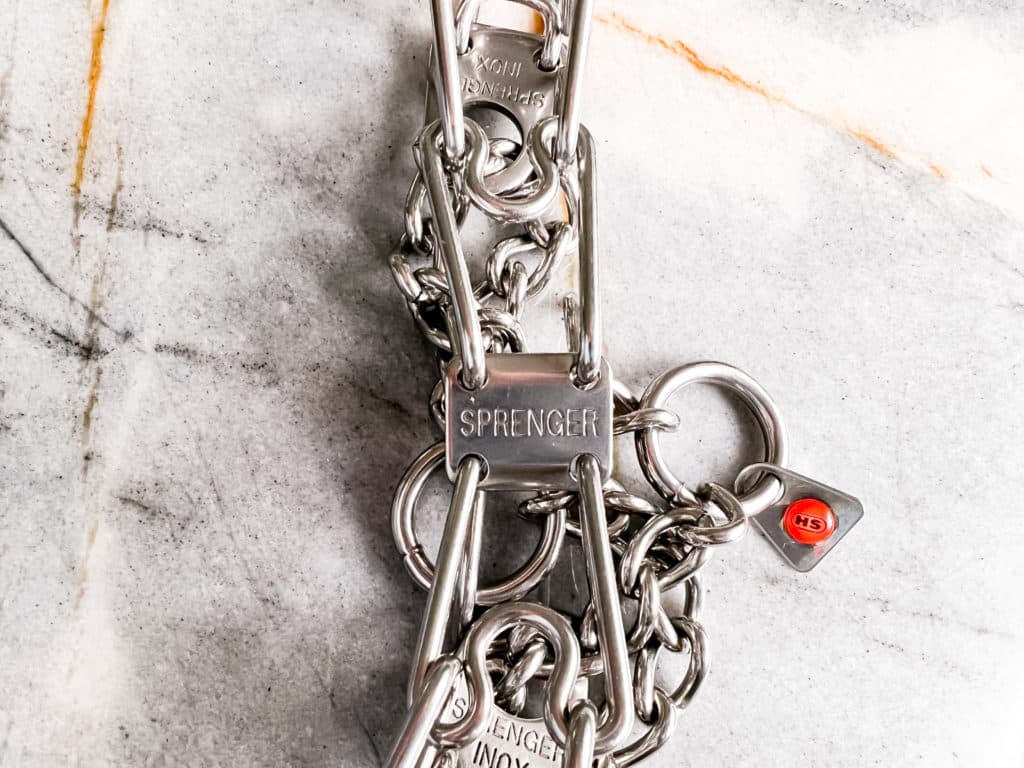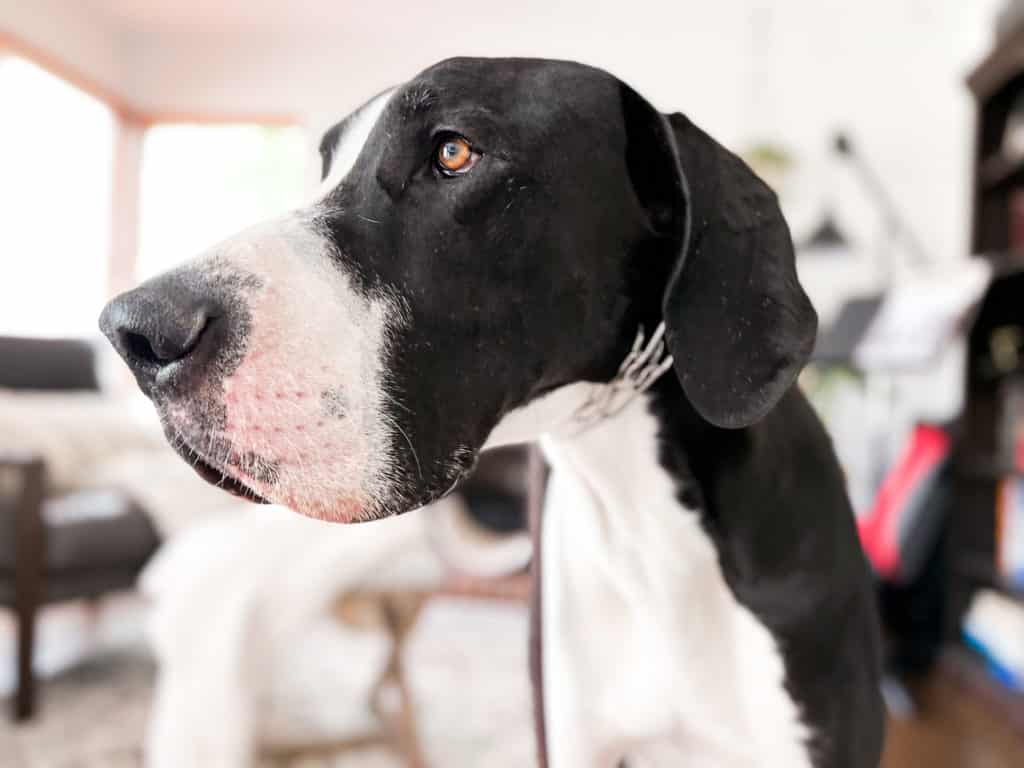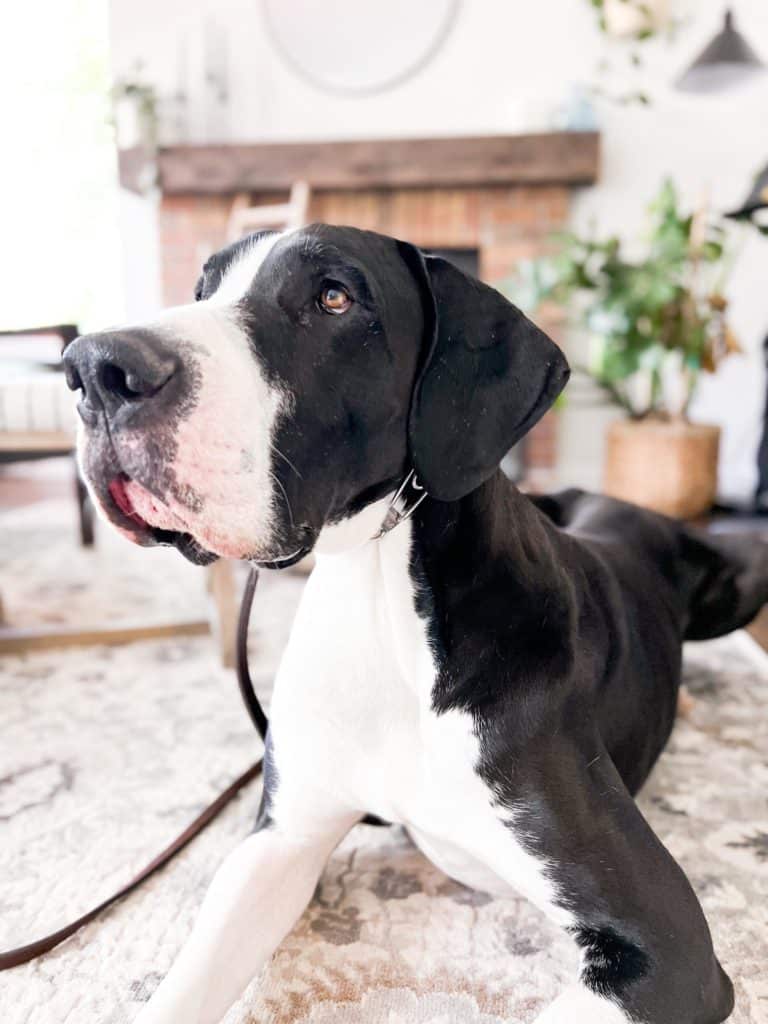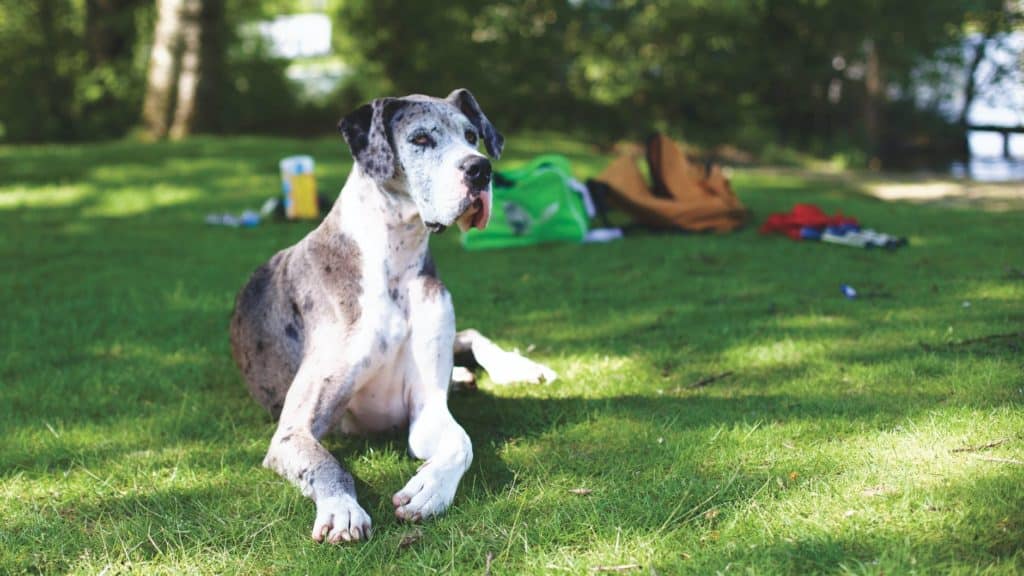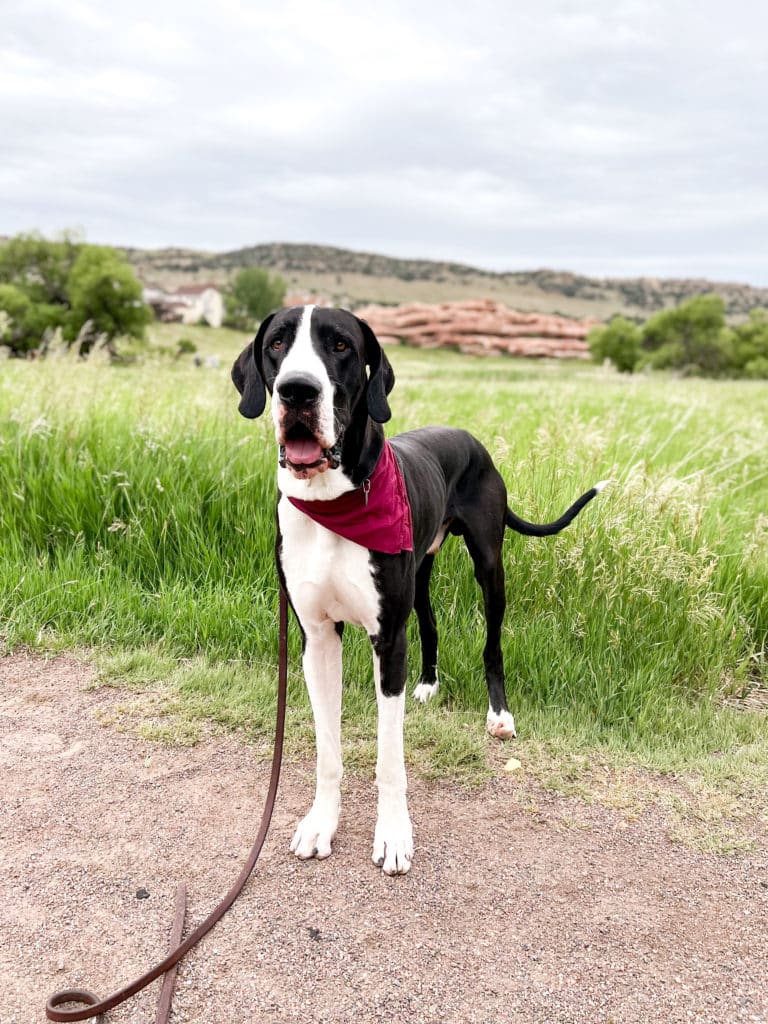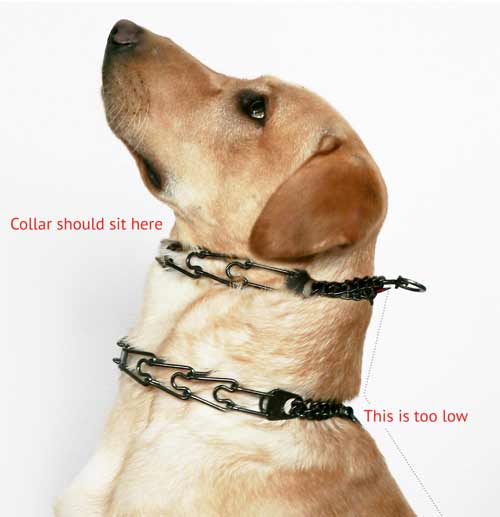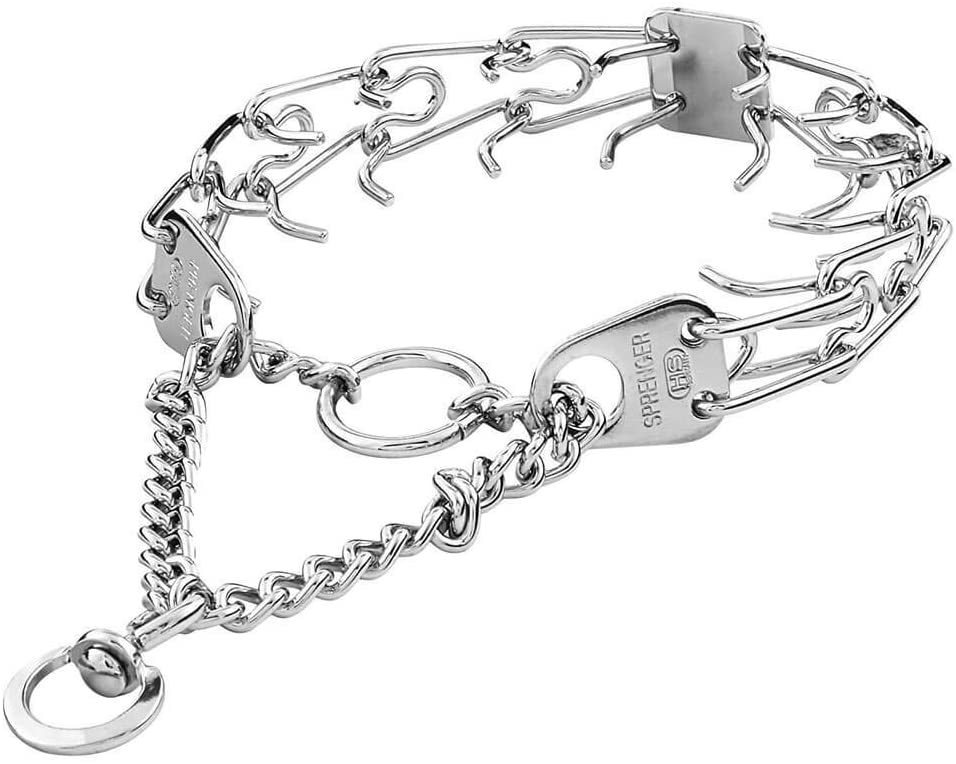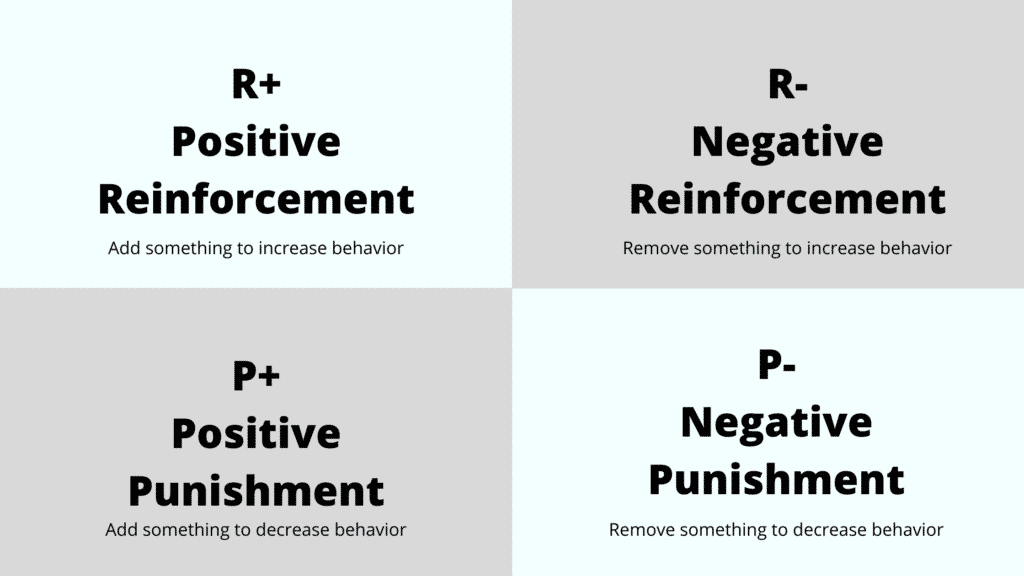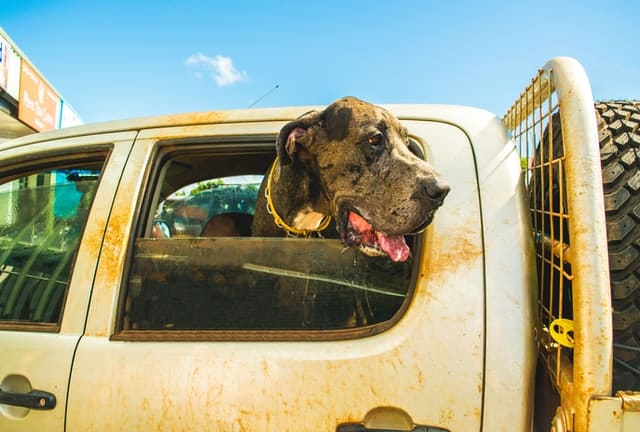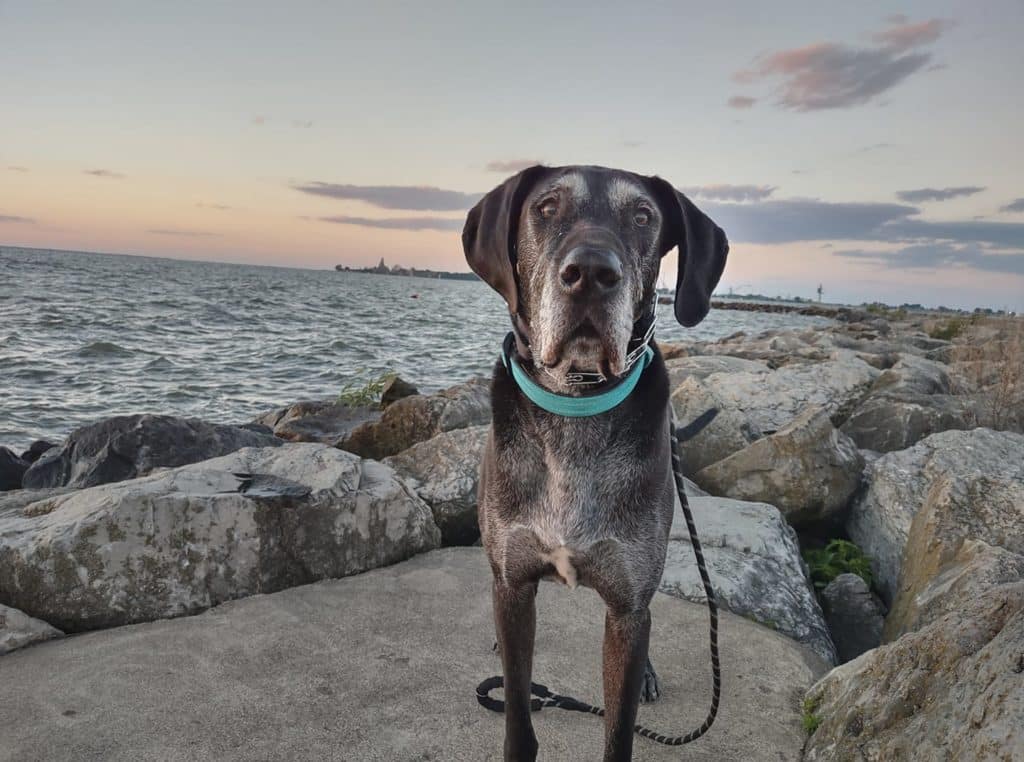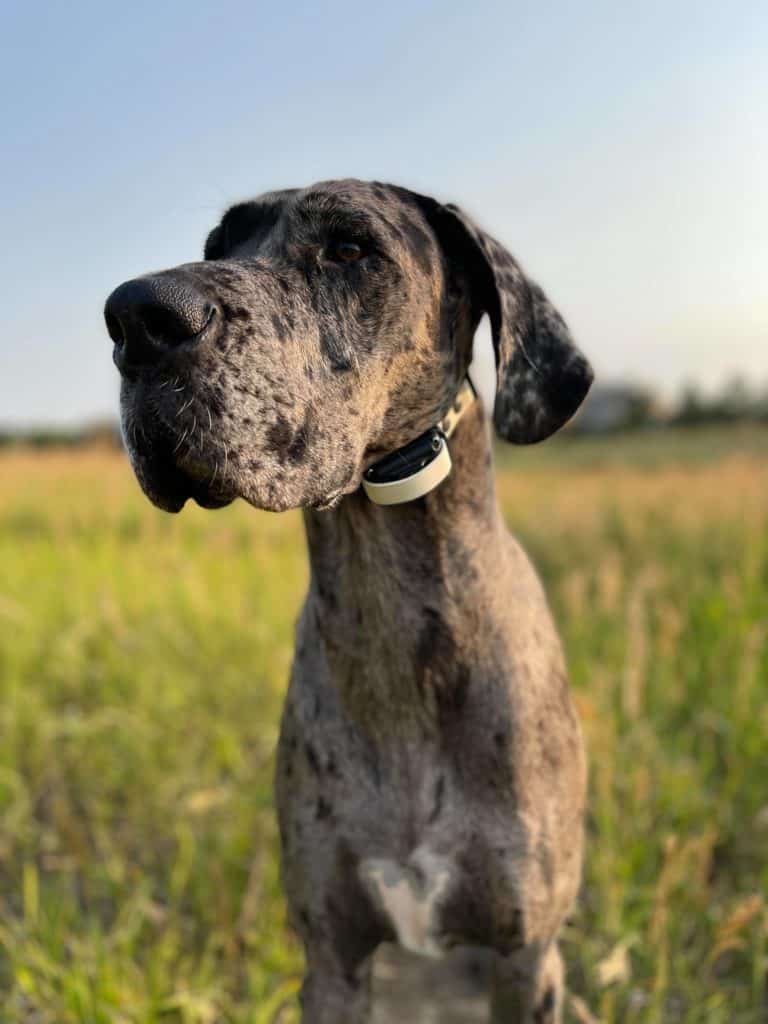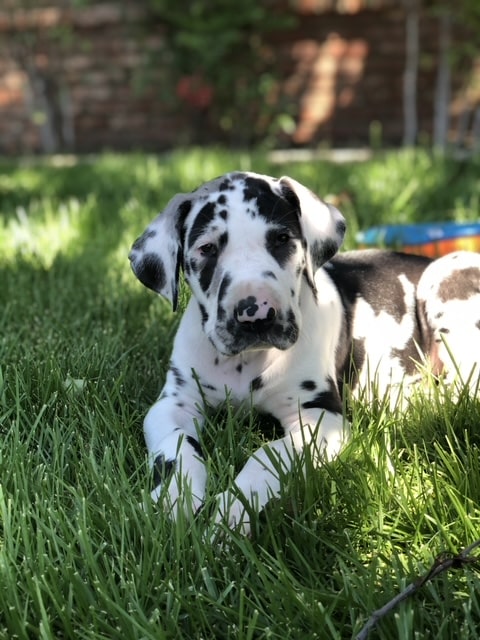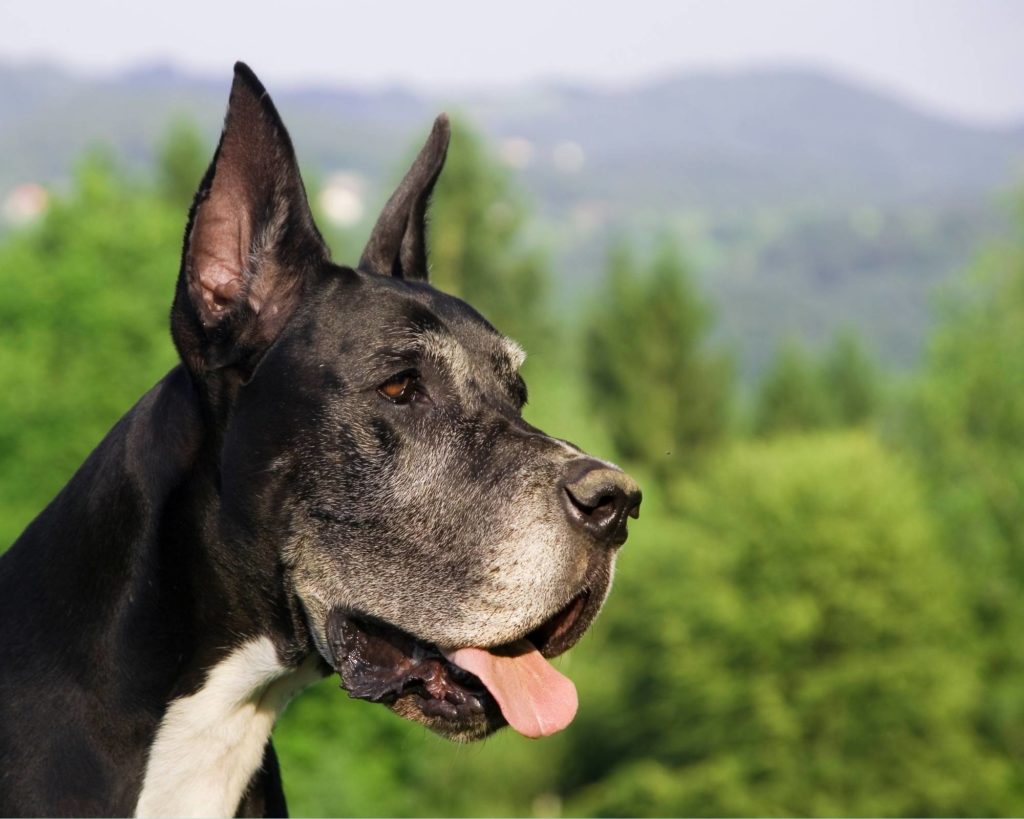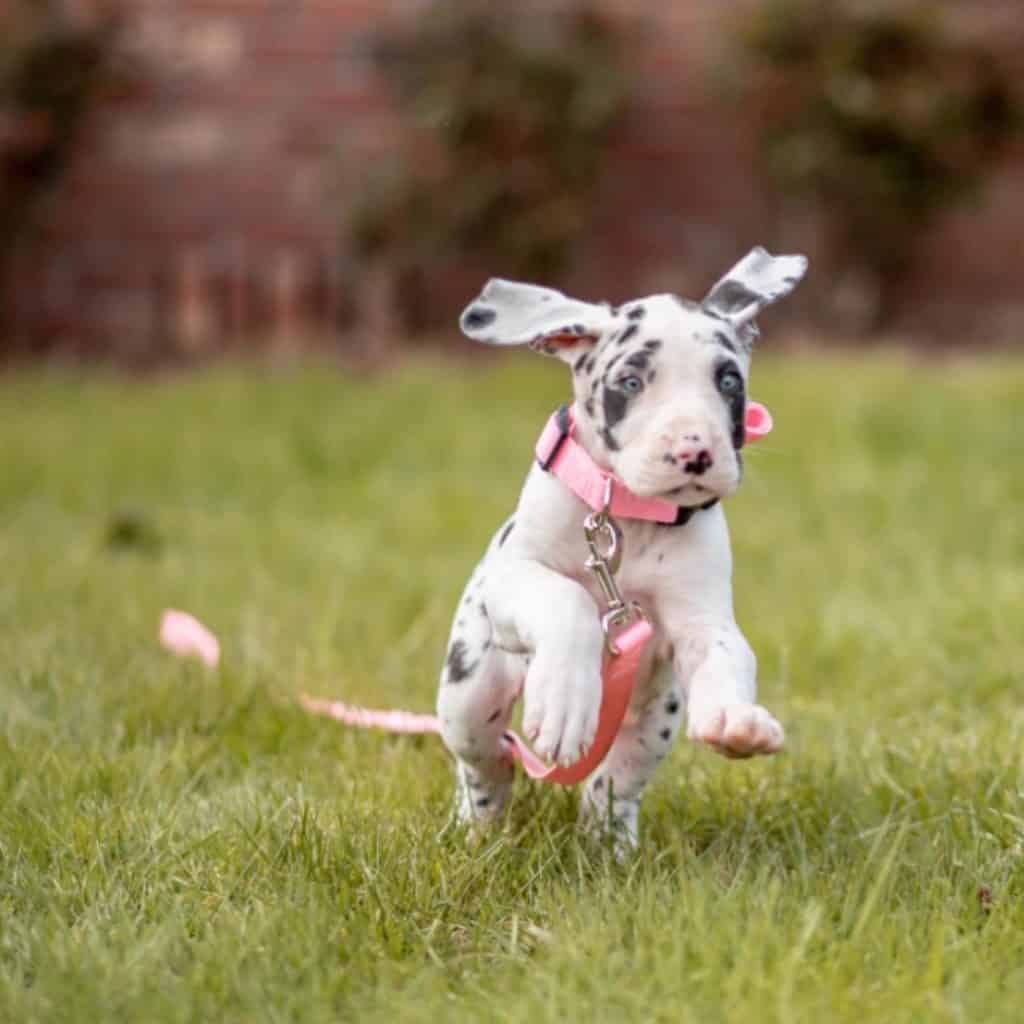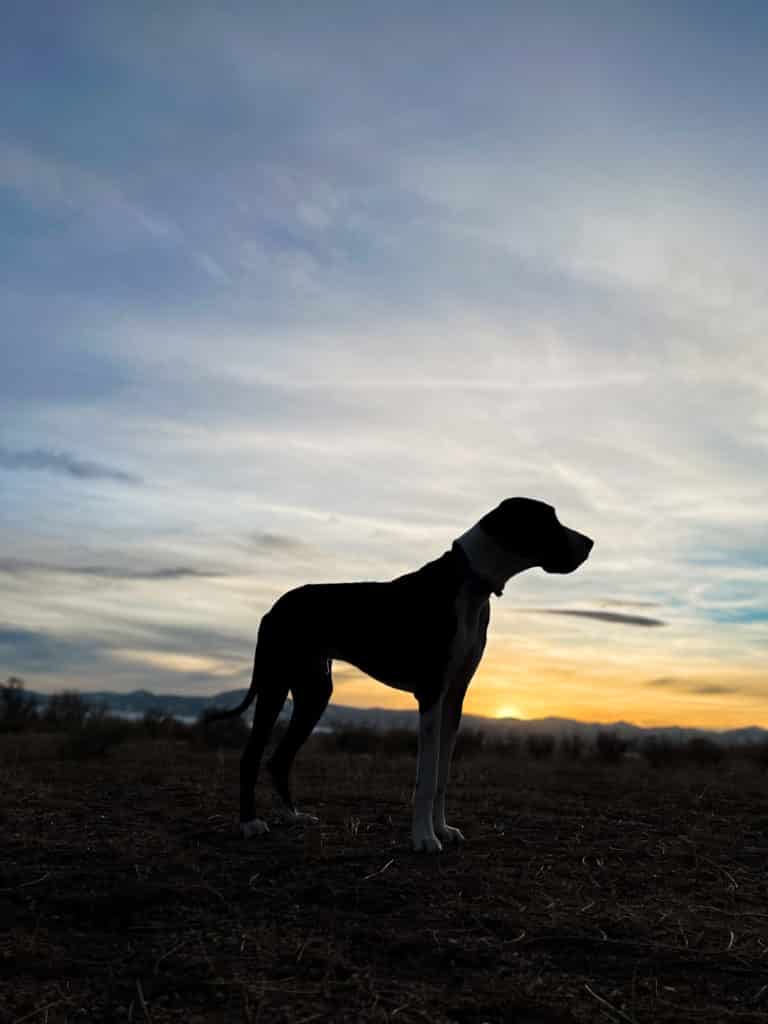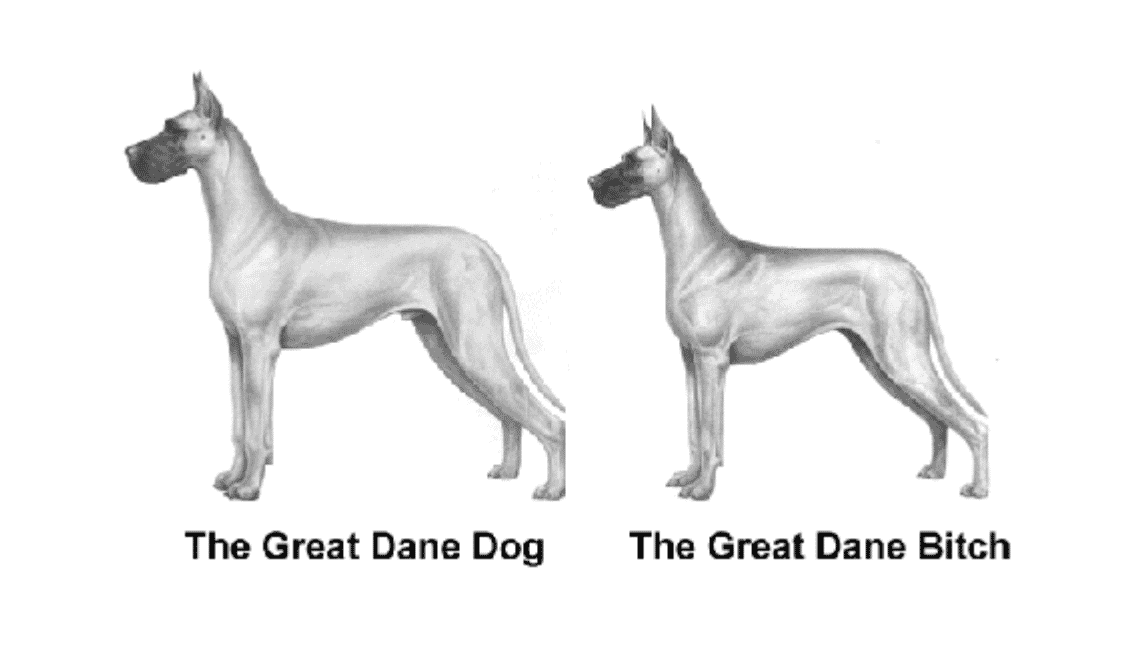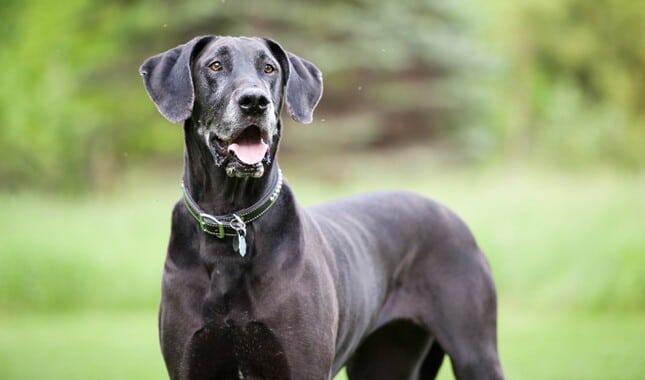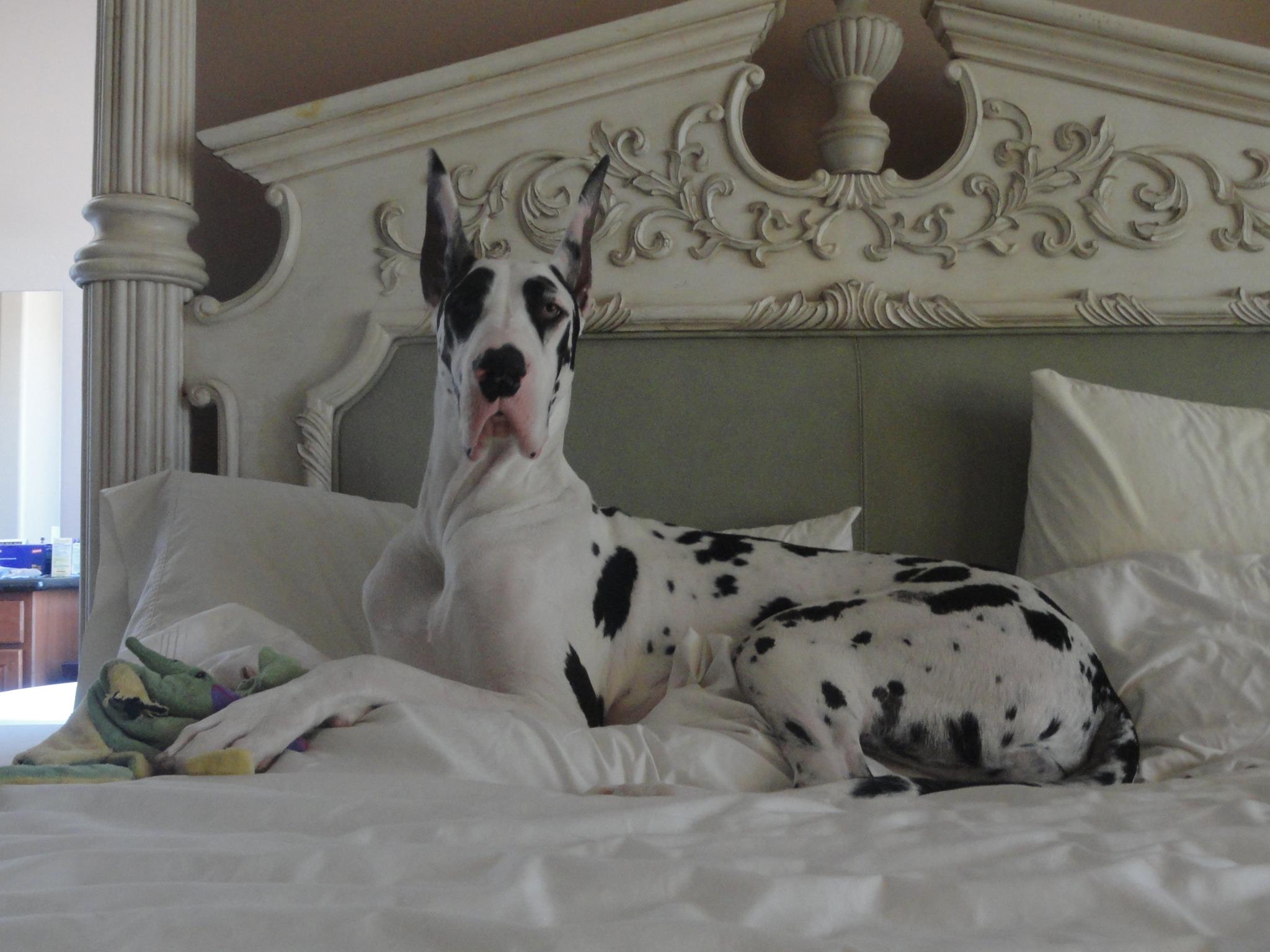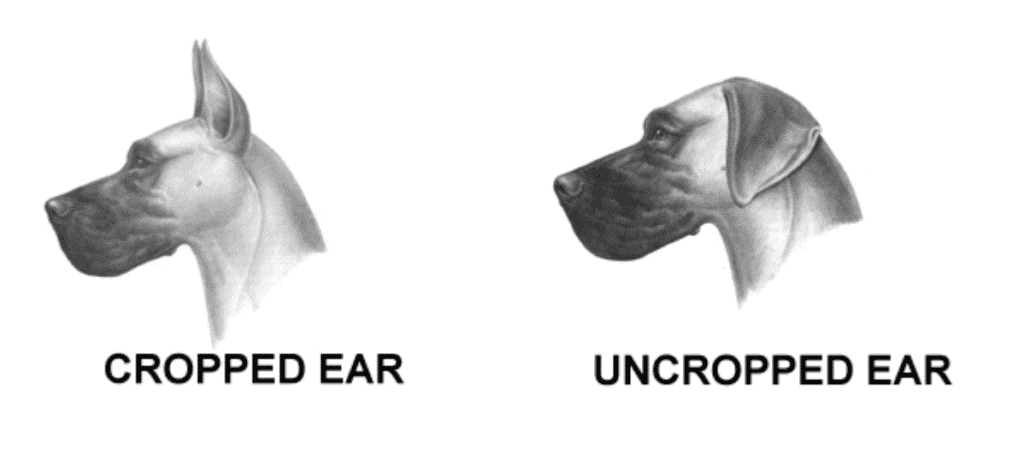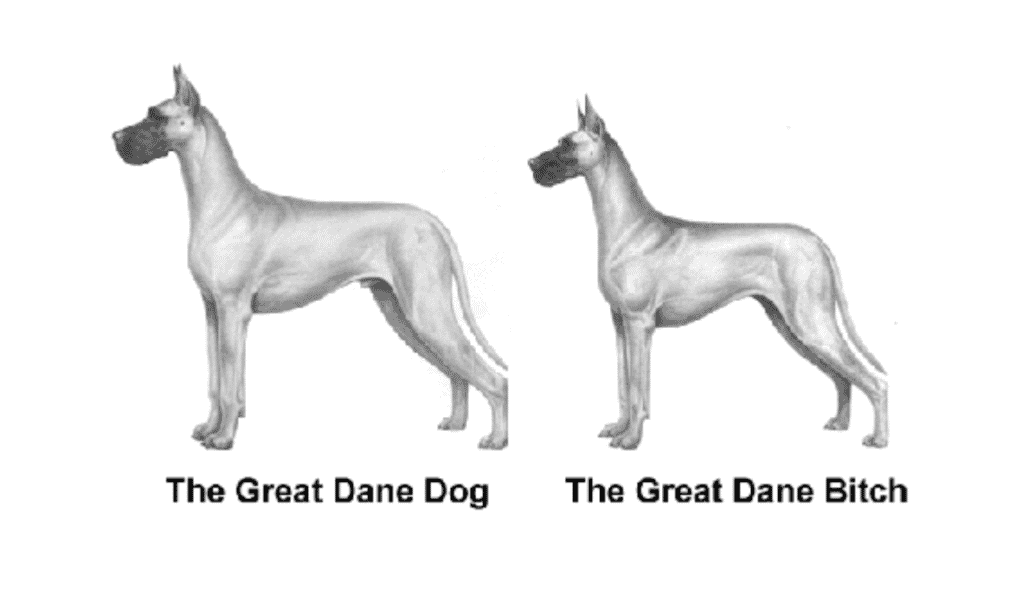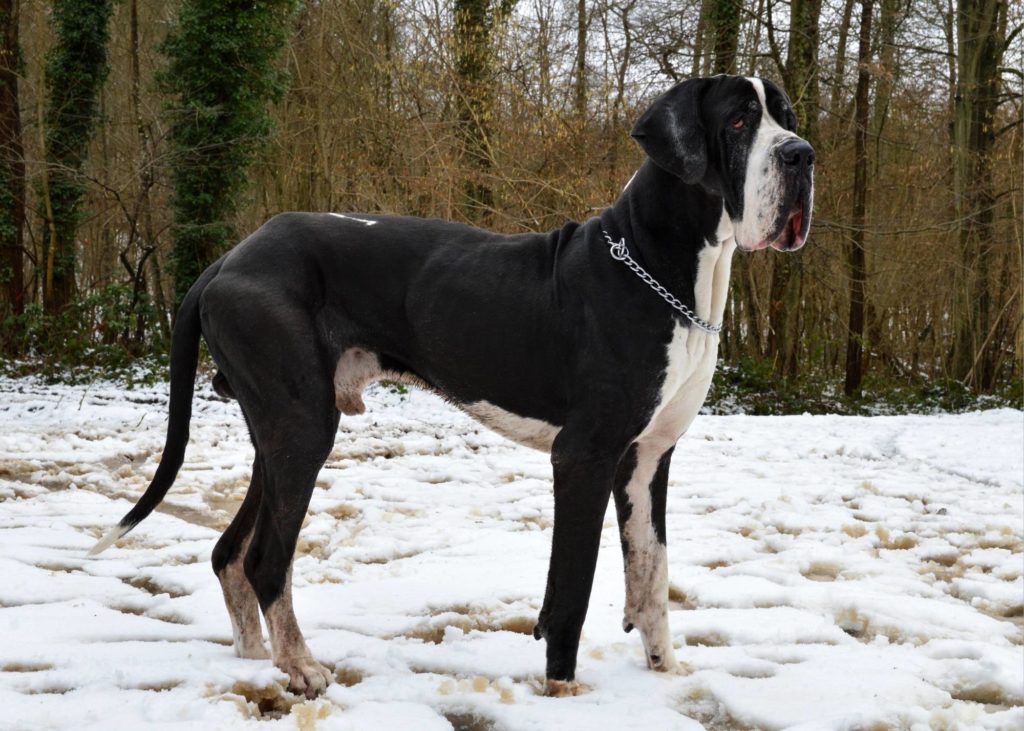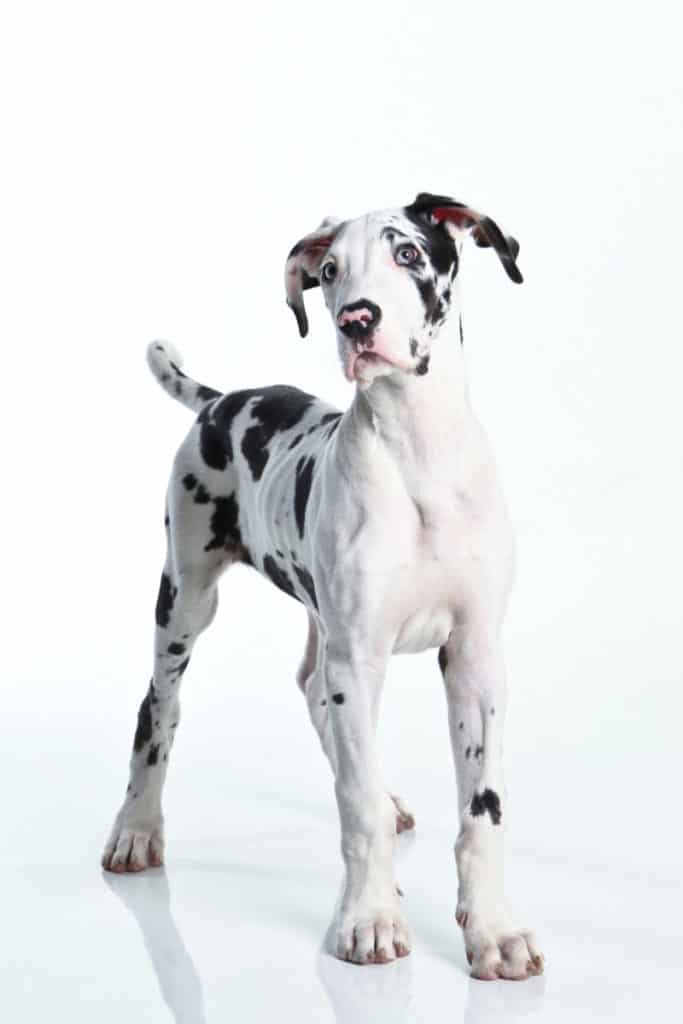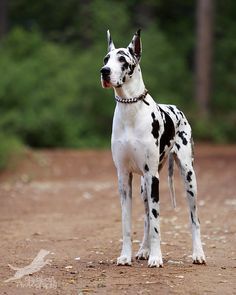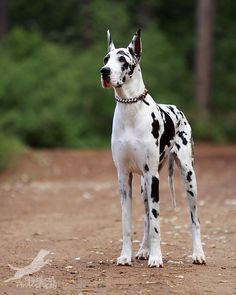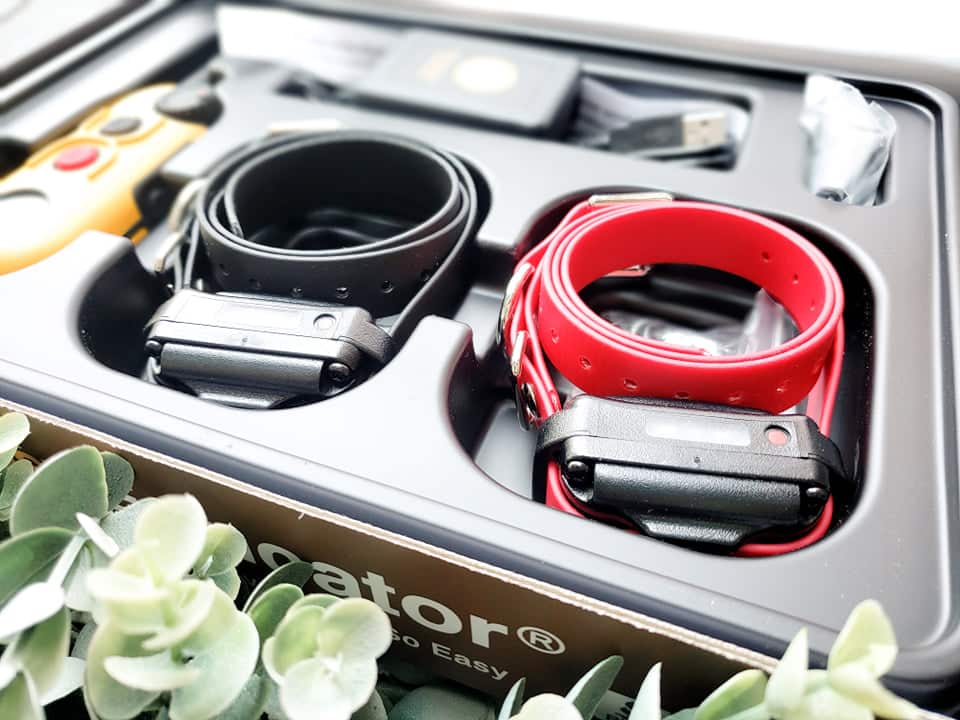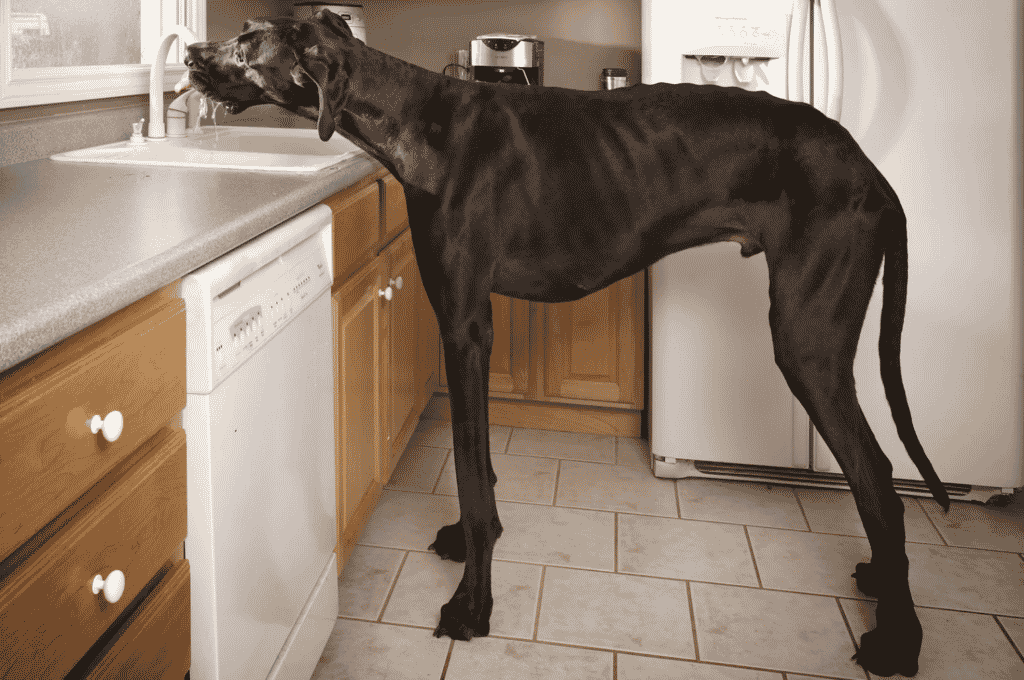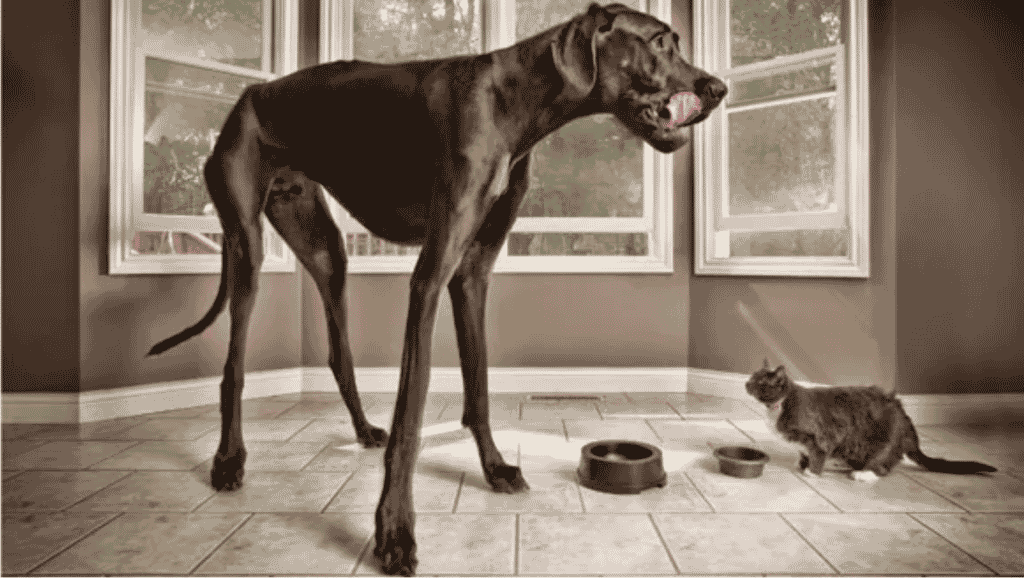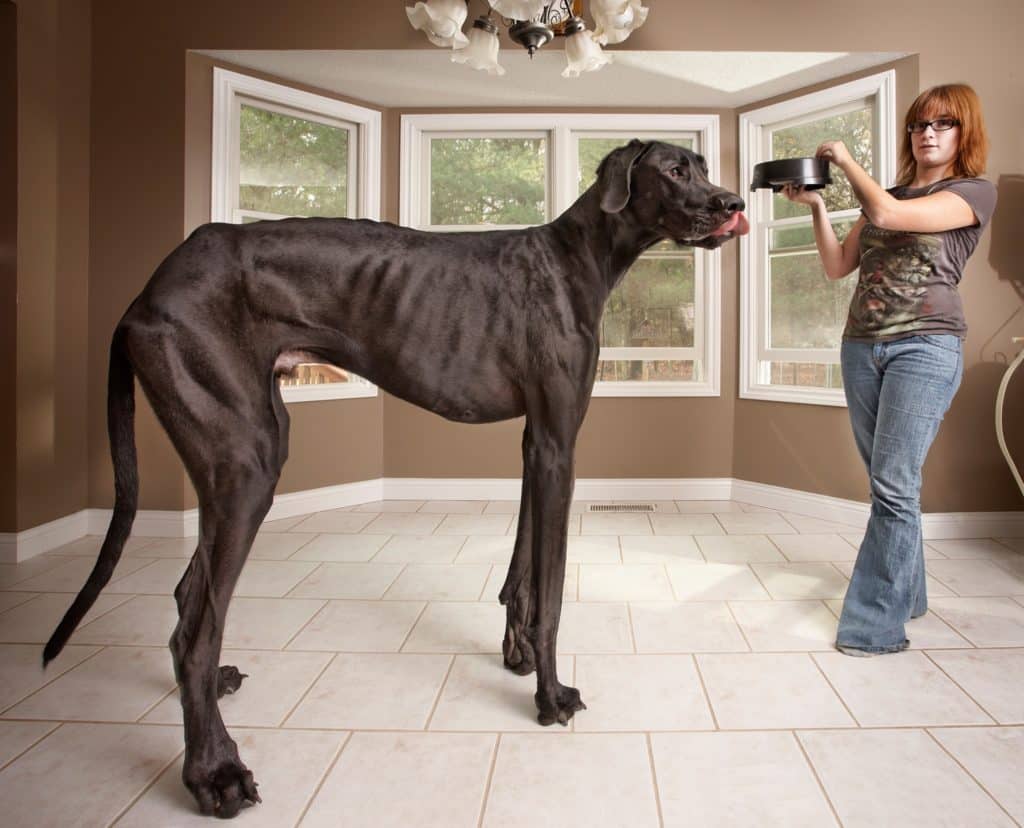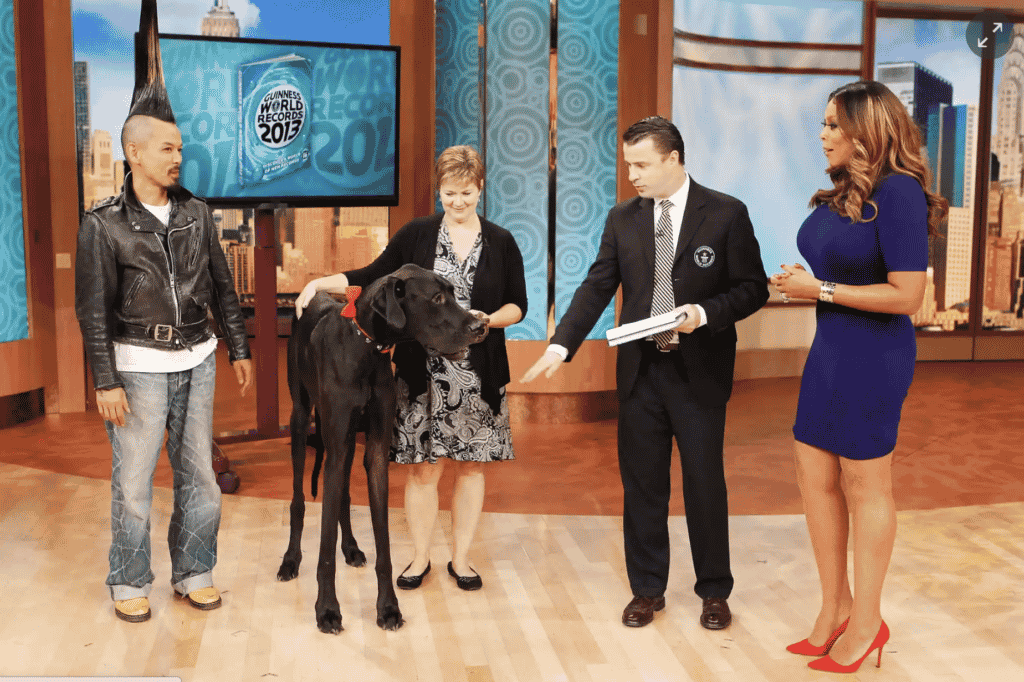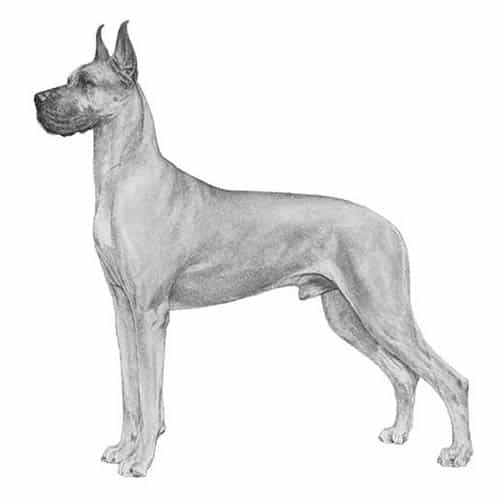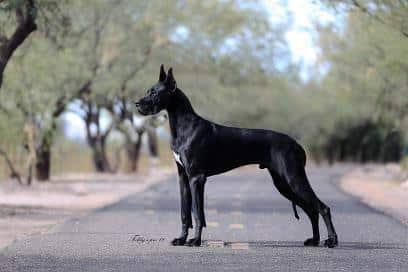If you are the owner of a Great Dane, then you need to be aware of DCM in Great Danes. Dilated cardiomyopathy (DCM) is a common and serious heart condition that affects this breed. It often results in sudden death. If your dog has a recent diagnosis of DCM, this post is for you!
In this blog post, we will discuss what DCM is (including primary and secondary DCM), the symptoms to watch for, and information about how heart problems are treated in dogs. I’m also going to deep dive into OFA heart health testing protocols AND the controversial grain-free foods and nutritional DCM debate.
We will also provide information on how you can help keep your Great Dane healthy and prevent DCM from developing!
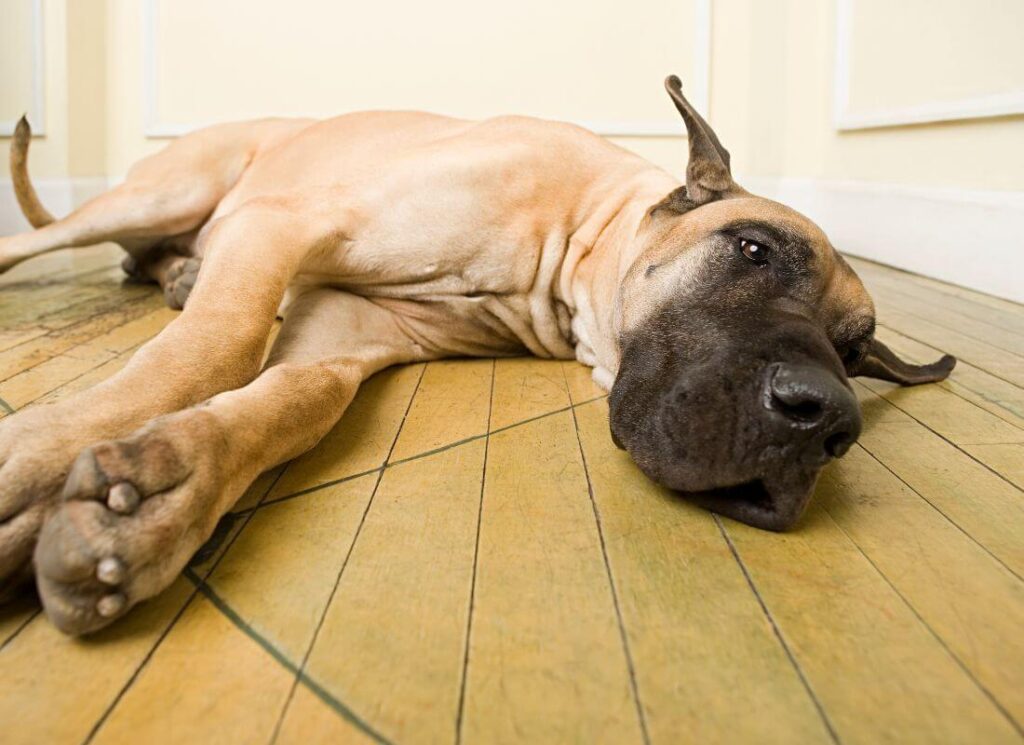
What is DCM in Great Danes?
DCM, aka Dilated Cardiomyopathy, is a heart condition that is characterized by an enlarged heart. This enlargement makes it difficult for the heart to pump blood effectively, and as a result, the dog’s body does not get enough oxygen. As you can imagine, this is a dangerous and often devastating condition for any Great Dane.
Sudden cardiac death is a common and devastating complication of DCM.
There are two types of DCM in dogs: primary and secondary.
Primary DCM is thought to be genetic. Only a small handful of breeds are prone to genetic DCM, and Great Danes are one of them.
Secondary DCM is caused by unbalanced nutrition, or may also be the result of an infection or other underlying health condition.
We will dig further into both forms of dilated cardiomyopathy DCM in dogs, as well as prevention and treatment protocols below!
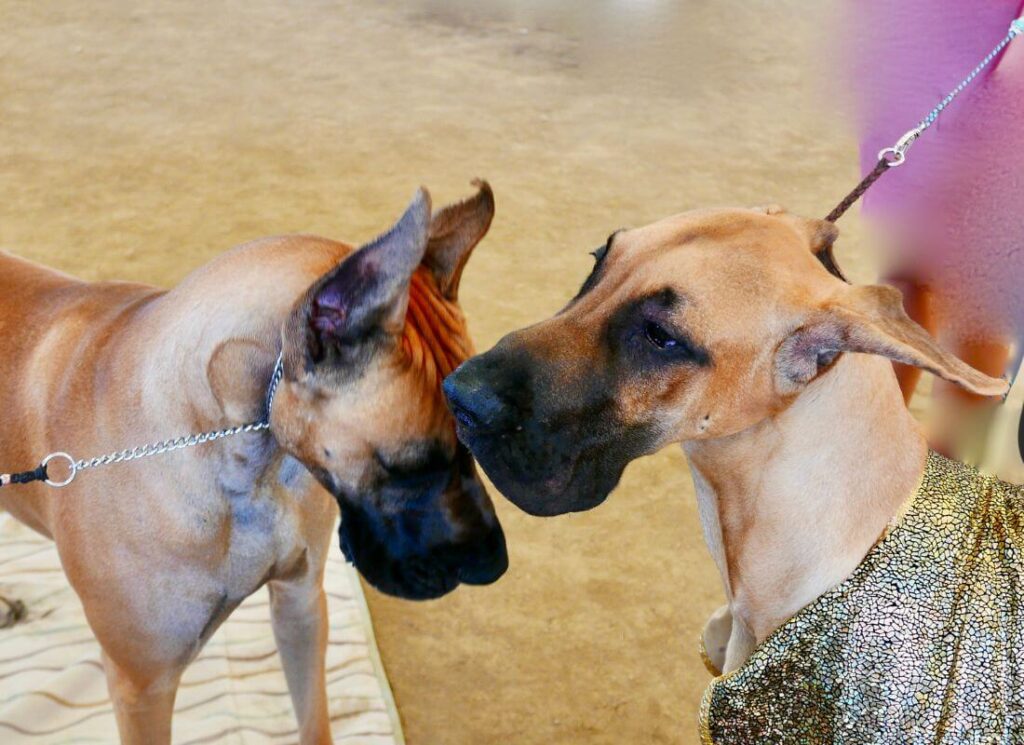
What are the symptoms of DCM in dogs?
The unfortunate reality is that many dogs who have DCM, especially secondary DCM (more below) present with little to no symptoms at all until it’s too late.
Sudden death is a common complication associated with this disease, and will often take the lives of young dogs who appear otherwise healthy. Sudden congestive heart failure is devastating.
In dogs that do present with symptoms associated with DCM, exercise intolerance is often one of the first signs.
Many people mistake this lowered energy with aging or laziness.
Exercise intolerance means that your dog will tire easily during activities that he used to be able to do with ease.
You may also notice that your dog coughs, has difficulty breathing, or has a lower tolerance for heat.
Other DCM symptoms include:
- Loss of appetite, including anorexia
- Weight Loss
- Abdominal Swelling
- Weakness & exhaustion
- Poor circulation and capillary refill, including pale gums
- Blue tongue
- Pulse deficits
- Lethargy
- Fainting or collapsing
These signs can be easy to overlook because they are often gradual and not specific to heart disease.
However, if you notice any of these changes in your dog it’s important to contact your veterinarian right away.
A basic ‘vet check’ or wellness check does NOT rule out serious heart conditions; echocardiograms are one of the only ways to verify changes to the cardiac muscle that point to canine cardiomyopathy.
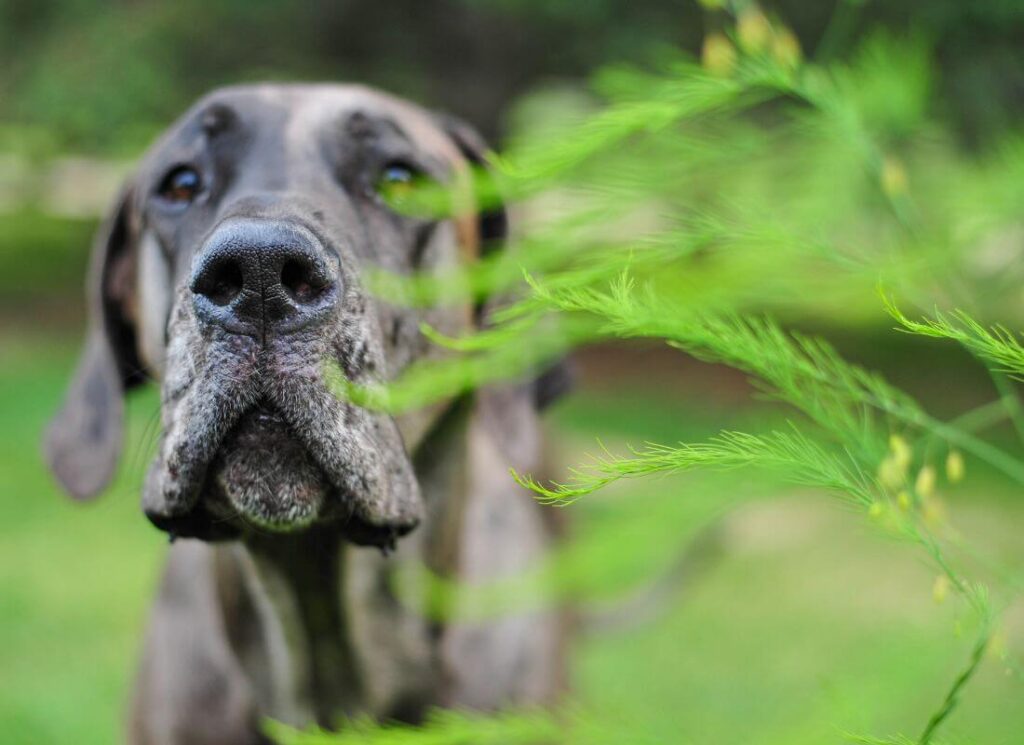
How long can a Great Dane live with DCM?
Because Canine Dilated Cardiomyopathy symptoms are often overlooked, many affected dogs may be receiving treatment too late.
It’s important to remember that there is no cure for primary (genetic) DCM and it is a progressive disease. This means that even with treatment, the condition may continue to worsen over time.
Dogs with genetic DCM have a guarded prognosis and often do not live more than a year or two after diagnosis, even with treatment.
Secondary DCM, however, is often treatable and may even be reversible if the underlying cause can be identified and corrected.
For example, if your dog has secondary DCM caused by an infection, successfully treating the infection and the underlying cause of it will often improve heart function.
Or if you are feeding a boutique food diet, home cooked diet, or a diet with a lot of pulse ingredients or potatoes, and your dog is diagnosed with secondary nutritional DCM, switching to a different food from a heavily researched brand (such as Purina or Royal Canin) has been shown time and time again to help or even reverse the disease.
It’s important to work closely with your veterinarian and your veterinary cardiologist to create the best treatment plan, based on the underlying reasons for it.
There is no one-size-fits-all approach to treating canine Dilated Cardiomyopathy, and depending on the cause and severity, the course of treatment will often need to be adjusted as the disease progresses.
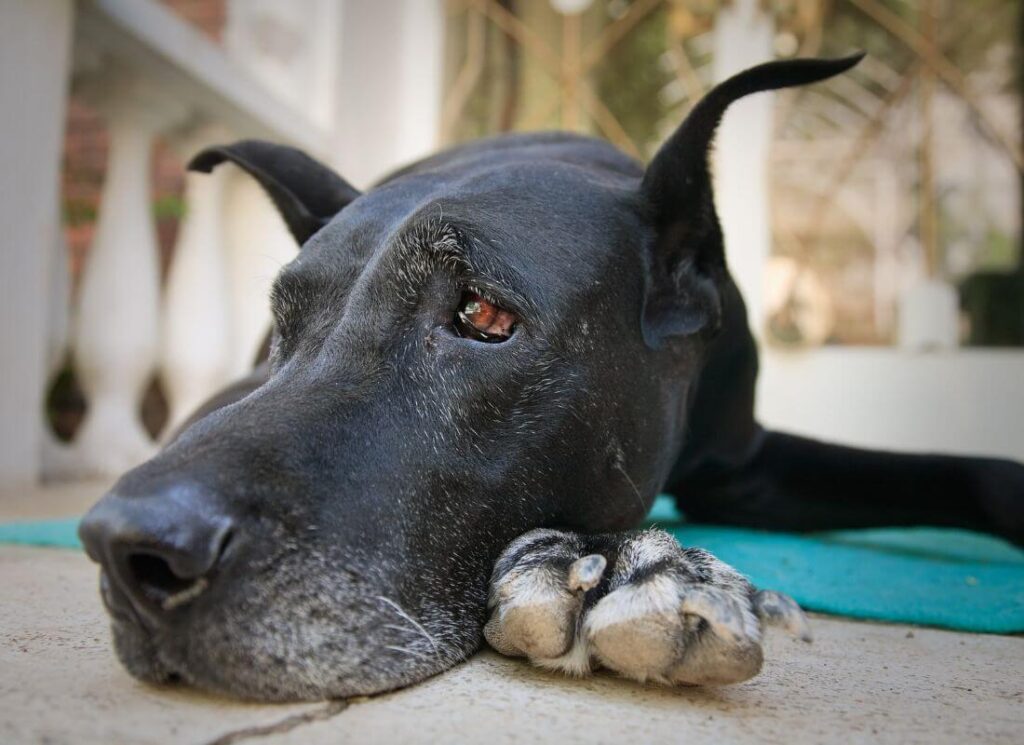
What dogs are prone to DCM?
Some dogs are more prone to this condition than others, however, all dogs are at risk (especially when it comes to secondary nutritional DCM).
Dog breeds that are especially prone to canine dilated cardiomyopathy include:
- Great Danes
- Boxers
- Newfoundlands
- Doberman Pinschers
- Cocker Spaniels
- Irish Wolfhounds
Of these breeds, Great Danes have some of the highest rate of DCM.
Because Great Danes already have a major genetic component to consider, it’s even more important to be educated about the role that nutrition might play in dramatically increasing our dog’s risk of developing this disease.
Does Grain-Free Food Cause DCM in Dogs?
What are the Best Foods to Feed a Great Dane?
How do I Keep my Great Dane Healthy?
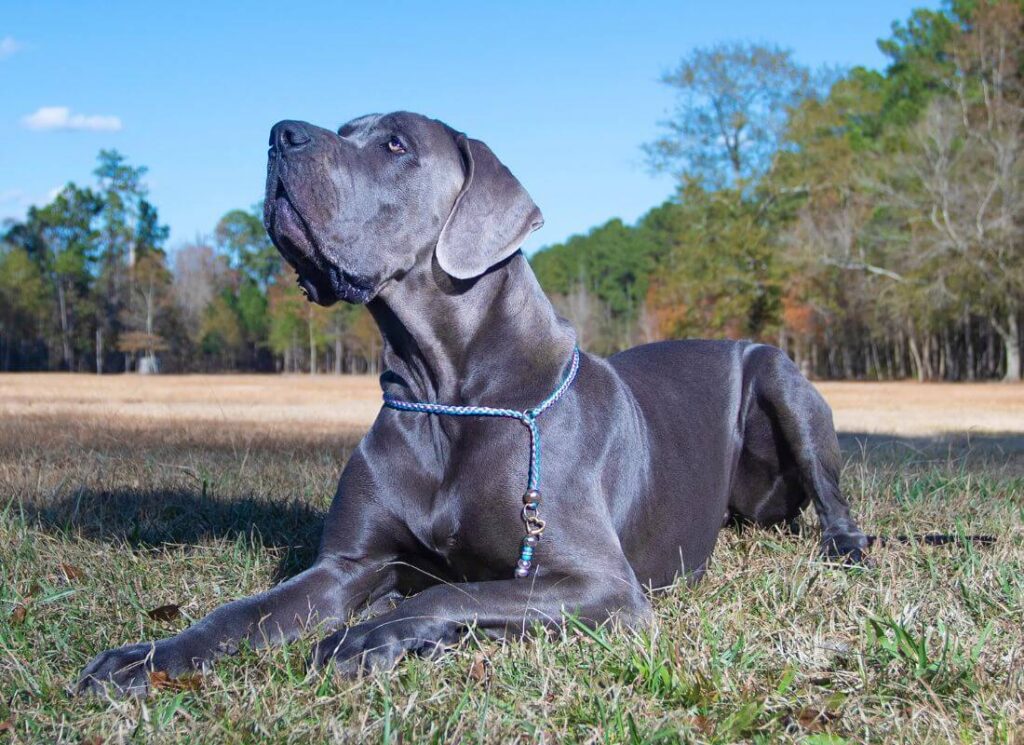
Diagnosing Dilated Cardiomyopathy DCM
As before, many affected dogs are asymptomatic or have mild symptoms that are easily mistaken for other more mild health issues.
Exercise intolerance, or an abnormal heart rhythm or breathing pattern will often be among the first (easily missed) clinical signs that a dog is in the early stages of dilated cardiomyopathy.
Affected individuals may also tire easily during exercise, may have a blue tongue (a possible sign of low oxygen supply resulting from poor heart function), or may cough after physical activity.
As the heart disease progresses, dogs may experience an increased heart rate, irregular heart rhythm, fluid retention (often manifested as weight gain with no change in diet), weight loss, and fainting episodes.
In its final stages, DCM can cause congestive heart failure, which leads to sudden death.
An ultrasound examination of the heart contractions, heart muscle, and blood flowing through the heart can provide a veterinary cardiologist with important clues about the heart disease your dog is facing.
Should I Feed Puppy or Adult Food?
The Ultimate Great Dane Feeding Chart
Everything You Need to Know about Great Dane Puppies →
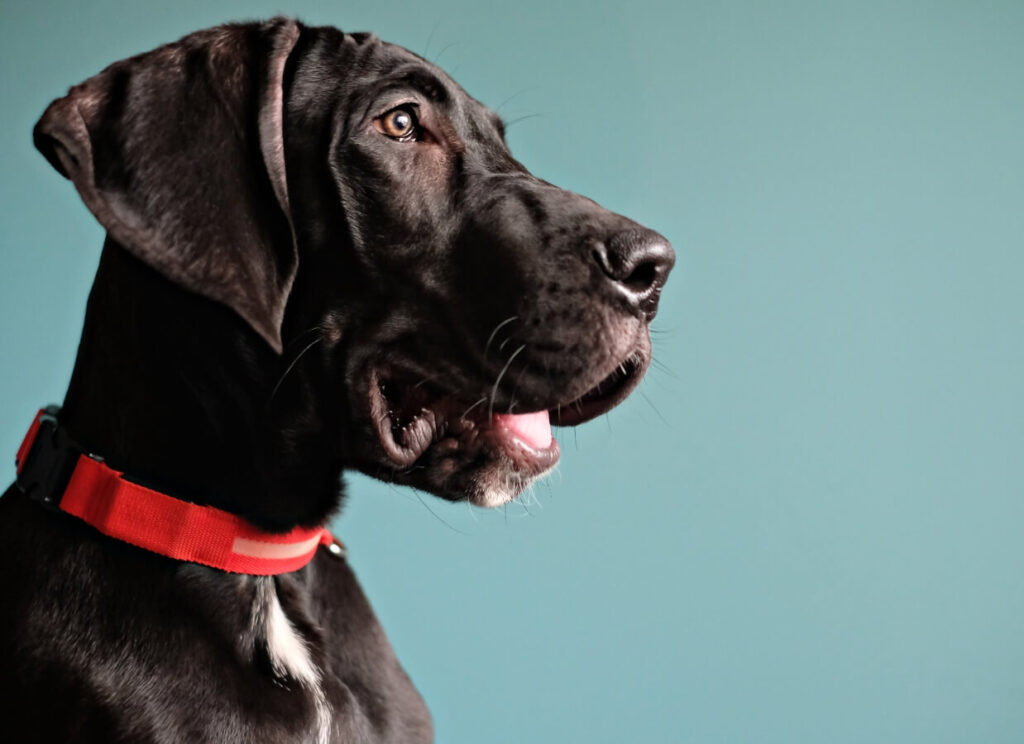
Primary Dilated Cardiomyopathy (Genetic)
Severe congestive heart failure is an early killer of young dogs who have a genetic predisposition to DCM. Great Danes are PRONE to genetic DCM. This means that they receive their bad hearts from their parents.
Like bloat, dilated cardiomyopathy heart disease is directly related to the shorter overall life expectancy of Great Danes.
Every dog that dies suddenly from this devastating disease lowers the average as a whole.
OFA Cardiac Health Testing
OFA (the Orthopedic Foundation for Animals) cardiac health testing is important for all dogs, but it’s especially important for breeds, such as Danes and Doberman Pinschers that are extremely prone to primary DCM.
Ethical breeders will have an echocardiogram performed on each parent dog prior to breeding. This necessary health test can rule out changes to the heart muscle that indicate a possible genetic predisposition to the disease.
They will also do a thorough pedigree analysis to look for genetic factors related to family history.
If a pedigree analysis suggested that the puppies may be predisposed to inheriting canine idiopathic dilated cardiomyopathy, ethical breeders will not breed those dogs.
All of this should be done prior to breeding. Unfortunately, many ‘friendly’ breeders with cute, clean, healthy-looking puppies skip this step. By the time you fall in love with those adorable puppy feet and eyes, it’s too late.
The genetics have been passed on and your puppy may be one of the not-so-lucky ones.
It is important that we hold Great Dane breeders to a high standard. Make it socially unacceptable to breed dogs without full health testing. Do not buy dogs from breeders who are not proving their dogs and fully-health testing the parents before breeding.
Verify that echocardiograms were done by your breeder by searching the OFA database. Your breeder should have the parent listed, as well as the tests that were performed in addition to information about the results.
If your breeder has skipped this test or not registered it with the OFA, you’ve found a backyard breeder.
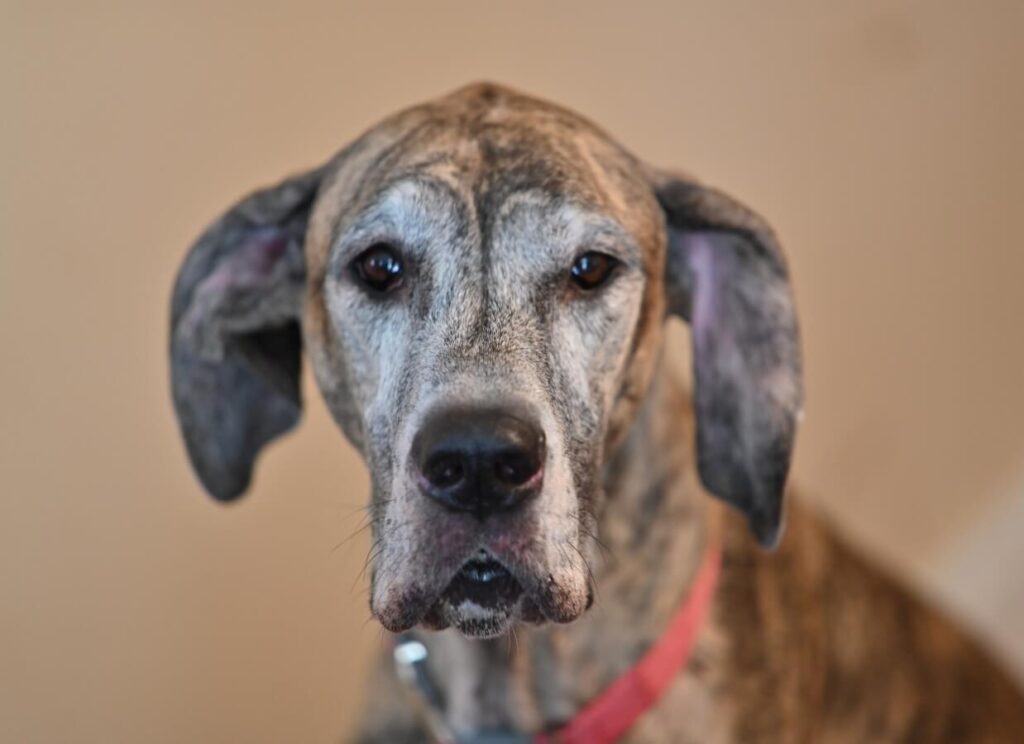
Responsible Dog Breeding
Because Great Danes are a breed prone to a number of devastating health issues, including dilated cardiomyopathy, it’s even more important to be sure that you are working with a responsible breeder.
A responsible breeder will:
Thoroughly health test all breeding stock: heart, hips, eyes, and thyroid results should be available for you to view at www.ofa.org
Have detailed knowledge of the Great Dane breed and how their dogs are excellent examples of the Great Dane breed standard.
Be able to answer any questions you have about Great Danes and Great Dane puppies.
Be invested in the health and well-being of the puppies, and are willing to support them for life.
Choosing responsible breeders means that we are choosing to improve the health of the Great Dane breed as a whole.
When we buy our puppies from breeders who cut corners, we are not only risking the health of our own dogs, but we are also perpetuating the cycle of poor breeding practices that produce sickly dogs and the seemingly endless stream of dogs filling up our rescues.
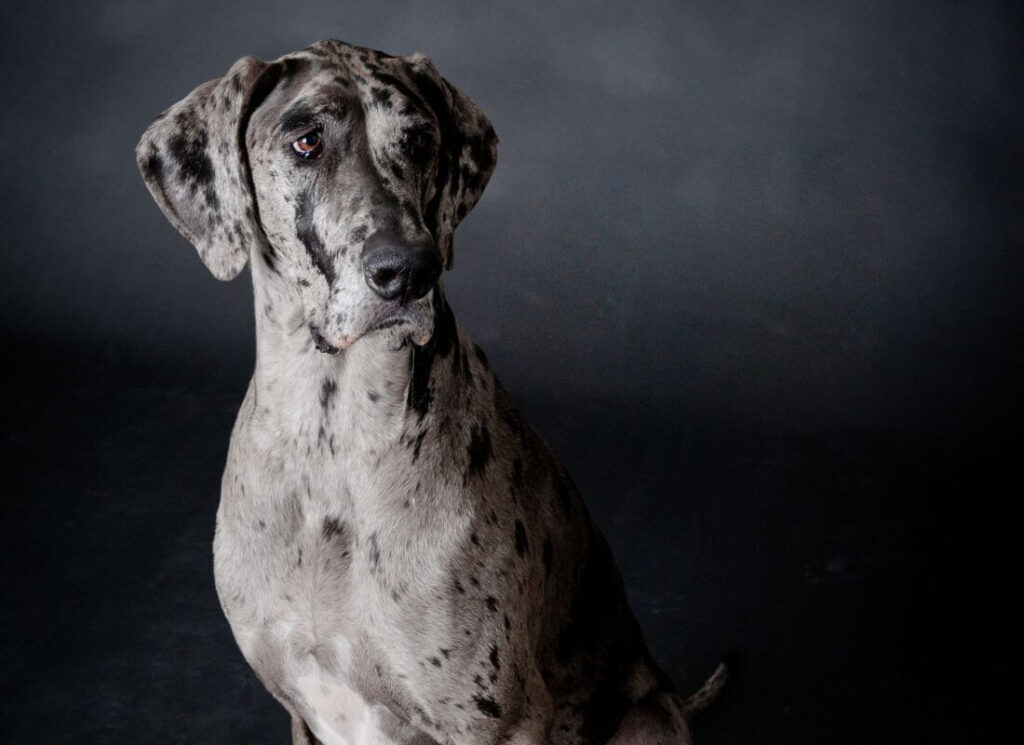
Secondary Dilated Cardiomyopathy (Nutritional)
Nutritional canine Dilated Cardiomyopathy is also a preventable disease. This one is controversial, however, it’s important to discuss.
Clinical findings in multiple studies show that improperly formulated foods, especially those that have a lot of peas, legumes, and potatoes are a suspicious culprit when it comes to N-DCM. While studies are ongoing, new evidence is being collected.
300-400 new boutique dog foods hit the market every year in the U.S. It stands to reason that not all of them are created equal.
Researchers, including board-certified veterinary cardiologists, are currently investigating a link between diets that have a lot of peas, potato, lentils, and legumes and DCM. They are collecting data and encouraging pet owners and veterinarians to report cases of DCM in dogs that are eating suspect diets.
Suspect diets include:
Boutique foods of all kinds (including those with or without grain) that do not have qualified staff formulating the diets they sell
Foods that contain a lot of pulse ingredients or potatoes, including peas, lentils, chickpeas, and beans
Foods that utilize a lot of ingredient splitting to push lentils, peas, or potatoes further down on the ingredients list (including multiple forms of one ingredient such as: whole lentils, green lentils, red lentils, lentil fiber or whole peas, pea flour, pea fiber, yellow peas for example)
Most grain-free foods, which often contain a lot of pulse ingredients as above
Home-cooked or raw diets that are not correctly balanced
Many young giant breed dogs who appear otherwise healthy, have excellent veterinary wellness checks, and show no outward clinical signs will suddenly pass away while playing or in their sleep.
Because these instances are sudden and extremely emotional for dog owners, post-mortem testing by a board-certified Veterinary Pathologist is rarely completed.
It is believed that nutritional DCM is presenting at rates much higher than currently documented. Just look around any DCM topic in the Great Dane community; so many people have experienced this issue with their dog.
It is important to note that many dogs are symptom free until they die suddenly. Many others however, DO have symptoms. Every case is different.
DCM UPDATE – December 2022
Dr. Judy Morgan, DCM, and the FDA Statements (a MUST READ if you want to learn how to spot pseudoscience!)

Dog Foods and DCM in Dogs
Many dog food brands fail to meet certain ethical criteria for the production of dog foods.
- They rarely if ever employ full-time, on-staff, board-certified Veterinary Nutritionists. This means that the food is often put together by people who have little to no appropriate credentials to do so.
- Feeding trials and ongoing testing of the formula used are minimal, if used at all. Boutique foods aren’t subjected to the same research and controls; they only meet nutritional minimums on paper.
- Boutique foods often use 3rd party co-packing facilities. This means that they have less oversight of quality control, consistency, and production.
- Ingredient splitting is a common practice of boutique food companies. This sneaky trick makes the ingredients list look ‘healthy’ and meat-focused when the bag is full of nothing more than meat-flavored peas. Read more about this HERE.
- Unregulated, emotional marketing terms and wild claims are used. These terms are used to intentionally mislead pet parents so they will spend more money to feel good about what they feed their pets.
“Holistic”, “human-grade”, and “super-premium” are just some that you may have heard.
- They rarely, if ever, participate in legitimate AAFCO feeding trials, nor do they contribute to or benefit from the global veterinary science and research communities. This means that YOUR dog is the guinea pig.
You can compare over 600 brands head to head based on this value and others at The Giant Dog Food Project.
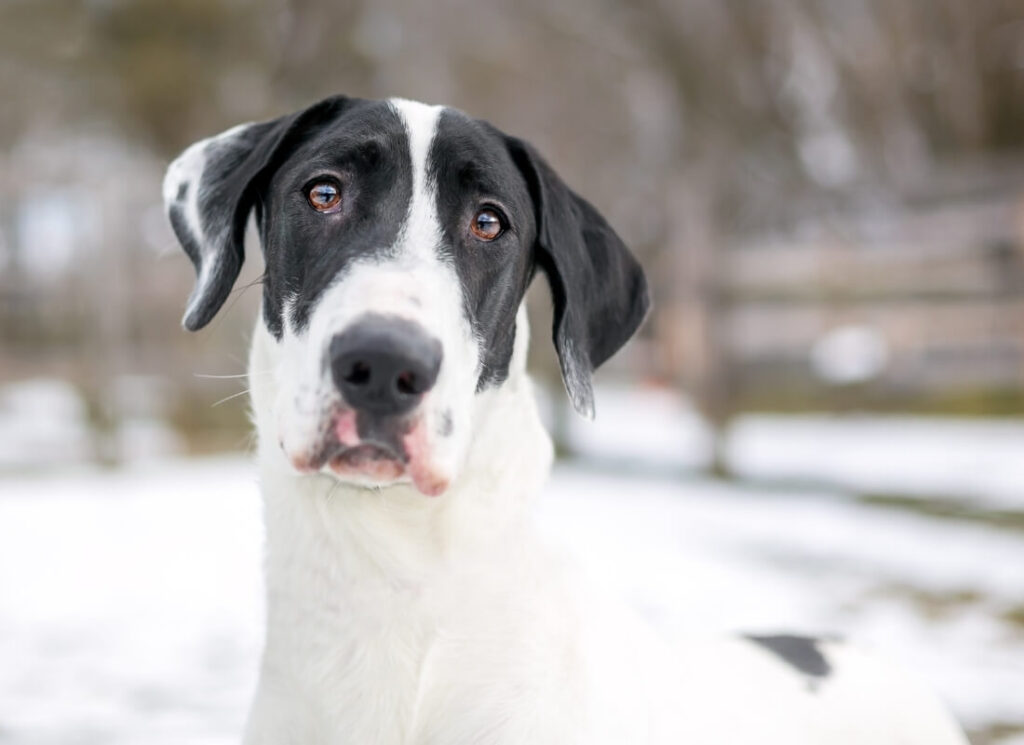
How to choose a dog food that doesn’t cause DCM
The best way to reduce your dog’s risk of nutritional DCM is to feed a high-quality diet from a heavily researched brand with a qualified nutritionist on staff.
Not all dogs fed an unbalanced, boutique, or ‘grain-free’ diet will get DCM! It is being theorized that there are specific mechanisms at play for some dogs and not others.
The problem is, you won’t know if your dog is one of the ‘at risk’ ones until it’s too late.
A good diet will provide your dog with all the nutrients they need to stay healthy. Marketing may have taught you that “these “big” brands are full of ‘fillers’ and junk, but that’s simply not true.
Look for brands that are highly researched and that invest millions of dollars every year into veterinary internal medicine organizations and learning more through science.
The contributions that the ‘Big 5’ food brands (Purina, Royal Canin, Hill’s, Eukanuba, Iams) have made to veterinary research have helped us learn more about not only heart issues but bloat, cancer, wobblers, lifespan, and more. These brands are literally writing the book on companion animal health. Read PURINA research updates from the Great Dane Club of America HERE.
Good food brands will do comprehensive feeding trials so that they can continuously improve their products, and they employ entire teams of dedicated professionals with advanced degrees in veterinary science, food science, quality control, and veterinary nutrition.
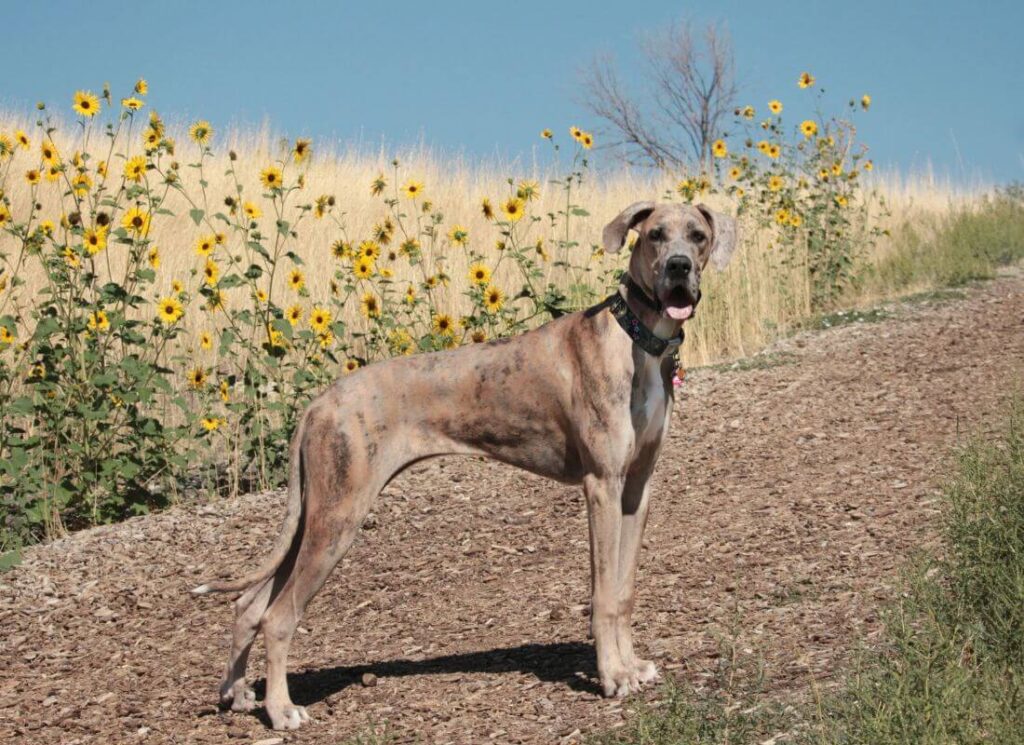
Ingredients in Pet Food
The ingredients that food brands use are there for nutritional reasons, including scary-sounding things such as ‘By-Product Meal’ and ‘corn’.
There is no such thing as ‘fillers’. Even dangerous ingredients such as peas and lentils (used in large amounts) are not ‘fillers’, as they do provide fiber and nutrients.
A legitimate filler would be something like styrofoam, with no nutritional value, that would also result in nutritional deficiencies. The word “fillers” is a marketing term, meant to scare you, but has no legal definition.
So let’s talk about scary ingredients in dog food.
Both by-products and corn are extremely nutrient-dense.
We cannot say the same about ‘fresh farm-raised deboned chicken’, which is literally 70% water.
If you’ve ever given a dog a whole dead chicken, know this: they will eat the WHOLE THING. Eyes, bones, feet, beak, stomach, stomach contents (including grains and yes, corn), liver, and more. The most nutritious part for them is not the watery muscle meat. It’s the ‘guts, bones, and junk’.
By-Products and meat meals are nothing more than the parts of the animal that many humans are often uninterested in eating, that dogs desperately need in their diets!
By-products are not actually waste. They are a secondary product that results from the production of other products.
For example, Cream of Tartar is a by-product of wine making. If you have ever eat Snickerdoodles, which get their flavor from cream of tartar, you’re eating a “by-product”.
Using by-products from the meat industry is better for the environment, too. Why waste food and nutrition if we don’t have to?
If you give your dog a bully stick to chew on, you are giving your dog a by-product.
Boutique companies tend to choose ingredients such as “ancient grains” or “fresh deboned turkey” that look and feel pretty to you (so we buy the food), but not necessarily the ingredients that have been scientifically proven to make your dog look and feel its best.
Don’t believe us? Read our article about ingredient splitting in dog food. This dirty trick is what gives boutique food companies leverage to make you believe their formulas have ‘meat first’.
When it comes to your dog’s health, don’t be fooled by unregulated marketing terms, pretty packaging, “nice” sounding ingredients, or higher price points.
Common small food brands include Victor, Fromm, 4Health, Diamond (also Costco), Instinct, Earthborn Holistic, Acana, Orijen, Solid Gold, Farmina, Nulo, Nutro, and Nutrisource.
None of these brands have a veterinary nutritionist on their side or on their staff.
- Fromm foods are formulated by a chemical engineer
- Victor foods are formulated by a guy with an M.S. in science and an online certificate in nutrition – better, but still not great
- Diamond/Costco/Taste of the Wild/Nutra-Nuggets/Solid Gold are formulated by an unknown person, and checked by an off-site consultant who has an M.S. in Animal Nutrition (underqualified)
What is Ingredient Splitting in Dog Food?
How do I choose the Best Food for my Great Dane Puppy?
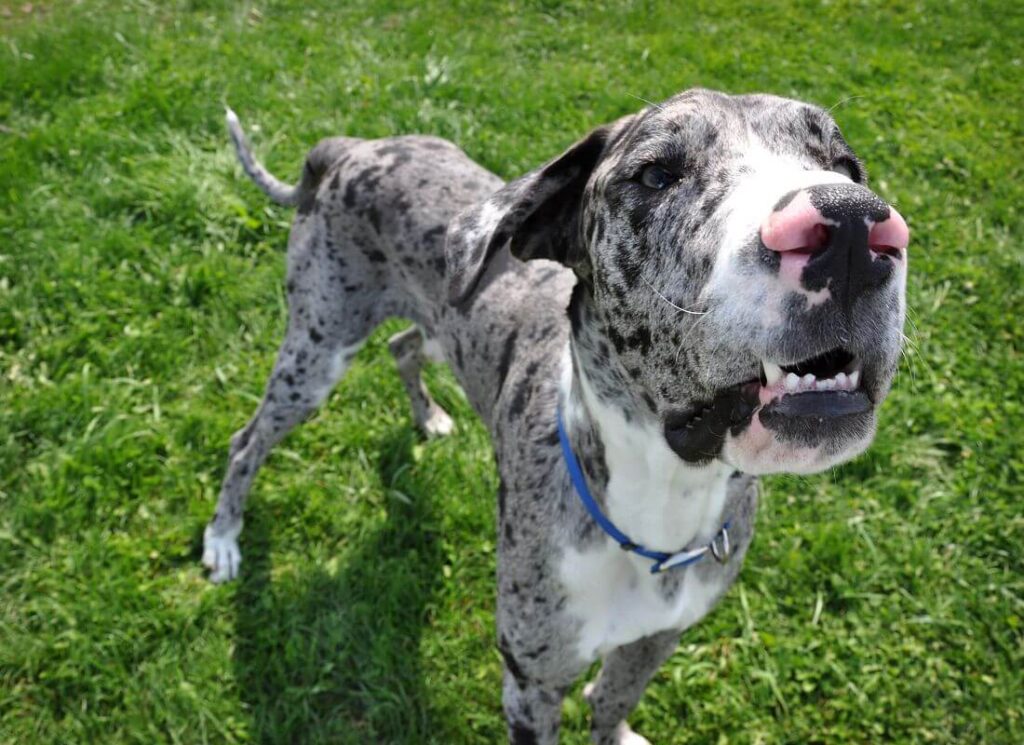
Can nutritional DCM be reversed?
When caught early, nutritional dilated cardiomyopathy in dogs can be managed and is often reversed through an immediate diet change and certain cardiac medications if warranted. This has been proven time and time again.
Many dogs have shown almost complete recoveries from DCM when their owners switched them away from grain-free and boutique dog foods (aka “BEG” diets).
This means that dogs with heart disease should be choosing a brand that is formulated, tested, and researched by on-staff board-certified veterinary nutritionists, and that meets the highest standards for formulation, ethics, and manufacturing practices outlined by the World Small Veterinary Association’s common-sense guidelines for choosing pet foods.
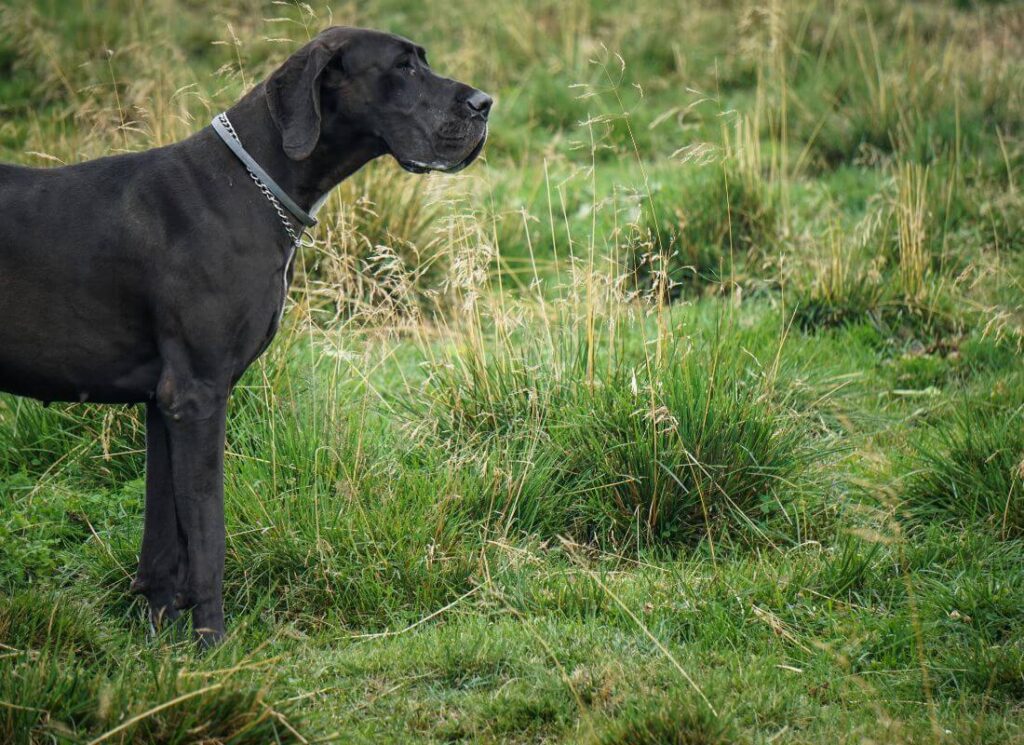
Matilda’s Story
There was a time, long before I wrote this blog post when I was a die-hard boutique dog foods snob.
Over the course of 5 years, I tried Fromm, Nutrisource, Nutro, Farmina, Earthborn, Nature’s Logic, and Nutro.
Those brands told me that my dog would be healthier on their diet, and yet, we switched often trying to find the ‘right food’ because they were not actually healthier! I read ingredients lists until I was blue in the face.
In that time, between my three dogs (two are Danes) I saw:
- Low energy
- Dull coat
- Itching
- Chronic ear and paw infections
- A massive lung infection that resulted in a $3500 vet bill
- Allergies & paw swelling
- Pink skin
- Malnutrition and lack of muscle tone
- Chronic loose stools and ‘sensitivities’
- Acid reflux
- Bed wedding
- Screaming during sleep and becoming unresponsive
- Low heat tolerance
- Blue tongue indicating a lack of properly oxygenated blood
My female Dane Matilda was taking the brunt of the worst of them: reflux, bed wedding, low energy, and strange breathing patterns.
She began screaming in her sleep and would often be unresponsive to waking when I would jump out of bed to see what was wrong.
My veterinarian did a blood test, prescribed supplements and medications, talked about referring us to specialists, and also implored me to immediately put her on one of the “evil Big 5 Brands: Purina, Royal Canin, Eukanuba, Hill’s, Iam’s”.
She also told us to follow up and retest once our dog had been put on more appropriate food.
I had no interest in feeding my dog Hill’s or Purina and was appalled that she would suggest it. My dog was sick, why would I feed her garbage!?
So, I marched myself into a natural boutique pet food store and asked a sales rep for nutrition advice.
Think about this for a moment.
I had a very sick dog and went first to a sales rep on an hourly salary for nutrition advice. Somebody that, for some reason, I trusted more than my veterinarian.
Marketing taught me to trust the opinion of a sales-driven employee with no legitimate credentials, in a sales-driven store, over the opinion of somebody with 8+ years of high-level education followed by years of practice in actual veterinary medicine.
This is terrifying and I want people to be aware of the misguided bias and opinions that boutique food companies have used marketing to lead us to!
I consider myself a well-researched, educated, intelligent dog owner. All of us are susceptible to marketing.
Low energy is often misdiagnosed as ‘aging’ or ‘laziness’. That’s heartbreaking.
How is DCM Treated in Dogs?
The treatment of dilated cardiomyopathy depends on the presentation, symptoms, and severity of the disease.
In addition to recommendations to choose a diet that was formulated by a board-certified veterinary nutritionist and subjected to rigorous research and testing, a cardiologist will often also prescribe medications and supplements that can help with missing nutrients, blood flow, chamber dilation, vascular dilation, and blood pressure.
Veterinary Cardiology is a specialized field comprised of individuals who first completed their veterinary schooling and went on to specialize and become board-certified.
Many of them are investing a lot of research, resources, and science into the study of nutritional and primary dilated cardiomyopathy DCM.
Their contribution to veterinary medicine, and the opinions that they have about the progression of this disease and its causes are valuable and important. You can find information about peer-reviewed research from them below.
Share Your Story
Did you have a dog die suddenly from unknown causes or from a confirmed case of nutritional dilated cardiomyopathy?
If you have lost a dog suddenly and are struggling to understand why, I am so sorry for your loss. Please share your story below, we want to hear it! Others need to hear it, too. Please use our platform for this.
If you are worried that your dog may be developing clinical signs of illness that may point to dilated cardiomyopathy DCM, seek veterinary care and a thorough physical examination immediately.
We also recommend that if you have been feeding a suspect BEG or boutique foods diet (with or without grains and with or without taurine supplementation) that you seek an echocardiogram as a means to catch any changes to the heart muscle at an early stage.
This is recommended even if you are not seeing any other clinical signs of impending congestive heart failure. Early diagnosis of changes to the heart muscle is key.
Resources:
Dilated Cardiomyopathy on Facebook (join this group to see ongoing reports in real-time and read personal stories of veterinary confirmed nutritional DCM cases)
All Trades DVM DCM Timeline (a common sense look at all of the reports, research, and FDA statements surrounding nutritional DCM)
How to Choose a Pet Food – Tufts University (information from veterinary nutritionists with no financial motivations, affiliate links, sales, or ads)
Great Dane Club of America Health Research (Purina Update articles about Great Danes with research on bloat, HOD, wobblers, nutrition, and more)


